IŠMANUSIS MIESTAS X
PAVELDOSAUGA ŠIANDIEN
Medinės Šnipiškės - Tvaraus Šiuolaikinio Vilniaus Pavyzdys
[org. pavadinimas: Experimental Preservation]
 Ieva Davulytė
Ieva Davulytė
University of Cambridge

Medinės Šnipiškės - Tvaraus Šiuolaikinio Vilniaus Pavyzdys
[org. pavadinimas: Experimental Preservation]
 Ieva Davulytė
Ieva Davulytė
University of Cambridge
PIRMA
DALIS
ANTRA DALIS
TREČIA
DALIS
1. Summary in English;
2. Literature study and the MArch disertation (only in English);
3. Projekto tikslas, uždaviniai, darbo sudėtis;
4. Esamos būklės analizė ir Teisinės bazės ir reglamentai;
5. Funkcinė, erdvinė ir architektūrinė idėja bei darnios koncepcijos aprašymas;
6. Transporto ir pėsčiųjų srautų sprendimai;
7.Projektuojamų pastatų inžinerinių sistemų sprendiniai bei naudojamos išmanios technologijos;
8. Projektuojamų pastatų energetiniai rodikliai;
9. Tvarieji sprendimai bei atsinaujinančių energijos išteklių panaudojimas;
10. Projekto ekonominiai sprendimai;
11. rėmėjų produktų panaudojimas;
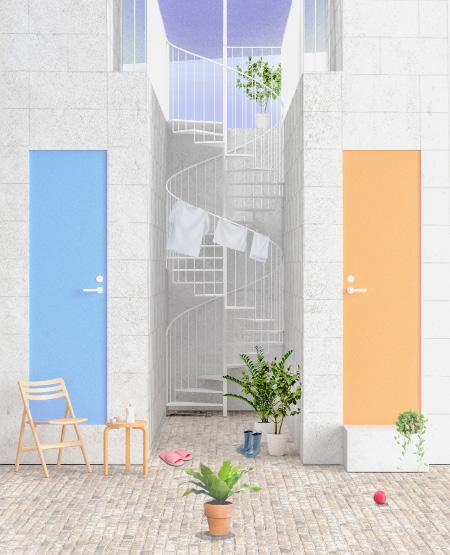
They [The Arcades] are the residues of a dream world. The realization of dream elements, in the course of waking up, is the paradigm of dialectical thinking. Thus dialectical thinking is the organ of historical awakening.
- Walter Benjamin
The term crisis comes from the ancient Greek word kríno, which means to decide. Even though the word crisis has acquired different meanings in different disciplines, the crisis experience typically refers to a feeling of uncertainty with a sense of urgency to take action needed to avoid or minimize negative outcomes. It is the ”crisis of historicity” that this project is concerned with: a persisting inability to integrate knowledge of history with the lived experience of the everyday. The crisis of historicity usually refers to the Western world in the late-modern period, when the cultural sphere became dominated by ”the newly organised corporate capitalism.” Yet, this project explores the cultural crisis of today within the context of transitional capitals: the former Sovietized countries of Eastern Europe. The post-independence race for progress has caused rapid economic and political transformations, resulting in institutionalisation of the slower transitioning cultural realm. As a result, there is a feeling of an increased pace of time and prescribed cultural identity that has little to do with the current way of living. In Vilnius, Lithuania, the current cultural debates are being dominated by state-imposed images of a progressive Western capital. As a result, the existing buildings, sites and neighbourhoods that do not seem to possess the expected Outstanding Universal Value do not classify as part of the presented future. Consequently, with the slightest financial interest in place, they become construction plots for whatever that would. Heritage today does not ”agree” with the present, it comes from the beautiful past and from there carries on to the beautiful future. This, is why there is a need for re-establishing historical present. Only then could it be possible to begin revaluing the qualities of today and seeing those becoming part of the past, the present and the future. Qualities that are real, of every day and even the ones of precarious nature. This essay tries to search for ways, how heritage discourse could help one to start considering the uncertain and unstable as part of our culture, especially in the case of transitional capitals.
The current cultural transformation is different from those experienced before, therefore there is a need for a constant questioning of what the present culture is, should be and how to see it. This project concerns itself with “medinės Šnipiškės”, a central neighbourhood of a transitional capital, Vilnius. It argues that - the economically insecure and socially fragile - “medinės Šnipiškės” is a defining place for today’s culture of Vilnius. The essay attempts to engage with the following questions: To what extent should heritage discourse be institutionalised? How can one explore X capacity as heritage? How are the proposed methods informing about its potential as heritage? The search for answers in itself will contribute to the broader inquiry of how heritage discourse can lead the discussion on the cultural crisis happening today in transitional capitals. The inquiry begins by investigating why “medinės Šnipiškės” could be a place defining current cultural identity of Vilnius. This is followed by a chapter reviewing possibilities for identifying ourselves with the present and investigating if heritage discourse allows that to happen. The third chapter studies conservation of heritage as a public discourse. The fourth chapter proposes two critical conservation methods to gauge the capacity of “medinės Šnipiškės” heritage and tests them as ways to reify one’s cultural present. Finally, the concluding chapter discusses the results and implications of the research.
I wrote this essay through the lens of someone who is not from “medinės Šnipiškės” but was born in Vilnius. Through the lens of someone who has no personal memories of “medinės Šnipiškės” but has been aware of its existence. Even without a close relationship to the location, this essay is undoubtedly influenced by my sensibility to Vilnius past, present and future. Also, in this essay, I see the preservationist as a critic and a determiner of culture. The preservationists choose heritage, they make decisions of what form of the present will become a memory of the future. They always do that through their personal lens. Within the scope of this essay, I am making the choice, and I am the critic. Besides caring deeply for Vilnius, my personal lens also involves an architectural background. Like Lee Friedlander’s photographs,8 this text has a shadow. It is a shadow of me, and I would like to encourage the reader to stay aware of it while reading. This is important because even though within the scope of this essay I took the role of a preservationist - I chose specific research methods, chose what to photograph, chose what to write - this essay argues that the role of the preservationist can be taken up by anyone concerned.
“Medinės Šnipiškės” is a place where collective maintenance is the foundation of domestic living. When an act becomes collective it acquires a broader social and spatial dimension and in “medinės Šnipiškės”, all of these constant acts of exchange have almost encrypted space to something that is hardly readable to a foreign eye and even harder to see its value. Is collective maintenance a lifestyle that provides security and comfort that many in the context of a transitional capital would be seeking? With this project I am not arguing for the informality that the current environment of “medinės Šnipiškės” provides, I aim to decrypt spaces in “medinės Šnipiškės”, identify clear values, and propose a design that would preserve them but also fit the needs of contemporary society.A neighbor mowing a shared lawn is being offered a warm lunch in exchange. This is one example of collective acts in “medinės Šnipiškės”, but it is a good one to see how spatial it can be. So even though I admit that the physical form might need to change there is a constraint to keep locals, their belongings, their habits, and their social and intergenerational connections in place. As if I would insert “medinės Šnipiškės” in Smithson’s essay on 6 East.
Think of [“medinės Šnipiškės”] as a farm building with the mostly old machines from the old farm being moved in… but with some new, for the farm processes that are new.
Think of it as a farm with the old farm workers moving in… with their ordinary old things and their ordinary new things from the ordinary shops for the domestic processes that are changing.
With the design project “Eperimental Preservation” I respond to Vilnius municipality interest in understanding how a city could develop such individualistic forms of urban space while both keeping the current charatcter of place as well as responding to high land price and value. The design project has a scale of a street connecting Krokuvos and S. Fino streets. Currently there is a labyrinth likeunpaved street lingering in a curved line which is hardly defined by any physical objects but rather a feeling. In reality, the complex form of the street is caused by the form of land parcel borders which due to the complex history of the place (please refer to the lit. study) are rather non-uniform (please the land parcel map in the article 4). This design imagines the scenario of needing to densify the neighbourhood and even replace some of the current houses which are not in acceptable condition, therefore the proposition mostly includes new-built structures.
The main ddesign element that forms each of the new structure is a hearth (liet. pečius). A hearth historically has always symbolised the center of the house and household. It used to be place on which we cook, do the washing and even sleep. Hearths have always supplied households with necessary amenties for the domestic life at the time: fire, heat, warm surfaces. However these amenities for the contemporary household are not enough and burning wood for heat is seen as a risk. Therefore this project proposes asustainable way of using a harth while keeping and even enhancing it’s symbolic dimension. The hearth here supplies low-temperature heating radiating through walls of the hearth, pipes of hot and cold water as well as ventilation pipes all built in the hearth. The hearth therefore is the first element built and the most important, that is the element around which the domestic life happens.
On more urban scale, hearths form different urban spaces. There are three types of them (collective, individual and a hybrid). Households can choose the level to which they would like to be exposed to the street and to their neighbours. Each house is meant to accomodate oWne to two households and meant to offer an affordable housing solution, where places like kitchen, library, living room, garden shed can be shared. Sharing has always been the strenght of this district and therefore it remains an important element of the design. All ground floor (please see the plan) is meant to be shared between the neighbours , while the second and the third floors are individual and have separate access. Since the history of independent Lithuanian urban living is rather short, this project aims to contribute to it and offer a socially and environmentally sustainable form of domestic living in a city.
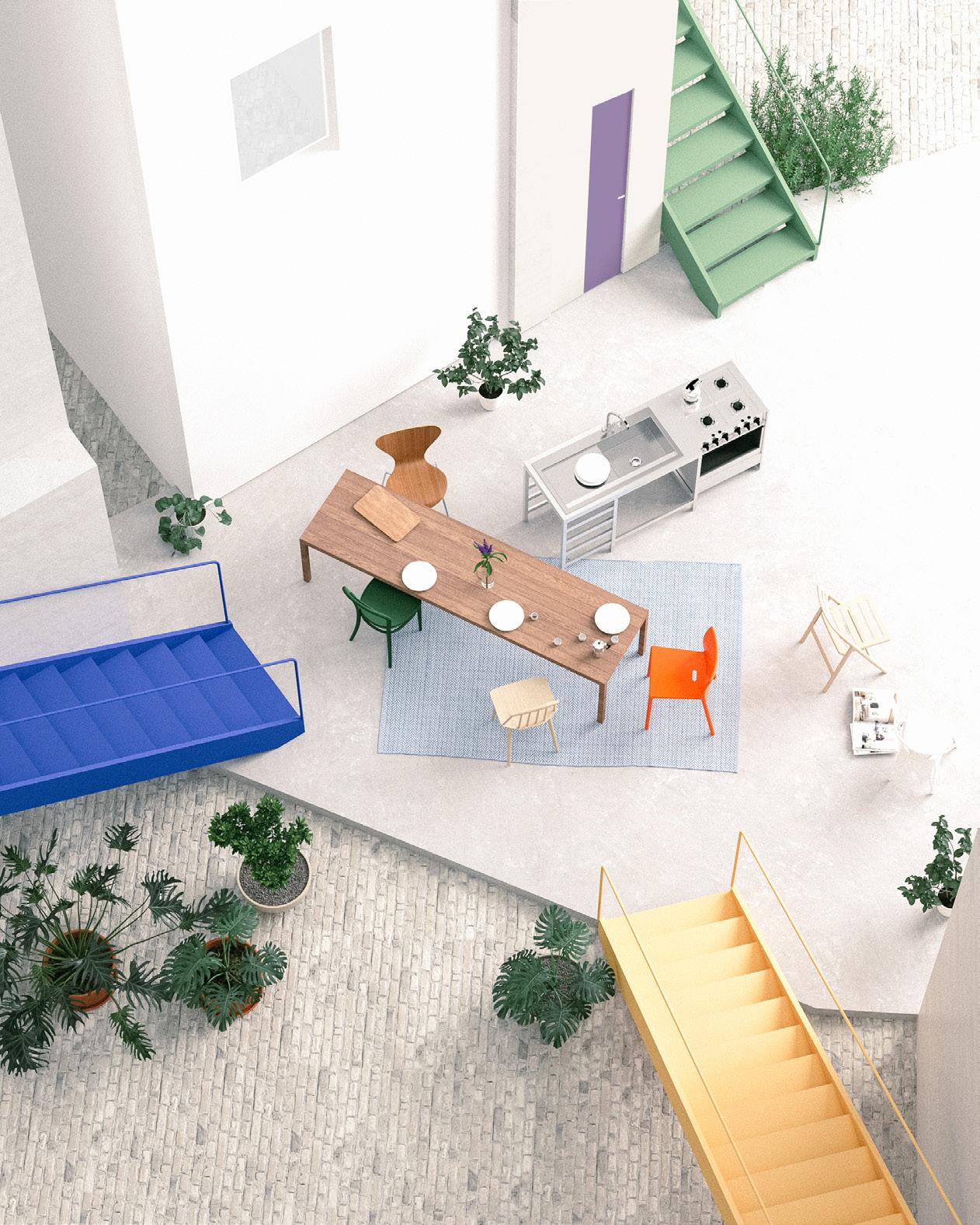
Untill page 79.

0.1AReflectionofaWoodenHouseintheWindowofanOfficeBuilding. ......3
0.2AHouseEntranceinShanghaiwithaSelfBuiltAwning. ..............4
0.3ThreeHousesinShanghai:AllRegisteredasNumber17. ..............5
1.1SandandSaltMixtureinaDepotatGrinda. .....................15
1.2StatueofPetrasCvirkaStoredTemporarilyatGrinda. ................16
1.3TheCHCMeetingRoom,whichRemindsofaChapel.
1.4AnOutdoorBioMassReserveatCHC.
2.1AHistoricalMonumenttogetherwithElementsfromtheEverydayPractice ....27
2.2HistoricalMonumentsWithanElementFromtheEverydayPracticeinBetween Them. ..........................................28
2.3AHistoricalMonumentSupportedbyanImprovisationalHand-MadeFixture
3.1PencilSketchofaFragmentoftheSouthernSideofAltePinakothek.Theoriginal -inblue;thereconstructed-ingreen).
3.2PalazzoAbatellis,IndoorExhibitionSpace.
3.3PalazzoAbatellis:aFragment. .............................38
3.4PalazzoAbatellis,InnerPatioSpace.
3.5PalazzoAbatellis,OneoftheEntrances.
4.1Penonpaper.NeighbourhoodPlan.
4.2Penonpaper.NeighbourhoodPlanZoomed-In.
4.3APhotographofAMiniatureModel:anImaginedBathroominaGreenhouse.
4.4APhotographofAMiniatureModel:anImaginedCafeteriainanExisting AbandonedHouse. ...................................47
4.5APhotographofAMiniatureModel:aFragmentofanImaginaryBedroom. ...48
4.6TheExhibition:LaundrythatisCuratedaswellasUncuratedLaundryinthe Background. ......................................52
4.7TheExhibition:LaundrywithPrintedDrawingsonit. ...............53
4.8TheExhibition:anExhibitionSignSaying”EXHIBITION”onthetable. .....53
4.9ActsofMaintenanceinShanghai:PhotoEssayMadewhileontheField. .....56
4.10ActsofMaintenanceinShanghai:PenonPaper. ...................57
Thispageisintentionallyleftblank.
They[TheArcades]aretheresiduesofadreamworld.Therealizationofdream elements,inthecourseofwakingup,istheparadigmofdialecticalthinking.Thus dialecticalthinkingistheorganofhistoricalawakening.
Theterm crisis comesfromtheancientGreekword kríno,whichmeans todecide.Even thoughthewordcrisishasacquireddifferentmeaningsindifferentdisciplines,thecrisis experiencetypicallyreferstoafeelingofuncertaintywithasenseofurgencytotakeaction neededtoavoidorminimizenegativeoutcomes.2 Itisthe”crisisofhistoricity”thatthis essayisconcernedwith:apersistinginabilitytointegrateknowledgeofhistorywiththe livedexperienceoftheeveryday.3 ThecrisisofhistoricityusuallyreferstotheWestern worldinthelate-modernperiod,whentheculturalspherebecamedominatedby”thenewly organisedcorporatecapitalism.”4 Yet,thisessayexplorestheculturalcrisisoftodaywithin thecontextoftransitionalcapitals:theformerSovietizedcountriesofEasternEurope.The post-independenceraceforprogresshascausedrapideconomicandpoliticaltransformations, resultingininstitutionalisationoftheslowertransitioningculturalrealm.Asaresult,thereis afeelingofanincreasedpaceoftimeandprescribedculturalidentitythathaslittletodowith thecurrentwayofliving.
InVilnius,Lithuania,thecurrentculturaldebatesarebeingdominatedbystate-imposed imagesofaprogressiveWesterncapital.Asaresult,theexistingbuildings,sitesand neighbourhoodsthatdonotseemtopossesstheexpected OutstandingUniversalValue5 do notclassifyaspartofthepresentedfuture.Consequently,withtheslightestfinancialinterest inplace,theybecomeconstructionplotsforwhateverthatwould.Heritagetodaydoesnot ”agree”withthepresent,itcomesfromthebeautifulpastandfromtherecarriesontothe
beautifulfuture.This,iswhythereisaneedforre-establishinghistoricalpresent.Onlythen coulditbepossibletobeginrevaluingthequalitiesoftodayandseeingthosebecomingpart ofthepast,thepresentandthefuture.Qualitiesthatarereal,ofeverydayandeventheones ofprecariousnature.Thisessaytriestosearchforways,howheritagediscoursecouldhelp onetostartconsideringtheuncertainandunstableaspartofourculture,6 especiallyinthe caseoftransitionalcapitals.
Thecurrentculturaltransformationisdifferentfromthoseexperiencedbefore,therefore thereisaneedforaconstantquestioningofwhatthepresentcultureis,shouldbeandhow toseeit.7 ThisessayconcernsitselfwithShanghai,acentralneighbourhoodofatransitional capital,Vilnius.[0.1,0.2,0.3]Itarguesthat-theeconomicallyinsecureandsociallyfragile -Shanghaiisadefiningplacefortoday’scultureofVilnius.Theessayattemptstoengage withthefollowingquestions:Towhatextentshouldheritagediscoursebeinstitutionalised? HowcanoneexploreXcapacityasheritage?Howaretheproposedmethodsinformingabout Shanghai’spotentialasheritage?Thesearchforanswersinitselfwillcontributetothebroader inquiryofhowheritagediscoursecanleadthediscussionontheculturalcrisishappeningtoday intransitionalcapitals.TheinquirybeginsbyinvestigatingwhyShanghaicouldbeaplace definingcurrentculturalidentityofVilnius.Thisisfollowedbyachapterreviewingpossibilities foridentifyingourselveswiththepresentandinvestigatingifheritagediscourseallowsthatto happen.Thethirdchapterstudiesconservationofheritageasapublicdiscourse.Thefourth chapterproposestwocriticalconservationmethodstogaugethecapacityofShanghai’sheritage andteststhemaswaystoreifyone’sculturalpresent.Finally,theconcludingchapterdiscusses theresultsandimplicationsoftheresearch.
IwrotethisessaythroughthelensofsomeonewhoisnotfromShanghaibutwasbornin Vilnius.ThroughthelensofsomeonewhohasnopersonalmemoriesofShanghaibuthasbeen awareofitsexistence.EvenwithoutacloserelationshiptoShanghai,thisessayisundoubtedly influencedbymysensibilitytoVilniuspast,presentandfuture.Also,inthisessay,Iseethe preservationistasacriticandadeterminerofculture.Thepreservationistschooseheritage, theymakedecisionsofwhatformofthepresentwillbecomeamemoryofthefuture.They alwaysdothatthroughtheirpersonallens.Withinthescopeofthisessay,Iammakingthe choice,andIamthecritic.BesidescaringdeeplyforVilnius,mypersonallensalsoinvolvesan architecturalbackground.LikeLeeFriedlander’sphotographs,8 thistexthasashadow.Itisa shadowofme,andIwouldliketoencouragethereadertostayawareofitwhilereading.Thisis importantbecauseeventhoughwithinthescopeofthisessayItooktheroleofapreservationist -Ichosespecificresearchmethods,chosewhattophotograph,chosewhattowrite-thisessay arguesthattheroleofthepreservationistcanbetakenupbyanyoneconcerned.

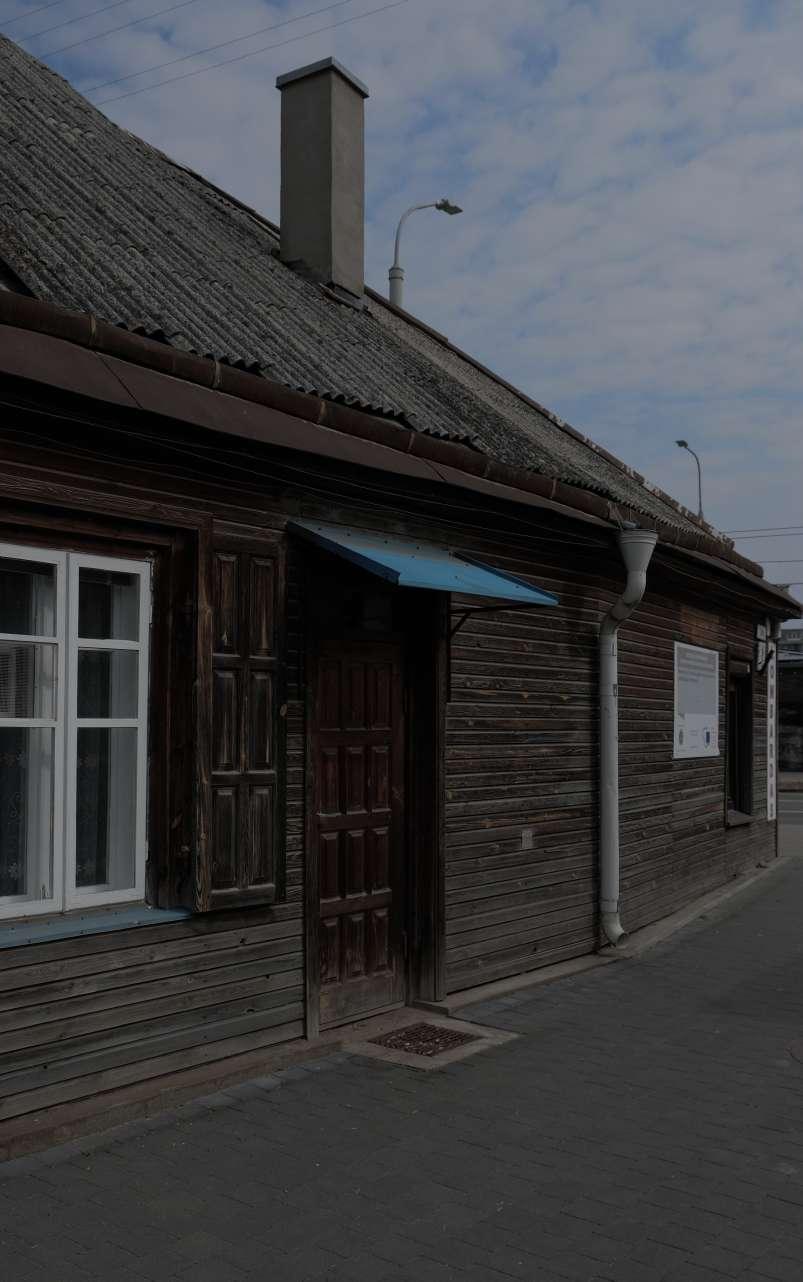
Figure0.2: AHouseEntranceinShanghaiwithaSelfBuiltAwning.

Figure0.3: ThreeHousesinShanghai:AllRegisteredasNumber17.
Thereishardlyaregionintheworldthathasundergoneamoredramatictransformationover thepasttwentyyearsthantheregioncomprisingtheformerSovietizedcountriesofEastern Europe.1 Theterm transitionalcountries hasemergedtostudytheprocessandconsequences ofsuchtransformation.Theturbulenttransitionperiodstartedwiththeabruptwithdrawal ofcommunismin1989andthesubsequentdissolutionoftheSovietUnion.2 Eventhough eachofthetransitionalcountriessoondifferentiatedfromoneanotherduetotheirdegreeof democratizationandindividualprogresstowardthefreemarket3 ,thespeedoftransformation andtheextentofsocialturbulenceaccompanyingitarecommonfeatures.4 Theattentionof thisessayisdevotedtoLithuania,wherethestudywascarriedout.However,thereisnoaim toprioritizethecontextofLithuaniaoverthatofanyothertransitionalcountry.Currently, literatureontransitionalcountriestendstofocusonthepassagefromthecentralizedplanned economytothefreemarket.Instead,thisessayarguesforamoremultidimensionalapproach.
Whathappenedwithcultureduringthetransformation?Thetransitioninthisessayisseen asacomplexprocessencompassingeconomic,political,andideological,aswellascultural aspects.5 Infact,havingtheculturaldimensioninmindwhentalkingabouttransitioniscrucial, sinceitdoesnottransformasrapidlyasthepoliticaloreconomicaspects.6 Theadjustment ofculturedependsonsocietyanditscertainculturalorientations,norms,principles,and values.7 Muchlikeinthecasesoftheothertransitionalcapitals,theauthoritiesinLithuania haveoverestimatedtheproportionofsocietybenefitingfromthepromisedbrightfuture,as wellaspeople’swillingnesstoendurethelackofagencythatitprovides.8 Giventheabove, theprojectedprogressiverealitywithitsoften-rushedimplementationhasdominatedVilnius’
socialandculturalspherefordecades.Namely,itistheendlessconstructionofthefuturethat definesthecurrentstateofVilnius.ItisasifVilniushasenteredtheglobalstateofwhatRem Koolhaascalls“Junkspace”:astateof‘endlessbuilding’thatseemstoneverclose.9 HalFoster putsitconcisely:
Junkspacethusconcernstimeasmuchasspace:itisaneffectofthecontinual transformationofspaceaccordingtotheacceleratedtemporalityofconsumption, nottomentionoftheprojectedtemporalityofspeculation.InJunkspaceupgrades aresofastthattheyaredifficulttodistinguishfromthebreakdowns;‘insteadof development,itoffersentropy’,and“underconstruction”becomesapermanent stateofaffairs.10
Thelackofknowledgeaboutthefutureisscaryandhardtoacknowledge.Consequently,this fearoffacingthefutureleadstoinsensitivetransformationoftheenvironmentintowhatseems favourableandprovidescertainty.Forinstance,Vilniusasatransitionalcapitalhasundergone adramaticurbanredevelopmentbecauseofagranddesiretoattainanimageofWestern globalcapital.11 Soonenough,theprojectedfuturehasstarteddefiningthepresent.Even thoughthegrandshifthaspassedandcurrentlythedevelopmentofVilniusisfollowingamore ”natural”pace,theconsequencesofthemajortransformationremain.12 Thisessayfocuseson thefollowingone.Theauthoritiesandinstitutionshavesettheimaginedfutureasthefocus forthepresent,aswellashaveadjustedpoliciesaccordingly,disregardingunderprivileged communities,althoughthetransitionbeingoneofthemainreasonsoftheirdistress.
ObservingVilniusinitsentiretyunfortunatelyrequiresabiggertimeframethanthis researchoffers.Therefore,followingtheadviceofAldoRossiin”TheArchitectureofThe City”,thisstudywillstartlookingatcurrentVilniusthroughtwourbanartefacts: Grinda and CHC.Grindaisamunicipalcompanyanditsmaintaskistoprovidemandatoryinfrastructure maintenanceservicestothecityofVilnius.CHC,alsoknownasCentralHeatingCentre Vilnius,isthemainheatsupplierforthecity.Theaimistoseewhattheirtemporalandspatial complexitiesrevealaboutthecurrentculturalconditionofVilnius.
GrindaisthebackstageofVilnius.TwoemployeesofGrindawelcomemeintotheterritory. ThefootprintofGrindacurrentlycomprisesaround20acresofland.Walkingthroughthose 20acresfeelslikewalkingthroughVilnius.WeenterGrindathroughanenormousfieldof cars.Carsofdifferentsizes,differentshapesbutallinorange.Irealisethatthesearethesame carsIseehummingaroundVilniusstreetseveryday:collecting,cleaning,distributing,fixing, shipping,andevenmore.Continuingfurther,Inoticemountainsofsandandsalt.[1.1]It meansVilniusispreparedforwinter.Whilewanderingthrough,westepongrass-thisisa fieldforVilniuscityrabbits.Weleavetherabbitsundisturbedandcontinueourwalktowards
anenormousstatueofJohnLennon.Inthebackground,wesuddenlyspottallhuman-like objectsallcoveredinblackcloth.Whatarethose,Iwonder.Iamallowedtoliftthecloth andpeakthrough.[1.2]ItisastatueofPetrasCvirka:aprominentLithuanianwriterwho hadaffiliationswiththeSovietgovernment.Nexttoit,Iseemoreofthosestatuesthatjust amonthagowereapartofVilniuscityscapebutarenowallremovedduetotherecently establishedpolicyofculturaldesovietization.ThestatueofJohnLennontogetherwiththese remnantsoftheSovieterastandherewithnocleardestiny.Pastthestatues,weapproacha pond.Thereisapathalongthepondwhichwefollow.Hundredsoftreeguardsliealong thispath.”Whyareyoukeepingthem,”Iask.Theresponseishonestandclear:”Thetree guardswerecollectedlastyearbecauseofthecurrent free-the-trees policy.Theywillchange theirmindssoonanyway.”Wecontinuewalking,climboverafence,continuewalkingagain. GrindaemployeeexplainsthatthislocationistemporaryandthatGrinda’splaceofresidenceis plannedtochangeinthenearfuture.Immediatelyafterthiscomment,wediscoverasitefullof differentobjects,alllaidoutoutdoorsonthelawn.Bricksofdifferentcolours,tilesofvarious sizes,steelpiecesthatdonotremindmeofanythingfamiliar,alotofthings.Apparently,these aretheleftovers:materialsthatweremeanttobeinstalledinthestreetsbutwerenotdueto differentreasons.TheyarenowpartofthelandscapeofGrinda:temporarilywaitingtobe givenawayormaybesoldormaybetofindtheirplacesomewhereinthestreetsofVilnius again.Nooneknowstheirdestiny.WhatkeepscomingbacktomymindisthatGrindahosts allthoseobjectstemporarily,butisatemporaryplaceitself.Beforewepartways,oneofthe employeesofGrindasayswithasmile:”IfyouseesomethingonthestreetsofVilniusandyou don’tknowwhoisgoingtotakecareofit-it’sus”.Itwouldbeimpossibletolistallthethings Grindadoes.ThefactthattheobjectswefoundareallstayingatGrindajusttemporarily, becauseofthecommonfeelingthatthepolicywillsoonchangeagain,indicatesthetemporal natureofVilniustoday.GrindaisaninstitutiondealingwithandreflectingVilnius’temporal complexity.
”WelcometothemonsterofVilnius,”IamgreetedbyoneoftheemployeesofCHC. CentralHeatingCentreisresponsibleforsupplyingheattoover200,000clientsandover7,000 buildings,whichaddsupto758,000metersofpiping.Itisavastlandscapewherehorizon becometangledinpipes,chimneysreachthesky,andyellowvestedfigurespopupunexpectedly intinygapsofmachinery.Iamtakingaguidedtourthroughtheterritory.Whilewalking,I amalwaysfollowedbyagroupofpipesonmyright.Idonotknowwhatthosepipescarry, iftheirsurfaceishotorcold,andwheretheylead.Thepipesmakealeftturn,weturnleft too.WeturnonemorecornerandfindourselvesinwhatIwouldcomparetoamassivecar park.Yet,itisnotfilledwithcars,itisfilledwithhillsofbio-mass.IamnotsurewhyIamso surprised.MaybeitisaheavydoororayellowsignthatIwasexpectingtowarnmeforthis
suddenswitchofscenery.Thereisawallobstructingthehorizonandseparatingtheasphalt groundfromthenaturallandscapebehindit.Yellowpaintedbutsmudgedlinesalsoimply somesortofboundaries.[1.4]Inoticeaverysmallchimneywhichappeartobeconnectedto therecentlyacquiredbio-massboiler.Weleavethehillylandscapeandwalkout,following theasphaltpath,nowcoveredinash.Asthelastpartofmyvisit,Igettolistentoalectureon ashanditsreusepotential.”Thisisourchapel,”ourguidesayswithasmileandcontinues, ”Itisjustsomeplacewedecidedtoholdourmeetings.”Ametalgateopens,andsoonweare walkingdowntheaisletofindseatsforthelecture.[1.3]Whydoesthisplaceraisesomany questionstome?Maybeallheatingstationsacrosstheglobehavesimilarstructures,Idon’t know.Afterthinkingaboutthisforawhile,Ihaveaguess.CHCisavastlycomplexplace, feelschaoticanddisorientingforapasser-by,yetitisthesameplacethatprovidesthepasser-by withastablesupplyofwarmthandcomfortbackhome.Withthepipesimpossibletounknot, naturalhillsofbio-massinthecarpark,andstrangenessofCHC’scontemporaryapplications, thisheterogeneousandchaoticinfrastructureofthings,buildingsandpeoplegenerate”the ambientenvironmentofeverydaylife.”13
ThankyouforkeepingVilniusalive!14 GrindaandCHCarecustodiansofVilnius,highly importantforthefunctioningofthecity.First,Vilniuswithitssocio-economiccontextis changingatapacethatistoofasttoexitthestateoftemporalityandthatisreflectedinthe visitatGrinda.Second,CHC,justlikeVilnius,isacomplexsystemofinfrastructure,whichis heterogeneousandincomprehensible,butprovidesonewithasenseofidentityandstability. Inotherwords,withinanever-changingreality,thereisasenseofstabilitythatiscreated bysomethingconvolutedinitsessence.Theeverydayintimesofchangeisnotnecessarily definedbystabilityorclarity,butratherthroughcomplexity.Thisraisesaquestion:through theconstantlyshiftingrealities,howcouldatransitionalcapitalestablishasenseofcultural identity,evenifthecurrentcultureisbasedonvalueslikeuncertaintyandheterogeneity.To evenbetterunderstandtheculturalpresentofatransitionalcapital,thisstudywillfocusona particularneighbourhoodinVilnius,calledShanghai.15
RadicalurbantransformationinVilniushasincreasedsocialinequalityaswellascaused spatialcontradictions.16 Theseconsequencescanbeidentifiedbystarkcontrastswithinthebuilt environment,whichisoneofthedefiningfeaturesofShanghai.17 Consequently,thecomplex socialandspatialconditionofShanghaihasinfluencedaparticularwayofliving,thatisoften referredtoas rural. 18 Unfortunately,theruralcharacterhasnothelpedShanghaiinensuring itsfuture:currentlyonly5%ofbuiltstructuresareconsideredasheritage,withtherest95% expectedtobedemolishedintheupcomingdecades.19 HalFoster’sterm”pointsofsuspension” mightbeusefultounderstandthecurrentsocio-culturalpositionofShanghai.
Evenasmodernityerasestracesofhistory,italsoproduces“pointsofsuspension”
thatexposeitsunevendevelopmentor,rather,itsunevendevolutionintosomany ruins.20 .
Such“pointsofsuspension”,orrather“blindspots”arecentralinJoachimKoeaster’sart.The term blind means“obstructiontosight”21 andtheterm“blindspots”suggeststhatthosethat arenormallyoverlookedcanstillprovideinsights.22 JoachimKoesterseesthese”blindspots” asunsettledplaces,whicharecombinationsofsomethinguncannyandunusual,“symptomatic ofaneverydaykindofhistoricalunconscious”.23 Fosteralsonotesthatthereisasortofforensic gazesignificantinKoester’swork,onlythecrimehereistheone”ofcapitalistjunkspace,state suppression,andgeneraloblivion.”24 ShanghaiisacrimesceneandthepeopleofShanghaiare witnesses.ItispeopleofShanghaiwhoindeedhavewitnessedtherelentlessandhistorically unconscioustransformationofVilnius.asAlexanderKlugeputsit,thereisnothing”more instructivethanaconfusionoftimeframes.”25 Ultimately,althoughShanghai’ssocio-economic stateisincrisisandneedssupportfromthestate,theneighbourhoodshouldbeseenasan importantculturalwitnessnevertheless.
Thename Shanghai iscriminalised,andthereareother”moreneutralnames, withoutburdensomeconnotations.”26
Theaboveisacommentreceivedfromascholarwhileconductingthefieldworkforthisessay. Yet,thisessayarguesthatitistimetomakethedecisiontoexposethefactthatthepresent cultureofcitiesissometimesburdensome.Thisessayinvitesthereadertothinkofwaystohow onecanachieve”historicalawakening”27 andtalkabouttheactualpresentanditscultural values,evenifthesubjectisatcrisis.
Shanghai’sfuturecameintoquestionwhen,followingtherapidexpansionofVilnius territory,in2008,Vilniusmayorofthattimeinitiatedaradicaldevelopment:buildinga brand-newcitycentreofVilnius.Thevisionwasformed,andimplementationstartedhastily. Astudyofthefutureurbanparametersofthisbrand-newcentrewasinitiatedin2008 andinmid-2009itwasalreadypresentedtothepublic,whereitwasconceivedashighly controversial.28 Thecritiquecomprisedcommentsontheconsequencesofsuchintervention beingirreparable“forthecontinuityoftheidentityofVilniusandfurtherformationofa qualityimageofthecapitalcity”.29 Thedecisiontoproceedwiththeplancompletelyignored thecritiquesofurbanplannersanddisregardedtheculturalandhistoricalvalueofŠnipiškės district.30 Followingthemoveofthemunicipality’sheadquarterstothenewcentre,multiple banksandbusinessesmovedtheirmainofficestoo.Consequently,manyvernacularbuildings intheareaweredemolishedtomakespaceforthenewexpandingdistrict.Aspartofabigger transformation,thisshiftofVilniusfromthehistoriccentretoanewlyconceivedcommercial centrehasimpactedtheculturalrealityofVilnius,31 aswellasredefinedtheimageofitsdirect
surroundings,whichincludeShanghai.Today,Shanghaiisseenasadistinctenclavepositioned ontherightbankoftheriverNeris.SomeofShanghai’sdirectsurroundingscurrentlyinclude agrowingclusterofskyscrapers,anewseatofthecitygovernment,and”Europa”complex inhabitingabusinesscentre,shoppingmall,andluxuryflats.Asmentionedabove,the Shanghaiitselfissubjecttocurrenturbanplanningproposalsthatseetheneighbourhood withitssurroundingsasaprestigiousareaopenforbusinessandluxuriousliving.Shanghaiis surroundedbyurbanelementsthathavebecomeculturalsignifiersofthecountry’stransition toamarketeconomyandacceptanceoftheEuropeanUnionin2004.32 Shanghaiactsalmost likeaghost.Withitspresence,ShanghairemindseveryoneontheonehandhowVilnius wouldlookandfeellikeiftherapidcommercializationhadnothappenedandontheother, whatconsequencesthecommercialisationhasbrought.Putdifferently,Shanghaiechoes somethingthattherusheddevelopmenthasabandonedandavoidfacing:thesocio-cultural reality.Let’shaveacloserlookatthehistoryofShanghai’sdevelopmentandifitcouldbe consideredculturallyvaluable.
ShanghaifindsitselfinsideŠnipiškėsdistrict.Šnipiškėsishistoricallyoneoftheoldest suburbsofthecapital.Itstarteddevelopinginthe16thcentury,mostlyduetowarehousesfor merchandisebeingplacedontherightbankoftheriverNeris.33 AswascommoninVilnius, thestudyofthehistoricalplansofVilnius(1737,1784-1790,1798)indicatesthatmostofthe buildingsintheformersuburb,theneighbourhoodofŠnipiškės,werebuiltusingwood.34 It followsthatŠnipiškėsisseenasanillustrativecaseportrayingthehistoricalpeculiaritiesof Lithuanianwoodenvernaculararchitectureusingwoodasthemostaccessible,easy-to-handle, andcost-effectivebuildingmaterial.35 Eventhoughtherewereclayandlimepitslocatedin thedistrictandtheneighbourhoodwasbusyrunningbrickandtilemanufacturingworkshops, brickwasnotseenasasuitablematerialforresidentialconstruction:itsthermalconductivity wasfivetimeshigherthantheoneofwood,itwasmorecostlytomanufacture,andittookmuch longertoworkwith.Therefore,brickworkbecameperfectforhearthpartmanufacturing.In fact,whilewalkinginShanghaitoday,onestillnoticesthatmostofthehousesinShanghai arebuiltusingtimberandhavehearthsastheirmaincentralelement.Besidesthehouses beingculturallandmarksoftemporalcontinuity,thecontinuityinbuildingtraditionisalso prominent. EventhoughShanghaiisnotacentreforclayandceramicworkshopsanymore, bycontinuallytakingcareofthehouses,Lithuanianbuildingcultureisstillbeingpractisedin Shanghaitoday.
Mostofthewoodenarchitecturethatisstillstandingtodaywasbuiltbetween1890 and1930andbecamehometoalargeJewishandPolishpopulation.Afterasevere depopulationduringandafterWorldWarII,theemptywoodenhouseswereusedbythe Sovietstateasareserveoftemporaryhomestoresolvehousingshortages.Thedomestic
spaceswereredistributedtoaccommodatealargeruralpopulation,whichwasbroughtfrom LithuanianvillagesorotherpartsoftheSovietUniontoprovidealabourforceforthequickly industrializingVilnius.Denselivingconditionsresultedinaconstantneedforrepairsand sharingofcommonspacesandbasicfacilitieswithneighboursofdifferentages,backgrounds, andethnicities.WiththefalloftheSovietUnionin1991,privatizationbroughtanother chanceforre-adjustments.Between2000and2007arapideconomicboomledtothewooden housesbeingburnedfornewconstructionstohappen.VaivaAglinskaswrites:”Infact,cases ofarsonthatclearedspacefornewconstructionsweresofrequentthatthenumberoffiresin thedistrictinthefirstdecadeofthe21stcenturyexceededthenumberoffiresovertheentire nineteenthcentury.Someresidentsjokedinajadedtonethatthesefiresbecameatraditional partoftheŠnipiškėslandscape.”36 Afterthecrisisin2008,whenthehousesstoppedburning, peoplehadtostartreadjustingtheirhomesagain,foraseeminglymorecertainfuture. Somehouseholdsrenovatedthehouses,somebuiltadditionaltemporarystructuresorfences fragmentingthespaceand,inthisway,formingthecurrentspatialcondition:adynamic labyrinth-likewebofspaces.Shanghaiwasatemporaryplacesinceitscreation.Thefearof demolitionhasalwaysdefinedtherealityoftheinhabitantsofShanghai. Theuncertaintyof thefuturehashauntedShanghaifordecadesandisreflectedinitsmaterialfabrictoday.
ShanghaiisanexceptionalpartofŠnipiškėswherestilltodayonecanfindavastnumberof laconicwoodenbuildingswithceramichearths.Buildingsdonotfollowanyrationalgridand arerathersmallandlow.Elongatedrectangularplans,gabledroofs,andscatteredexternal structureslikegreenhousesandbarnsdefinethecurrentmateriallandscapeofShanghai.The mostprominentfeaturesarevisible:patching,exposedstructures,repurposedmaterials,and creativemaintenancesolutions.Itisimportanttonotethatthispartofthecityhashistorically beeninhabitedbypeoplenotwell-offtoimprovetheirhomesaccordingtothestandard oftoday.37 Eventhoughthescarcelivingconditionsdidleadtoaratherslowpaceofits development,Shanghaiwithitsruralcharacterhassurvivedtotodayandisaninseparable partofthenaturalecologyofVilnius.Withtime,thewoodenhousesstartedtotakeup thecharacteristicsofurbanarchitecture.Theybecametaller,floorheightandopenings becamelarger.Mostofthehouseshaveturnedintoelongatedoriginalstructurescomprising multipleflats.Eachhouseholdhasbuilttheirporchasanentrance.Slowly,anewtypology hasdeveloped.ApartfromShanghai’smaterialculture,itisimportanttonotethat,unlike anywhereelseinVilnius,moststructureswerecreatedandbuiltbytheresidentsthemselves.38 InhabitantsofShanghaitookuptheresponsibilityofbuilding,rebuilding,renovating,and repairingthedwellingswiththeirownhands,whichisstillthepracticeoftoday.Allinall, Shanghai’smaterialconditionencompassesthesocialrealmofShanghai.Evenwiththescarce livingconditions,peoplemanagedtomaintaintheirhousesontheirownthroughcenturies.
OnecantrulyfeelandseethatShanghaireflectsacontinuousecologyofurbandevelopment withoutanyexternalintrusions,withitssuccessesandfailuresclearlyvisible.
Shanghaiisnotlistedasaheritage,onthecontrary,itisannouncedasmisrepresentative. PublicopinionsaboutShanghai’sfuturehaveformedalocalculturaldebate,makingitacase forfurtherexploration.ThisessayarguesthatShanghaishouldbegivenheritagestatusbecause ittellsthestoryofthepast,remindsofhistoricalpresent,andshouldbecarriedtothefuture. ThereareatleastthreequalitiesthatShanghaipossesses:continuityinbuildingtradition,the evidenceoftheresiliencetotransitions,andcontinuousnaturalecologyofurbandevelopment. VeryimportanttonoteisthatthisessaydoesnotsaythatShanghaiisanexemplarycase ofaculturalobject,butitratherarguesthatexhibitingthe”confusionintimeframes”and failurestogetherwiththesuccessesmakesShanghaiarelevantculturalwitnesstocherish. Therefore,ShanghaiisasiteofculturalheritagewithqualitiesthatShanghai’scommunity andcontemporaryVilniussocietyidentifywithandthereforecannotlivewithout.Arelevant questionnowis:Canourculturalrealitybedefinedbythingsofthepresentthatshowsuccess aswellasfailures?
Thereareculturalpractices”mimicking”today’sinstablesocietalcondition,howeverthere isaneedforthatuncertaintyandheterogeneitytoalsobecomeitssubject.39 KellyBaum questionswhatwouldhappenifheterogeneitybecamethepursuitinsteadofaffliction.She suggeststhinkingofheterogeneityasasignalofpossibilityandnotofdysfunction.40 Thework ofartistThomasHirschhornisdescriptivehere.Especiallythe”Ur-Collage”41 whichtheartist describes:
Iaffirmtheworldinwhichnegativityisshownandinwhichthehardcoreofreality, ofnegativity,isnotbracketedoff.Iwanttoshowthishardcore.Iwanttoturn towardthenegative;Idonotwanttobeacynicoracunningdevil.Idonot wanttolookaway,Idonotwanttoturnaway,andIdonotwanttobeoverly sensitive.Iwanttobeattentive,andIwanttocreateanewworldalongsideandin theexistingworld.IwanttodothiswithUr-Collage.Itshowsthat,itassertsthat, anditdefendsthat.TheUr-Collageistheformofthisnewlycreatedworld.To makeanUr-Collagemeanstobeinagreementwiththeworld.Tobeinagreement doesnotmeantoapprove.Tobeinagreementmeanstolook.Tobeinagreement meanstonotturnaway.Tobeinagreementmeanstoresist,toresistthefacts.42
Hirschhorncreatesartfromthe”badnewdays”insteadofthe”goodoldones”43 .Hetriesto confrontthepresent,torespectit,ortoagreewithit.Theartistassertsthatinordertoattest tothefragilityoftheeveryday,theprecariousneedstobegivenaform,aplaceinourculture. Hirschhornnotesthatitistheonlywaytoexperiencethe”awakenedpresent”.44 JudithButler
inheressayonEmmanuelLevinashasinvestigatedthenotionof“theface”,which,according toLevinasistheimageof“theextremeprecariousnessoftheother.”AccordingtoButler, respondingto”theface”equalsunderstandingtheprecariousnessoflife,yetwearebeing turnedawayfromit.45 Withhisart,ThomasHirschhornrefusestoturnawayandaimsto meetthegazeofthepresent.Thenextchapterswillarguethatheritagecouldbethediscourse thatencouragesunderstandingandagreeingwiththeprecariousconditionoftoday.
Shanghaiisaneighbourhoodwheresuddenpoliticalandeconomictransitionswere experiencedstronglyandresultedinsocioculturalcomplexitiesandaperplexedspatial condition.AlthoughShanghaiisincrisis,isitnot almostalright ?46 Thisessayarguesthat Shanghaiisawitnessofculturalchangeandmighthavecapacityasculturalheritage:it displayscontinuityinbuildingtradition,theevidenceoftheresiliencetothetransitions,and continuousnaturalecologyofurbandevelopment.Yet,Shanghai’spossibilitiesasheritage areslim,astoday’sculturaldebatefocusesonfeaturesthatfitwithinthedesiredfuturewhile refusingtofacetheinstable,uncertainorprecarious.Tobegintacklingthis,thefollowing chapteraimstostudyhowcouldonetalkaboutthefuturethatisnotplannedorprojected, butratherhistorical?

Figure1.1: SandandSaltMixtureinaDepotatGrinda.


Figure1.3: TheCHCMeetingRoom,whichRemindsofaChapel.

Thefuturehasalwaysbeenuncertain.Thelackofknowledgeaboutthefutureishardto accept,thusinventingitstillisthemaincopingmechanism.1 Eventhoughthefearofthe futuredependsonthecontext,insomecasesitprovokesanextremedominanceoverthe environment.2 Landmarks,asobjectsmarkingatransitionalmomentintime,couldbe consideredaspropsforasustainabletransitionintothefuture.3 Therearelandmarksall aroundus,andShanghaicouldbeconsideredoneofthem.Theseplacesarestillaround onlybecausecommunities,preservationists,andstatehaveinvestedenergyinpreservingand maintainingthem.However,someofthoseplacesarelosingtheinterestoftheauthorities,and thusitbecomeshardforthecommunitytomaintainitalone.Duetoarapidcommercialisation, Shanghai,forinstance,desperatelyneedshelpfromthestatetoprovideitwithaheritage statusinordertostopthedemolition.Yet,sincetheconstructedtemporalityhasreplacedthe historicone,4 Shanghaidoesnotseemtoqualifyforheritagestatus.Thusthereisnoneedto inventanotherutopianfuturethatShanghaiwouldfitin,butrathertotrytoseethefuturenot asplannedorprojectedbutratherashistorical.Yet,itisimpossibletohistoricizethefuture withoutidentifyingthepresentashistorical.Heritagediscourseisarguablyaplacewhere suchculturaldiscussioncouldhappen.
Howcanheritagehelponetalkaboutthefuture?AccordingtoFredricJameson,in currenttimesofanultimatehistoricistbreakdown,onecanhardlyimaginethefutureat all.Thefuturewillremaininconceivableaslongasonedoesnotexperiencethepresentas historical.5 Jamesonnotedthathistoricity“is,infact,neitherarepresentationofthepastnor arepresentationofthefuture[…]:itcanfirstandforemostbedefinedasaperceptionofthe
presentashistory.”6 Thissuggeststhatthereisaneedforarelationshipwithapresentthat wouldbysomemeansdefamiliarizeitandprovideonewith“thatdistancefromimmediacy whichisatlengthcharacterizedasahistoricalperspective.”7 ProfessorRodneyHarrisonnoted thatthiscrisisinhistoricityis“relatedtoanincreasinginabilitytoreconcileanunderstanding ofhistoryaspresented(throughhistorybooks,heritagesites,museumsandthemedia)with thelivedexperienceofeverydaylife.”8 FollowingJameson’sthought,JorgeOtero-Pailoshas suggestedonetoreifytheirimmediateexperience,byimaginingitasathingfromeveryday.9 Forexample,thecollectiveexperienceofsharingfoodwithmembersofafamilyeveryFriday evening,foramoment,couldbeconsideredasaweeklyfamilydinner.Thatsaid,lookingat thepresentfromahistoricalperspectivemaysoundeasierthanitis.Jamesonhasexpressedhis concernthatreificationismadealmostimpossibleduetolate-capitalistmodesofproduction. Byconstantlyanticipatingpeople’schoices,marketingandtrend-forecastingcompanieshave “erodedpeople’sabilitytofreelychooseobjectsinwhichtoreifytheirpresent.”10 Therefore, tofacilitatetheculturaldebateonwhatshouldandshouldnotbepartofthefuture,one needstogetagraspofhistoricalpresenteventhoughthesightisblurredbythelate-capitalist reality.Aboveall,itwasneversohardtohistoricisethepresentbut,nonetheless,oneneeds todoittotakeupadiscussionaboutthefuture.
Firstdefinedin1917byaRussianformalistViktorShklovsky,theterm ostranenie (eng: defamiliarisation)hasadopteddiverseappropriationsinbothpracticeandtheoryof20th centuryartandaesthetics.11 Thisessayintendstoseewhatdefamiliarizationwouldmean inthedisciplineofheritage:howheritageallowsonetounderstandthepresentthroughthe lensofthepast.Toillustrate,nomatterhowfaithfullykeptorimpeccablyrestored,heritage existsatpresentandisdefinedbythepastfilteredthroughmodernminds.12 Heritageisabout negotiation-“aboutusingthepast,andcollectiveorindividualmemories,tonegotiatenew waysofbeingandexpressingidentity”atpresent.13 HeritagescholarLaurajaneSmithexplores heritageasasocialandculturalprocessthataimstoengagewithandunderstandthepresent. Infact,heritage,accordingtoSmith,canbeusedbyarangeofsubalterngroupstochallenge thewaytheyareperceivedandredefinetheimposedvaluesandidentities.14 Ascanbeseen fromabove,heritageallowstheprocessofdefamiliarizationtohappen:usingthepastasalens tolookintothepresent,aswellasusingthepresenttochallengewaysoflivinginthefuture. Yet,therearethingstobeawareof.Smithhasnotedthat“althoughoftenself-regulating andself-referential,heritageisalsoinherentlydissonantandcontested.”15 Indeed,heritage tendstopromotea“consensusversionofhistory”byelitesandstateinstitutionstoregulate theculturalandsocialtensionsofthepresent.16 Thissuggeststhathistoricizingthepresent ispossible,thoughoneneedstostayawareofthetop-downcriteriabasedonhistorically immutable“universalvalues”establishedbytheAuthorizedHeritageDiscourse(generatedby
institutionslikeUNESCO),whichdisregardspossibilitiesofchangeovertimeand,therefore, discountspeople’schoice.17 GettingbacktoJameson’sthoughts,thenegotiationbetweenthe pastandthepresentbringsdiscussiononthefutureforward,andheritagediscoursecouldbe aplaceforthisnegotiationtohappen.
BothJamesonandSmithareinfluencedbyMichelFoucault’scritiquesofhowinstitutions “codifyhumanexperienceinordertonormalizeit,andexercisesocialcontrol.”18 Jameson andSmithhavenotedhowinstitutionsdistortone’sabilitytoreifyone’spresentintocultural objects.Bydoingthat,theyalsohavepresupposedsomesortofnaturalandundisturbedway toperformthisprocessofreification.However,bothJamesonandSmithexpresslittleonwhat thislessinstrumentalapproachtograspingourhumanexperiencecouldlooklike.19 Jorge Otero-Pailoshasstartedthedebateconcerningthedegreetowhichheritagepreservationcould befreedfrominstitutionalstateapparatuses.Thisessaytakesasimilarapproach,butwitha deeperfocusonhowcanthisprocessofreificationtakeplace.
Investigatingthematerialworldisawaytobegin.Differentsites,objects,andplaces donotactinthemselvesasheritagebutarenecessaryculturaltoolsthatfacilitateit.20 Since heritagecouldbeseenasaplatformfornegotiationbetweenthepast,presentandfuture, thisessay,therefore,makesanassumptionthatlandmarks(sites,objects,andplaces)are necessarytoolsforthenegotiationtobegin.ContemporaryphilosopherKendallLewisWalton notesthatinordertounderstandhowculturalobjectswork,onemust”lookfirstatdolls, hobbyhorses,toytrucks,andteddybears.”21 Walton’sideaofpropsisamorerecentapproach toDonaldWinnicott’sscholarshipontransitionalobjects.22 Paediatricianandpsychoanalyst DonaldWinnicottintroducedtheterm TransitionalObject in1951.23 Itisatermusedto describeobjectslikesofttoys,blanketsorbitsofclothtowhichchildrentendtodevelop intenseandpersistentattachments.AccordingtoWinnicott,itisatransitionalobjectthat givesspacefortheprocessofbecomingabletoacceptsimilarityanddifferenceandtoturn fromthepurelysubjectivetoobjectivity.24 Ifthetransitionalobjectisablanket,then“washing itshe[amother]introducesabreakincontinuityintheinfant’sexperience,abreakthatmay destroythemeaningandvalueoftheobjecttotheinfant.”25 Therefore,transitionalobjects helpchildrentransitionfromaninternalrealitytoanexternalone.Moreover,thetransitional objectisthefirst‘not-me-possession’,whichimpliesthattheinfantcandistinguishthatthe objectispartoftheobjectiverealityasis‘not-me’.Furthermore,itisimportanttonotethat atransitionalobjectisnotonlyimportantbecauseitisa thing,butratherbecauseofhowits thingness isperceived.26 Winnicottstatesthat“itsthingnessiscrucialonlybecauseithelps thechildtosustainagrowingandevolvinginnerrealityandhelpstodifferentiateitfromthe not-selfworld.”27 Theexperienceofthetransitionalobjectisaprocess“throughwhichwe becomefamiliarwiththesocialstructuringofreality,learningitasweparticipateinit”28 .Up
untiladulthood,transitionalobjectsactasrealmswithinwhichonecanexperiencereification oftheirinnerworldintoouterobjects.Transitionalobjectsinurbancontextbecomepropsfor testingthereality,testingwhichpartsoftheenvironmentoneidentifieswith.Ifeitherofthe subjectswithdrawsfromthisexchange,thenone’sabilitytoreifytheirexperienceintoasense ofrealityisdamaged.Justasparentsnevertrytotakeawaythepieceofblanketfromachild, oneshouldhavearighttobeensuredwiththecontinuousexperienceofrealitythroughasite orabuilding.JorgeOtero-Pailoselaborates:
Identifyingthequalitiesofthosebuildingsthatweassociatewithrealityisvery important.Becausefromthereyoucanbegintounpackthequestionofhowdo we,asasociety,defineourreality,orunderstandourreality?Whichispartof whatculturedoes.Cultureisawayofthedustsettlingonouragreementsof what’srealandwhat’snot.Whatweconsiderimportantandwhatweconsidernot important.29
OnemightthinkofMichelSerres’quasi-objecthere.Bothtransitionalobjectsand quasi-objectsintroducetheideathatobjectsgeneratesocialrelations.Thequasi-objectislike aballinafootballgame.Theballparticipatesinagameandisresponsibleforco-producing thehumaninteraction,whichweknowasfootball.Justasaballgeneratesagame,apiece ofblanket“allowsparentsandchildrentoengageinlearningwithouteithernecessarilybeing fullyawareofthelessonbeingtaught.”Bothtransitionalandquasi-objectsareephemeral andcanneverbeseenasseparatefromourrelationshiptothem.Eventhoughtherelationship betweenpeopleandobjectsisoftenownership-basedandobjectstendtoservepeople,this essaynotesthatoneshouldratherestablishacommunalone.Ownershipdoesnotplaya rolehere,itisonlytherelationshipbetweenpeopleandthingsthatgenerateculturalvalue. Otero-Pailosdescribesit:
Thetransitionalobjectisanobjectthatoperatesattheleveloftherelationship betweenpeopleandthings.It’sacommunalobject,inaway.Whatthechildis askingisforthatobjecttoberecognizedasarealcommunalobject,notonlyas theirobject.Theinsighthereisthattherealityofobjectsissociallyconstructed fromthebeginning,aschildren.Weonlyrecognizethingsasrealbecauseoftheir socialconstruction.Sowecouldtalkabouttransitionalobjectsasplayingacentral roleinthesocialconstructionofreality.30
Objects,therefore,arefundamentalinthisconstantprocessofreconstitution.Objectshelp ustoestablishsomesortofartificialcontinuitywithinthepermanentexperienceofradical discontinuity.31 Itiseasytogetobsessedwiththedecayofobjects,asitcanhelponerecollect
andexperiencecontinuitywiththepast.Inotherwords,themainfunctionofmonumentsisto helprecall.Iftheobjecthascompletelychangedtothepointthatonecannottelliftheobject isthesame,itdoesnothelponetoreconstituteoneself,orone’sculture.32 Therefore,heritage objectisrelatedtotransitionalobjectinawaythatithas”amaterialitythatisbothslowly changingbutstayingthesamesomehow.”33 Yetdoesthecurrentheritagetraditionfacilitate thethoughtthatobjectsprovideacontinuoussenseofrealityandgeneratesocialrelations?
Firstly,thecurrentunderstandingofheritageemergedinWesternEuropeduringthe periodofnineteenth-centurymodernity.34 TheoriginalWesternnotionof heritage tendsto accentuateitsmaterialbasis,anditsvaluesoftentendtobedefinedbyattributessuchasage, monumentality,andaestheticsofaplace.35 Lately,theconcernthatthephysicalityofheritage tendstoovershadowitsimmaterialfeatureshasbeenheardandconsidered.Forexample, TheConventionfortheSafeguardingoftheIntangibleCulturalHeritage(2003)following theProclamationofMasterpiecesoftheOralandIntangibleHeritageofHumanity(1997) togetherwiththeUNESCOUniversalDeclarationonCulturalDiversityin2001,havestressed theimportanceofnotionssuchasintangibleandculturalheritage.Eventhoughthereexistsa commonbeliefthatsuchnotionsarerapidlyhavinganimpactonnationalandlocalpolicies,36 thisessaynotesthatseeingintangibleandtangibleheritageseparatelyismisleading.Although theAuthorisedHeritageDiscoursestartsacknowledgingtheintangibilityofheritage,itdoes notmeanthatitiseasywithit.37 Forexample,inLithuania,theterm intangibleheritage tend tobeincludedforthesolepurposeof”tickingthebox”andisnottakenintopractice.38 It isnotsurprisingthattheso-calledintangibleheritagehasnotreallybeenimplementedin localpolicies,because,asalocalheritagescholarSalvijusKulevičiushasnoted,itisnotclear whatthesubjectofthatheritageis.Thisonlyprovesthatintangibleandtangiblearewords todescribequalities,buttheyshouldnotbeusedtodifferentiatebetweentypesofheritage. KulevičiusdescribesthatthecurrentstructuringoftheculturalheritagesysteminLithuaniais stillverymuchfragmented:39
Lithuania’sheritagepolicyischoppedinpieces.ThisisnotaproblemofLithuania perse;itderivesfromaclassicalmodelfunctioningfromthe19thcentury.What ismaterialweputtoonesideandwhatisimmaterial-totheopposite.Thenwe endupwithaconflict:thepurposeofallintangibleheritageiscontinuity,whilethe materialheritageintheEuropeanschoolisdefinite.Intangibleheritageistradition –it’salive.Materialheritageisthecultureofthedead,wherenochangesare allowed.Shanghai’scaseisaboutthecontinuityoftraditionthrougharchitecture. InLithuania,wecan’tmakethisconnection.
SalvijusKulevičiusexpresseshisconcernthattheseparationbetweenmaterialand
immaterialisprominentinLithuania.Inthetheoreticalfield,theheritagediscourseis concernedwithamoreintegratedstructure,howeverinpracticetheytendtostayseparate. Indeed,asprofessorRodneyHarrisonpointsout,“heritageisnotathingorahistoricalor politicalmovement”onitsown,instead,itreferstocertainrelationshipswiththepast.40 Especiallywiththeoftenheardnotionofintangibleheritage,theserelationshipswiththepast mightsometimeslooklike“intangiblepracticesthatappeartobeseparatefrommaterial things.”41 Yet,evensuchpracticesarealwaysembeddedinone’sphysicalrelationshipto anobject,andsotoseeintangibleheritageseparatefromtangibleheritageisinaccurate.42 LaurajaneSmithstartsherbook”UsesofHeritage”bystatingthatallheritageisintangible. Shenotesthatsheisnotseparatingimmaterialfrommaterialordisregardingthephysicality ofheritage,butonlydenaturalizingitastheself-evident.43 Thereisnoharminspeakingof itseithertangibleorintangiblequalities,yetitisessentialtonotseparatethemasdifferent kindsofheritage.Smithnotesthat”heritagewasn’tonlyaboutthepast–thoughitwasthat too–italsowasn’tjustaboutmaterialthings–thoughitwasthataswell–heritagewasa processofengagement,anactofcommunication,andanactofmakingmeaninginandfor thepresent.”44 Thewell-knownexampleofIsecomestomind.Iseiswherethedemolition andreconstructionoftangibleobjectsestablishestheintangiblewithinthem.Inotherwords, itisthematerialimpermanencethatestablishespermanentprinciples:thegoalmightappear astransient,butitisinfactabouttheeternalvalues.45 So,whatmakesStonehengeheritageis indeednotacollectionofrocksbutratherculturalactivitiesthatareundertakenat,around, andwiththem.46 Heritagethusneedstoacceptthatmaterialandimmaterialareonething, becausethenobjectswillbeabletohelpusunderstandtherelationshipsbetweenus,the everydayobjects,andtheworld.Thisessayaimstocontributetothecurrentparadigmatic shiftfromartefact-basedheritagethinkingtoanactor-basedapproach.47
Harrisonnotesthatbureaucratisationandprofessionalisationofheritagehastakenit”out ofthehandsofamateursandenthusiasticmembersofthepublic,andputitscontrolintothe handsof‘experts’”whichhadamajoreffectofheritagebecoming”lessaboutwhatpeopledid aspartoftheireverydaylives.”48 Asheritagebecameafieldforexperts,itmadeaturnfrom thelocaltoastate-controlledprofessionalizedpractice,whichbroughtheritagefurtherfrom theeveryday.49 YurikoSaitohasnoted:50
Ifwearesearchingforthecultureoftoday,weneedtolookintowhatpeopleare doingtoday,intotheeverydaypractice.
Thecurrentcriteriasetforheritageislookingfor outstanding andatthesametime universal values51 ,inotherwords,forsomethinguniversallyacceptedasextraordinary.Thatimpliesthat theextraordinaryisbeingconsideredbetterthantheordinary.Nevertheless,thisessayisan
investigationoftheconditionsunderwhichdifferentculturalparadigmsexerttheirdominating influence,thereforetypicalsituationsofeverydayexistencearethefocus.52 Thisessaytriesto bringheritageclosertothequotidian,sincehereheritageisseenasaculturalprocesswhere “humanandnon-humanagentsareseentoworktogethertorecreatethepastinthepresent througheverydaynetworksofassociation.”53 Yet,evenbelievingthateverydayhasthepower togenerateculture,54 onemaystillfinditchallengingtoquestiontheeveryday.GeorgePerec famouslywrites:55
Toquestionthehabitual.Butthat’sjustit,we’rehabituatedtoit.Wedon’tquestion it,itdoesn’tquestionus,itdoesn’tseemtoposeaproblem,weliveitwithout thinking,asifitcarriedwithinitneitherquestionsnoranswers,asifitweren’tthe bearerofanyinformation.Thisisnolongerevenconditioning,it’sanesthesia.We sleepthroughourlivesinadreamlesssleep.Butwhereisourlife?Whereisour body?Whereisourspace?
Howarewetospeakofthese‘commonthings’,howtotrackthemdownrather, flushthemout,wrestthemfromthedrossinwhichtheyremainmired,howtogive themameaning,atongue,toletthem,finally,speakofwhatis,ofwhatweare.
Itiscommontoownabookthathasaword everyday initstitle,eventhoughverylittleof thesebooksmentionthesamewordintheirindex.56 RitaFelskinotesthattheeverydayis like“theblurredspeckattheedgeofone’svisionthatdisappearswhenlookedatdirectly”: it“ceasestobeeverydaywhensubjecttocriticalscrutiny.”57 Therearescholarshipsonthe everydaythatdoanalyseitthoroughly,buteitherseeitasanon-intellectualrelationshiptothe world,ortrytoassertasupremesignificancetoit.58 Thisessay,however,arguesthatwhen studied,theeverydayshallkeepitscharacterofthemundaneduringthewholeinvestigation. Inotherwords,thepurposeisnottoredefinethevalueofeveryday,butseethevalueofthe existing.It’sundoubtedlyachallenge.ArchitecturalhistorianDellUptonproposestothinkof everydayasa“bodilymemoryinstilledbyrepeatedactioninorganizedtimeandspace.”59 Since itcomprisesrepeatedand“seeminglyunimportantactivities”itisalmosteasiertoidentifyit bywhatitisnot,thanbywhatitis.60 Duetoitsintangibility,theeverydayissuitedasabranch ofphilosophy,butisclearlyatoddswiththingsandmaterialculture.61 Therefore,maybethe quasi-objectsgeneratingtheintangiblemighthelpsustainthehappenings,ritualsortraditions thatdefinethecharacteroftheplace.Itisimportanttokeepinmindthat theeveryday is notequalto theeverydayenvironment (whicharchitectstendtomixup)asthewaywelive initisanequallyrelevantaspect.62 FrançoisPenznotedthattheeverydayactsasan“agent ofchange.”63 Indeed,thecreativeaspectofeverydayexistsbecauseitistheeveryday,that
generatesourpresentculture.64 Consequently,inthisessaytheeverydayisseenasatoolto graspthereality,aswellastogetinsightonthefuture:
Therealcanonlybegraspedandappreciatedviapotentiality,andwhathasbeen achievedviawhathasnotbeenachieved.Butitisalsoaquestionofdeterminingthe possibleandthepotentialandofknowingwhichyardsticktouse.Vagueimages ofthefutureandman’sprospectsareinadequate.Theseimagesallowfortoo manymore-or-lesstechnocraticorhumanistinterpretations.Ifwearetoknow andtojudge,wemuststartwithaprecisecriterionandacentreofreference:the everyday.65
Wemustidentifythewayweliveandwhatculturethatwayoflivinggenerates.Asking questions,suchas“Whyisthishere?Whoputithere?Who’sbenefitingfromthisthingbeing here?Whogetstodecideaboutthisthingbeinghere?”isagoodwaytostart.66 Harrison mentionsaterm everydayheritagepractice anddefinesitasacontinuousheritagepractice, emphasisingthelinkbetweenthepastandtherealquotidianpresent.67 Therefore,ifweare searchingforthecultureoftoday,weneedtolookintowhatpeoplearedoingtoday,into theeverydaypractice.[2.1, 2.2, 2.3]Thatmeansusingheritagediscoursetolookforeveryday transitionalobjectswhichhelpusidentifyourselveswiththepresentthroughthepast,andgive insightintothefuture.
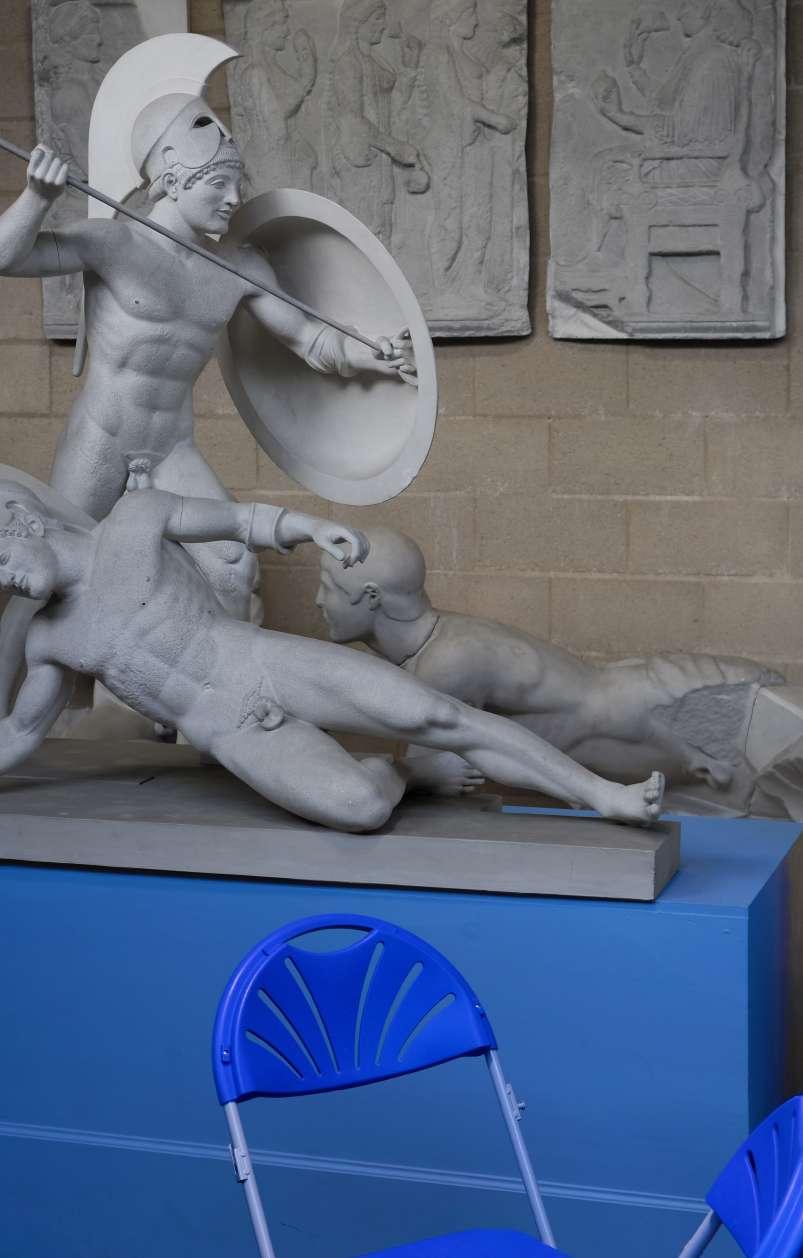
Figure2.1: AHistoricalMonumenttogetherwithElementsfromtheEverydayPractice

Figure2.2: HistoricalMonumentsWithanElementFromtheEverydayPracticeinBetweenThem.

Figure2.3: AHistoricalMonumentSupportedbyanImprovisationalHand-MadeFixture
Preservationistsproduceobjectsthatstabilizeourpresentandinthatwayprovideexperiential continuityforourculture.1 Itisanillusionofcontinuity.Theprocessofconservationprovides onewithasenseofcontinuitywiththepast,yetitgentlyfrustratesit.Thecriticalpracticeof conservationisamodelofculturalchange,butnottherevolutionaryonethatencouragesto startover.Instead,criticalconservationsays:wearegoingtochange,itisgoingtobereally difficult,itwillcreatealotofanxiety,butlet’stalkaboutit.2 Theconservationprocessis abletoextendanobject’slifespantowhatFedericaGofficalls“quasi-eternity”.3 Yet,itisnot enoughtojustchooseanobjectasheritage:theobjectsthatstayaroundaretheonesconstantly takencareof,maintained,andregenerated.TheredevelopmentplanofShanghaihascaused asocioculturaldebate.Isthatnotbecausesomeofthoseprotestingtheredevelopmentthink thatShanghaibelongstoVilniusculturalpresent?Itisthepreservationist’stasktodecideif Shanghaiisatransitionalobjectandhelpspeopletransitionfromoneculturalstagetoanother. Thischapterinvestigatesthequestionofwhoshouldbetakingtheroleofapreservationist. Heritageisnotfoundasheritage.Heritageisoftencreatedbytheactofconservation: observation,preservation,mapping,andmanagementoftime.Criticalconservationisthusa creativeactofnegotiationbetweenthepast,presentandfuture.SalvadorMuñozViñasnotes thatclassicalconservationtheories(fromRuskintoBrandi)arecharacterizedbytheirclose adherencetoTruth.4 Heelaboratesthatthesetheoriesarecurrentlydominant,butcriticism andnewalternativesaregainingmomentum.5 MuñozViñasaddsthat“theoldbeliefthat damagecouldbeclearlyandobjectivelydefinedispresentlyseenasanillusion,andmany conflictsonconservationprocesseslieindeepdisagreementsonwhetheragiven,orearlier,
alterationshouldbeconsidereddamage.”6 ProfessorDanielBluestoneraisesthefollowing questionregardingthecurrentunderstandingofconservation:“Whyshouldn’tweaccept changewithitsdestructiveforcesandsimplygreetnewformswithenthusiasm,ratherthan engagingintheconservativepracticeofholdingontoolderandmoretraditionalformsof materialculture?”7 Lowenthalin PossessedbythePast hasdistinguishedbetweenhistory andheritage.Lowenthalsuggestedthatfalsehoodisnecessaryforsomethingtobeestablished asheritage.8 Cosgrovehasarguedthatinconservation,realityisnotrevealedbutcreated.9 Therefore,itbecomesevidentthatconservators,experimentalpreservationists,andarchitects haveagencyonlyiftheconservationofheritageispractisedinafreerway.Lowenthal,McLean, andaboveall,Cosgrove,havedemandedthe”possibilityofgreatercreativefreedomonthepart oftheconservator.”10 Theyhaveaskedforconservationtobe”morecreative,lessdeferential tocanonicalideology,moreopentotheradical,theiconoclastic,andtheinvented.”11 Federica Goffisaysthatconservationisaformofinventionandreimagination.Shequestions,”Isit possibletoconceiveofconservationasaformofinventionallowingforthemakingofmemory throughtheunfoldingoftime,revealingthepossibilityforanimaginationofconservation?”12 Inshort,thoseconservingheritagearetryingtoprovideanillusionofcontinuity,whichisa creativeprocessandrequiresfreedomfromthosecuratingthediscipline.13
Thisessaywillfirstintroducetwowell-knownexamplesofwhatcouldbeconsidered ascriticalconservation.Eventhougharchitectsareoftencritiquedtonot”viewhistoric buildingsaslikelycanvasesfortheircreation,”14 thisessaytendstobelievethatthereare greatprecedentsnevertheless.Let’stakeanexampleofaGermanarchitect,HansDollgast, andhisprojectforAltePinakothek(1957).ThereconstructionofAltePinakothek(1957) identifieshowthearchitect,eventhoughbeingattunedtothequalitiesoftheruin,didnot intendtopreservethebuildingasone.Dolgastworked”throughandwiththetemporary.”15 Dollgastmanagedtoturnthe”ephemeralandcontingentintoarchitecturalopportunities.”16 “Thecontrastofthebrickworkisonlystarkwhenyoulookclosely.[3.1]Thenyounotice Dollgast’s”judgmentbyinsertingaconcretelintelhereandthere.”17 Dollgastencouraged peopletoacceptthatthemuseum,too,hasitshistory.Dollgastleftthewardamagevisible, whichwasconsideredadisgracebythepublic,protested,andremovedafterward.Maximilian SternbergdescribesHansDollgast’sworkas”attentivetotheaccidentalandcontingentas muchastotheunderlyingpossibilitiesofcontinuity.”18 AltePinakothekisanexampleof conservationpracticethatprovidesthepublicwithatemporalexperienceofthepresentthat hastheelementofhistoricitywithinit.Completedinthesamedecade,PalazzoAbatellisby CarloScarpaalsocallsforattentionhere.JustlikeHansDollgast,CarloScarpawasnot interestedinruinsorfragmentssolely,butwasfocusedin“thesumofartefactsproduced withinaculture.”19 BeforeScarpa’sintervention,PalazzoAbatelliswasalreadyanarchitecture
oftransition.MarcoFrascariconsidersScarpa’scontributiontoPalazzoAbatellisasa“visual transcriptionoftheinvisibleprocessesofhistoryandculture.”20 PalazzoAbatellisisatime machineandatheatreofmemory.21 PalazzoAbatellisisundoubtedlythearchitectureof surrealism:throughadoringthenatureofrealityandthroughthepowerfultooloffantasy, therealbecomessurreal.22 ItisessentialtonotethatScarpa’sefforttoescapethemundane realityforthesurrealwasnotmeanttocreatean”unreal”butrathertoexpose“theheart ofreal.”23 Scarpa’sdesignatpresentisanegotiatorbetweenthepastandthefuture.24 Alte PinakothekandPalazzoAbatellisaredifferentintheirarchitecturalapproaches,yettheyboth seemtospeakoftheircomplexhistories,arefreedfromtraditionaljudgmentsandleftopen fornewinterpretations.25 Inbothofthosecases,pastandfutureliveclosetogether,meetingat diversematerialandspatialsolutions.Thesearejusttwoexamplesofarchitectureascritical conservation,providingthepublicwithanillusionofcontinuitywhilefrustratingitslightly withthepast.
Whatexperimentalpreservationhasproposedisthatwe,asarchitects,asartists, aspeopleworkinginthevisualfield,canhelptoattunepeopletocertainrealities. Toreallyshapeourrelationshiptowhatweconsidertobereal.I’mnotgoingto saydirectit,butinfluenceit,inapositivedirection.Wehaveanenormousamount ofagencybutwehaven’tuseditbecausepreservationistshavebasicallywaitedfor thejobtoarrive.[...]Experimentalpreservationismoreguerrilla-likeinthesense thatpeoplearenotwaitingforthecommission,theyareactingonhistoricobjects directly,withorwithoutpermission,asawaytobegintohaveagency.26
JustlikeJorgeOtero-Pailos’quoteabove,thisessayacknowledgesthatarchitectsandother agentsfromavisualfieldhavethepowertoshapepeople’sculturalrealities,yetitdoesnot arguethatthecriticalconservationpracticesshallonlybeperformedbythem.Eventhough theexamplesdiscussedaboveincludedtwobuildings,oneshallnotprioritizetheirphysicality overtheirconsequences.Conservationshallalwaysbecarriedoutforthesubjectsinsteadof theobjects.27
MuñozViñashasnotedthatforheritageconservationtobecomeacreative,criticaland progressiveprocessitsagentshavetobeawareofnotimposingthedecisionsontheaffected subjects.Multipleauthorshavealreadynotedthisbycallingconservation”negotiative”,a ”pact”,a”discussion”,a”consenso”,an”equilibrium”,oraformof”trading.”28 Itis“astep towardcooperationindecision-makinginafieldthathastraditionallybeenelite-oriented.”29 Inshort,heritageshouldshiftfromtheexperts’fieldtowardsa“broaderpublicdomain.”30 Itisclearnowthatthediscourseisnotonlylegitimizingwhatheritageis,butalsodeciding whocanspeakofit.Thetop-downheritagediscoursehasconsequences,andoneofthe
mostprominentonescurrentlyisthatheritageisslowlybecominganeliteconcerndiscussing socialissuesrelevanttoonlytheeconomicallyandsociallycomfortable.31 Apowerful critiqueregardingstateinstitutionschoosingandgatheringculturalheritageisexpressed byBosnianartistAzraAksamija.InthecontextofBosnia-Herzegovina,Aksamijacreated aparticipatoryprojectcalled”FutureHeritageCollection-Office”32 whichinvitedcitizens andvisitorsofSarajevotobringartefactsthattheyconsidertobeimportantgeneratorsof Bosnia-Herzegovina’sculturalheritage.Inthisway,theprojecthasexperimentedwiththe publictakingtheroleofconservationistsandchoosingheritagethatwouldneverbechosen bytheinstitutions.Theroleofacriticalconservationist,is,therefore,tochooseandtestthe objectsconsideredbyofficialinstitutions unworthy,becauseofacoupleofreasons.Primarily, thoseobjectstendto“embodythematerial,socialandenvironmentalcostsofdevelopment whichgovernmentsandcorporationsseldomaccountfor.”33 Anotherreasonisthatcritical conservationisoftenlessconcernedwithobjectsthemselvesbutratherhowtheactofkeeping theseobjectswouldenrichourlives.Andfinally,itisoftenthechoicetoworkwiththose unworthy artefactsthatquestionstheexistingheritagecriteriathatwerecreatedinthelate 19thcentury,atatimewhenmostofwhatdefinesourcurrentenvironmentdidnotexist.34 Bychoosingtheobjectsincrisis,theconservationistexposesthemselvesandthepublictothe consequencesoftherapideconomicandpoliticaltransformation,allowingthediscussionon thehistoricalpresentandfuturetohappen.Mostimportantly,thecommunitiesexperiencing thoseconsequencesthestrongestshouldbeallowedtotaketheroleofaconservationistand decideiftheircurrentculturalrealityisvaluable.
Furthermore,criticalconservationisnotonlyapublicbutalsoacreativeact.Inhis book ExperimentalPreservation,JorgeOtero-Pailoswrites:“Iliketheideaofare-enactment. Comingbackfromthefutureisasortofsciencefiction.Insomeway,theideaofpreservation issciencefiction.Whenwesaidthatitwasanartandascience,wecouldalsosaythatit isafictionofscience.”35 Otero-Pailosarguesthatwhencreativityisthetopicofdiscussion, everyonegetsseriousandavoidsmentioningit.36 Butifpreservationistsaresubjectivemakers ofcultureandpreservationisanewculturalproduction,37 creativityissomethingthatneedsto bediscussed.Let’sthinkofthearchitecturalexamplesprovidedabove.Theyarebothcreative solutionstoconservingaplace.Theybothhavesuccessfullycreatedbridgesbetweenthepast, presentandfuture.Thecreativeaspectallowsonetoexperiencethethresholdoftherealand surreal,ofthepresentandthefuture,toemploythetransitionalobjectstohelpdistinguish theimaginedfuturefromtherealpresent.Allinall,ifcriticalconservationbecomesapublic discourseandcreativeaspectwithinitgetsestablished,theactofconservationandtheactof maintenancebecomeratheralike.
MierleLadermanUkelesinhermanifesto(1969)distinguishedtwobasicsystems:
developmentandmaintenance.Developmentisaboutprogress,newness,andexcitement broughtby”theadvance”.38 Yet,havingthedevelopmentimplieshavingapartofsociety maintainingit.Theactofmaintenanceisto“keepthedustoffthepureindividualcreation; preservethenew;sustainthechange;protectprogress;defendandprolongtheadvance;renew theexcitement;repeattheflight.”39 HannahArendt’sthoughtsondistinguishinglabourfrom work,raisesanideathatmaybemaintenanceisanewtypeofwork,“alastingthing.”40 Maintenanceissomethingthatisnotreproductiveonitsownbutratherallowsthosedoingit tobeawareoftime,change,andquestionsthatthethoughtoftemporalityraises.Itallows forthejoiningofthespatialandtemporalexistences.Therefore,maintenancemakesthe reificationprocessviable:everytimeonerepairssomething,onefindsoneselfinamoment ofspatialandtemporalawareness.Itisaprocesswherethepastmaterialstatedefinesthe presentone,whichisthestartingpointoftheoneinthefuture.ChristopherAlexanderputsit concisely:41
Inthecommonplaceuseofthewordrepair,weassumethatwhenwerepair something,weareessentiallytryingtogetitbacktoitsoriginalstate.Thiskindof repairispatching,conservative,static.Butinthisnewuseofthewordrepair,we assume,instead,thateveryentityischangingconstantly:andthatateverymoment weusethedefectsofthepresentstateasthestartingpointforthedefinitionofthe newstate.
Besidescontributingtothespatialandtemporalawareness,maintenanceisawaytodevelop socialconscience.AgnesDenes’cultivationandharvestofcropsinDowntownManhattan42 createdamonumentalimageof“thecomplexrelationshipbetweenenvironmentalresources, urbanism,architecturalandspatialpractices.”43 TheWheatfieldproducescropsthatwere grownasaresultofcare.InthecaseofAgnesDenes,theportrayedcareconcernslabour, irrigation,fertilizers,Denes,andherteam.44 Denesintendedtocallattentiontomisplaced prioritiesandinsteadofdesigninganotherpublicsculpture,shecreatedatemporalecology, whichwassustainedbypeople,nature,andtechnology,startedwiththegrowingand endedwiththeharvest.The”Wheatfield”provides“evidenceofnature,evidenceofhuman relationshipsbeyondthetechnical”45 and,inthisway,provesmaintenance’simportancein developingoursocialconscience.
Apartfromitsreifyingpower,practisingmaintenancecouldalsoofferanapproachtoa differentlifestyle:maintenanceoffers”awayofholdingontothatmostpleasurablepartofthe cycleofconsumeristdesire.”46 Ifthelusttoconsumeisimpossibletosatisfy,sotryingtodoso mightnotbethegreatestidea.47 Let’stakeShakers’48 attitudehereasanexample.Although Shakersbelievedthattheendoftheworldwasnear,theydidnotmaketemporaryfurniture,
instead,theycaredforfurnituretooutlastthem.“Therearen’tmanyshakersleft”,EulaBiss writes.49 Nowadays,itiscommontopracticeownershipmorethantheactofcare.However, whatifwetakeShanghaiasanexample,wherebuyingahouseisnotanoptionduetothe lackoffinanceandanoverlymessyprivatizationprocess.Itisclearthatthereisaneedfor moresustainablewayoflivingwheremaintenancebecomethenewownership.Thetradition ofmaintenanceandrepairinShanghaiwasdevelopedduetoanextremesenseofuncertainty. Nooneknowshowmuchofitwouldbeleftiftheplacereceivedastatusthatitcanstaythere forever,however,examplesinthecountrysideshowthatamaintenancelifestyleneedsmany yearstodevelopandcanexistwithnoexternalthreats.Couldthisperceivedacceleratedpace oftimethatkeepsoverthrowingthetraditionandconsciousness50 ofthepresentslowdownand meettheoneoflongstandingtraditionsofmaintenanceandcare?Thequestioncallsforthe attentionofthelocalstate-ruledinstitutionsandinternationalonesresponsibleforforming currentheritagepolicies.Thereisaneedforspaceforacknowledgingthepreservationists outsidetheofficewalls:thecommunitiestakingcareoftheirenvironmentfordecades,seeing valueinit,anddedicatingtheireverydaytocare.Ultimately,maintenanceisapublicand socialactthatisnotboundtoownershipandwhich,initself,isaneverydayinterrogationof therelationshipbetweenpeopleandthings.Assumingthatpreservationcouldbeperformedby theauthoritiesaswellasthepublic,thefollowingchapterwilldiscusspossiblemethodswhich couldbeemployedbythepublictotestandexaminetherealnessandcapacityofaplaceasa potentialmemoryofthefuture.
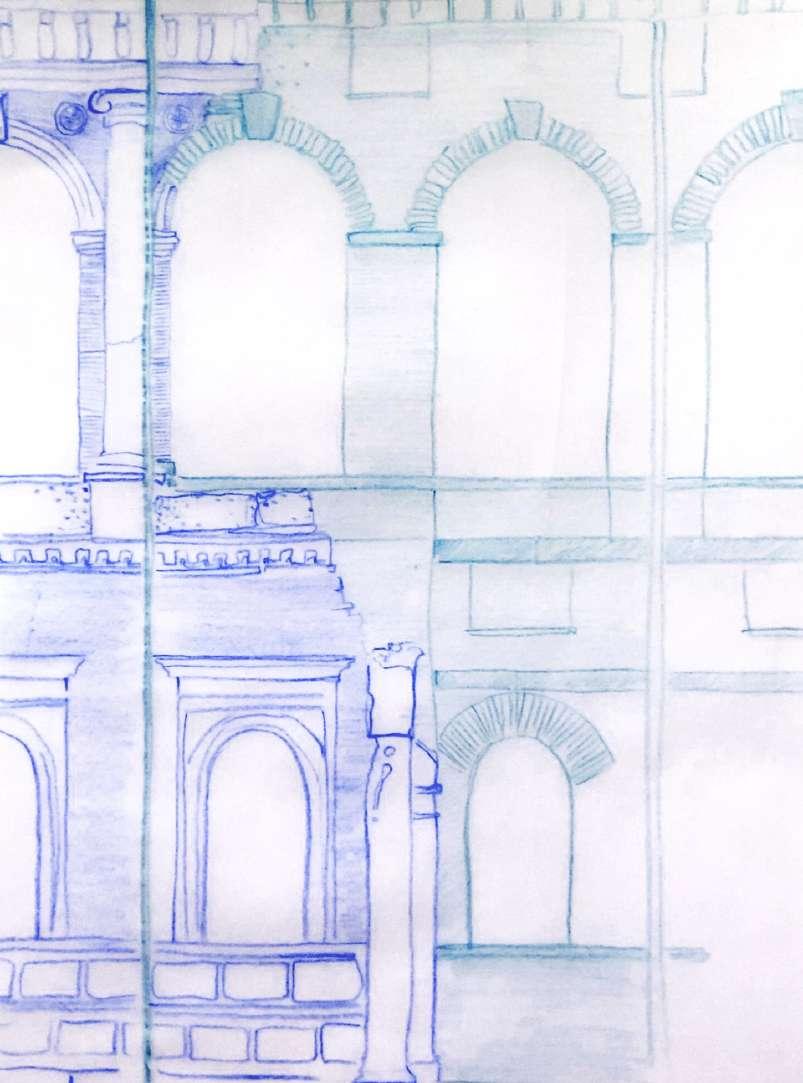
Figure3.1: PencilSketchofaFragmentoftheSouthernSideofAltePinakothek.Theoriginal-inblue; thereconstructed-ingreen).

Figure3.2: PalazzoAbatellis,IndoorExhibitionSpace.



Thisessayproposestwotypesofapproachesforreificationwiththeeveryday:(1)experiencing theordinaryasordinaryand(2)experiencingtheordinaryasout-of-the-ordinary.Thechapter issplitintotwopartsaccordingly,andtheywillcoverseveralmethodseach.Foremost,the essaydiscussesintensiveobservationcanbeusefulintryingtoconsidereverydaywithoutlosing theordinarinessofit.Thesecondpartwillfollow.Defamiliarizationisawaytobeawareof adirectpresence.
Experiencingtheordinaryasordinarycanbedonethroughanin-depthdescription.The firstmethodexploredistheoneofarchitecturaldrawing.Bythewordarchitectural,thisessay doesnotintendthatthedrawingneedstobemadebyanarchitect,butratherforittohave aspecificpurpose.Thepurposeofsuchdrawingisasstatedconciselyintheoriginalcallfor papersfortheModelsandDrawingsconference.Thearchitecturaldrawing“teachesthegaze toproceedbeyondthevisibleimageintoaninfinitywherebysomethingnewoftheinvisible isencountered.Thusthetrue’drawing-gaze’neverrestsorsettlesonthedrawingitself,but insteadreboundsuponthevisibleintoagazeoftheinfinite.”Nowadays,duetotheobsession withproductivityandrationalization,thereislessspace“fortheinvisibletoemergefromthe processoftranslation.”1 However,beingconsciousofthathelpstoallowtheinterpretation processtohappen.Theinterpretationprocesshereisnecessaryforthemomentsofawareness betweencapturingtherealandcreating.Becausethatmomentallowsustounderstandwhat isitactuallythatisknownaboutthecurrentreality,whatwasmemorable.AsWaltonputs it,byperformingthismake-believegame,we“findourselveswithawayofdistinguishing fictionfromnonfiction.”2 Today’spracticestilltendstoseparatethe“asbuilts”fromthedesign

Figure4.1: Penonpaper.NeighbourhoodPlan.
drawings,3 whichformsthefirstchallengeofthischapter:architecturaldrawingsshallaimto rejointhesetwotemporalconditions:retrospective(orthenon-fictional)andperspective(as thefictional)character.Thisessayarguesthatthepointwherethesetwomeet,realization happens.Insuchawaythedrawingcanbeatoolwithintheritualfuturearchival,whatisreal andwhatisnot,whatwillstayforthefuture.Thegameofmake-believehelpsonetoposition oneselfintherealworldandunderstandone’srelationshipswithpeopleandthingsbetter.4 ThepreservationistinthischapteristestingtherealnessofthingsandtryingtoseeShanghai’s potentialasthe”memoryofthefuture.”5 Thisarticleconcernsbothpen-on-paperdrawing techniques,photographsofhandmademiniaturemodels,andwrittendescriptions.
Theprovidedpen-on-paperdrawingrepresentsthecurrentplanofShanghai.Itisdrawn onanA0sizepapersheetwitha0.05mmthickpen:themediumallowsspacefordetail.Itis notarealisticdepictionbuiltonlayers.Whilepreparingforthedrawing,itbecameclearthat inShanghai,layersarehardtodistinguishfromoneanother.One,insteadoftryingtodetangle thechaoticcharacter,immersesoneselfinthestoryofShanghaiandjustfollowsitnaturally
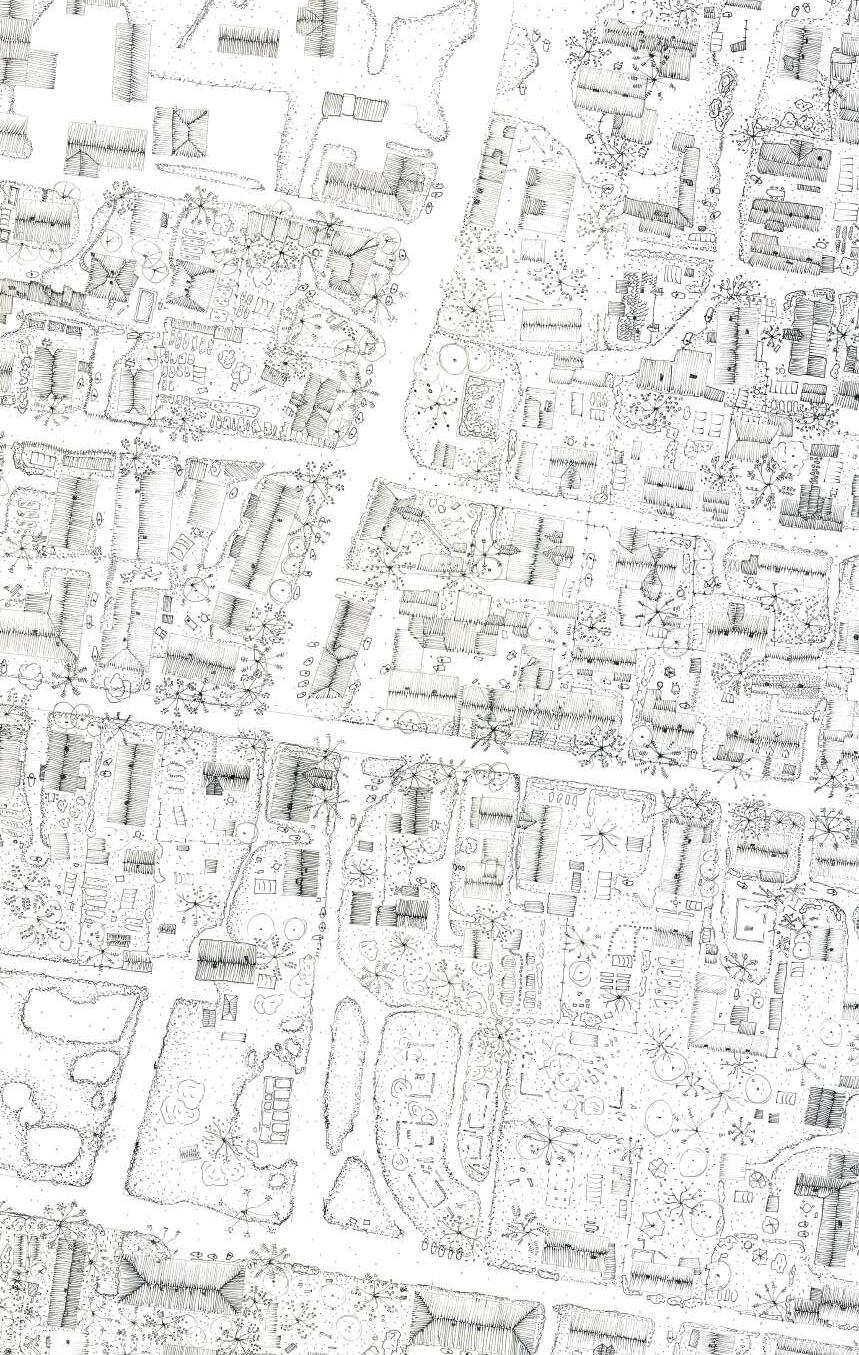
Figure4.2: Penonpaper.NeighbourhoodPlanZoomed-In.
unfolding.Thisishowthedrawingwasmade.Itstartedfromabottomcornerontheleftside andevolvedaroundit,beingguidednotbyarationalebutratherbythememoriesofobjects, howtheycorrespondtoeachotherandtheintuitionoftheonedrawingit.Thehandmovedup thepage,thenwentsidewaystotheleft,thenupwardsagain.Themovementsomewhatrecalls theonedescribedbyHusserlas“zigzagfashion.”6 Insteadofusingpreconceptionsasguides,an artistusedmaterialconcreteconditionsasclueswhichledtomoregeneralinsights.7 Therefore, lookingatthedrawingfromanobserver’sperspectivethelayersmaymayberecognisablebut notseparable:thedrawingratherappearsasonecontinuousentity.Thereadingprocess becomesmorechallenging:withnoindicationofstartandfinish,areaderneedstogothrough thesamejourneyofperception.Eventhoughthedrawingwascreatedfromablankpage andwasnottracedoveranything,differentmedia,suchasvideos,photos,satelliteviews,and memorywereusedtoconstructit.Itisclosetoimpossibletorecreateanexactimageofthose thatarebeinglookedat.Therefore,thedrawingprocessincludedtwotypesofinterpretations: 1.Whentheartistrememberstheplacebeingdifferentfromitappearsinthereferencemedia; 2.Whenthereferencemediafailstoprovidesufficientinformationonasite.Therefore,even thoughthedrawingencompassesahighlevelofdetail,onehastobeawareofthefactthat detailsalsocomefromimagination.Theprocessofinterpretationwasasimportantastheone ofdepiction.Theartistwasresponsiblefordecidingwhentoputthehatofthecreator,when totakeitdown,andwhentowearitbackagain.Thisquestioningofwhatisrealandwhat isnotwasaconstantprocessofmake-believeandhasbeenfrustratingthepastagainstthe presentandthepresentagainstthefuture.Thesemomentswereoneswhentheartist,andthe casethepreservationist,becameawareofobjectsandtheirmeaningatpresent,asremnants fromthepastandpotentialmembersofthefuturefabric.Importantly,somepartsofthe drawingareleftunfinishedornotasdetailedasothersintentionally.Evenifthedrawingis “invisibleinitswholeness”,itengagestheimaginationofthereaderinrevealingthefullness ofit“bywayoftheunfoldingofacontinuumofitsmanifoldvisibleaspects.”8 Thosespots areplacesleftforthereadertoperformtheirreification.Therefore,bothfortheartistand theaudience,thedrawingactslikea“thinkingmachine”whichcreatesspacefordialogues “betweensubjectsandobjects,heresandtheres,nowsandthens.”9 Drawing,almostlikea veil,unveilsa“supratemporalpresence”.Itactsasa“dialogiccounterviewpointrelationship betweenmemoryandimagination.”10
Tocontinuestressingtherelevanceofsucharelationshipbetweenmemoryandimagination, anothertechniqueofdrawingisintroduced:photographsofminiaturemodels.Photographs ofminiaturemodelsdifferfromthepreviouslydiscussedtechniqueinitsmaking.The pen-on-paperdrawingalloweddiscoveryhappenthroughtheprocess,throughwandering throughthesystemoftheneighbourhood,asasystemofdailyinfrastructures.Thesecondone
ismuchmorefocusedononeimage,andlookingintodailyremnants,andhavingadeeper lookintodailyobjectsandwhattheymean.
Itrytoreconstructanideaofrealitywemightallshare–‘illusion’alwaysimplies there’satrickoratrap,amomentwhereyousay‘oh,Iwasfooled’.I’mnotafter thatatall,I’mtryingtopictureanideaofrealitywhichischangingallthetime. It’ssomethingthat’sinterestingforanartistbecauseyouspendsometimemaking pictures,andyourealisethatthenotionofrealityweallshareischangingrapidly, especiallywhenitcomestopictures.11
Let’shavealookatthetriptychoftheseimages.Intheprocessofinterpretation,theauthor hasfixatedonsomeofreal-lifemoments,omittedsome,andaddedhis/hercreatedones.The added/fictionaldetailsareminor,notsignificant,indeedsoinsignificantthattheyseemtonot alterreality,however,they“dosononetheless.”Theysignifyinsignificance-“theinsignificance ofthemerefactsofthecontingentworld”.12 Sometimesindeeditcanbeanunexpecteddetail inaphotographthatdoesnotonlycatchone’sattentionbutalsocanpierceone’spsyche.13 ItislikeinBryson’sessayonstilllife,eventhoughtheobjectsinthisgenretendtobeminor, oftentheyareportrayedinawaythatdrawsouttheexcessivelookingfromus:weoverlook thoseminorthingswithsometimesalmostMedusanIntensity.14 Inotherwords,ourgaze getslockedintodetails,andthroughthis,thedailyobjectspossesspower.15 Itisthesamein thesemodels,themakingofthosedepictionswasonlypossiblethroughaconstantwaking-up fromthe”dream-likestate”,16 orthemedusangazethroughwhichweusuallyexperiencethe ordinary.Onlythentheartistcanpickuptheirqualities.Forexample,theworn-offandfaded tapestrymightbeunnoticeable,butwhenplacedintentionallysuddenlyitreceivespower,it becomesanobjectwithapast,withitspositionatpresentanditspotentialinthefuture.The artistunveilsthem,andinthiswaythedailyobjectssuddenlybecomehistorical,andthusmake theconversationaboutthefuturepossible.Totestthepresenceofthosedailies,theartistalso introducesafictionalobjectandobservesthedialogue.Bymanipulatingthedaily,insignificant, andminordetailstakenfromrealitywithaddedthoseofherimagination,theartistcancreate animagethatseemstobeuncomposedandthusremindsaphotorealisticdepictionofreality. InspiredbyThomasDemand-avirtuosointhisgenre-theimagerepresentsaplaywitha dialoguebetweenthe“noncomposition”withtheoneofthe“composition.”17 Thetriptych wasoncereferredtoas“haunting”.Theambiguityoftheimagescomesfromthefactofhow realistictheyare,aswellastheuncertaintyifallthoserealisticthingsinthemodelarereal. Theyareimages,andusually,thetemporaldelayisnotpresentwhenexperiencinganimage.18 However,here,thenotcompletelystraightlegsofthechair,thestiffnessofthenewspaper,and thealmost-too-perfectlymadebedindicatethepresenceoftheartist.Itcreatesdistance,which
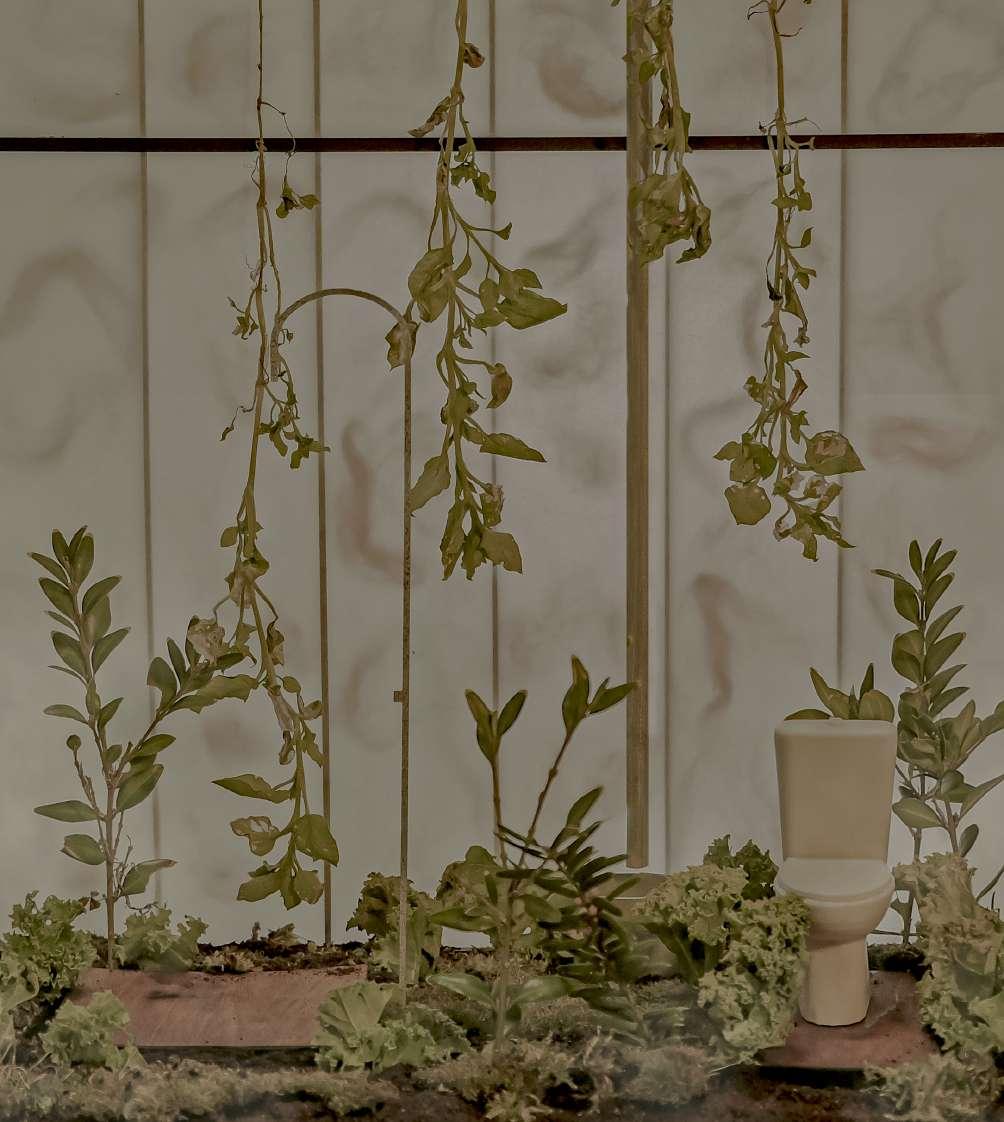
APhotographofAMiniatureModel:anImaginedBathroominaGreenhouse.

APhotographofAMiniatureModel:anImaginedCafeteriainanExistingAbandoned House.
allowsfordoubtanddiscomfortofthereader.Thosearemomentswhenthereaderrealizes thatbesidesthepastandthepresent,thereisa“projectiveforce,futurevector”apparentas well.19 Suchimageshelpustosuddenlybecomeconsciousofourrealitytoday.JustasDemand intends,“WhatmypicturessometimescandoorwhatIhopetheycandoisgiveyouanimage ofyourfuturememory.It’sthevisualisationofanarchivalprocess:thearchivingoffuture memories.20 Byinvitingboththeartistandtheaudiencetoconstantlybepickingupthereality, byplayingthemake-believe,suchdrawingsencouragesempiternalmakingandhermeneutic readingwhichmake“pastandfuturemediateeachotherdialectically,enablingmovementin bothtemporaldirections.”21
Asalastmethod,thisessayintroducesspatialexperience.Insteadofintendingtoin-depth describedailymaterialstructuresandobjectsnowlet’shavealookintoadescriptionofone’s experienceofthedaily.
Iproposethatwhatismostimportantforthepurposeofeverydayaesthetics
Figure4.4: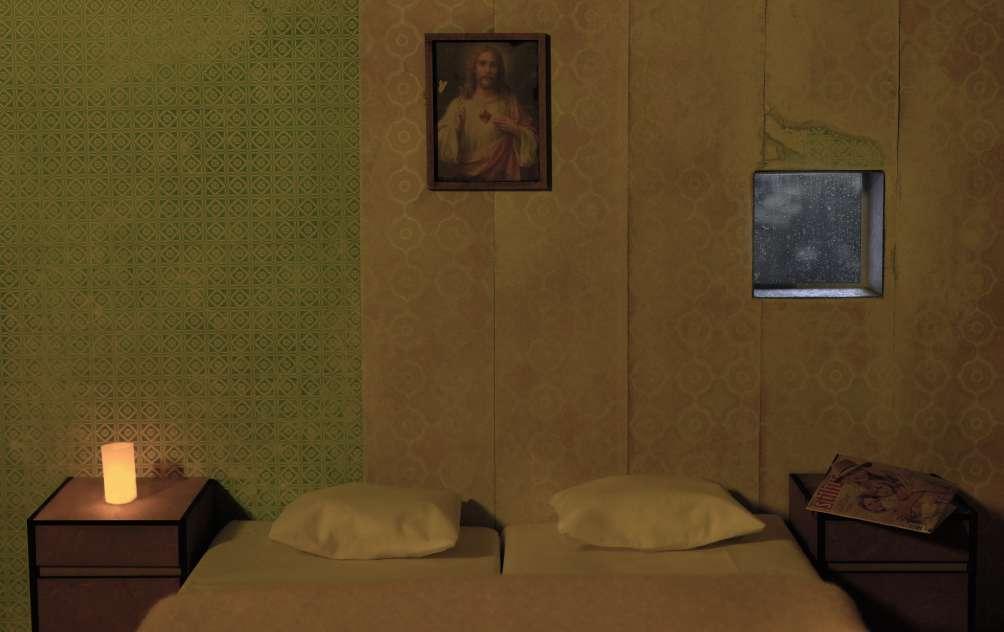
Figure4.5: APhotographofAMiniatureModel:aFragmentofanImaginaryBedroom. isnotsomuchaninventoryofobjectsandactivitiesbutratherthemodeof experiencebaseduponanattitudewetaketowardthem.Wetendtoexperience ‘everyday’objectsandactivities,whatevertheymaybe,mostlywithpragmatic considerations.22
Thespatialdescriptionisdefinedbythehorizon,which”holdsthehumansituationtogether”, andisnotlimitedbythevisibleworld.Themostimportantqualityofthathorizonis”it’sability tobringawarenesstowhatisinourexperiencebutisnotyetvisibleorknown.”23 Inspiredby TaoDuFour’s HusserlandSpatiality:APhenomenologicalEthnographyofSpace,thisessay carriesoutadescriptionofthesixdifferentspatialexperiencesgainedwhileonfieldwork.By usingthismethod,theessayengagesinphenomenologyasadescriptivepractice.Thewritings usethepresenttensefortheeventshappeninginthepresentandthepastsenseforthewriter’s memoriesandrecollections.Thetextisadescriptionoftheeventshappening,thewriter’s thoughtsandmemories,allincorrespondence.Byusingthismethod,theessaypaysattention togesturesofeverydaylife,astheytendtorepresentanessentialstepinthemimeticformation ofeverydaytypicalhumansituationsaswellastheformationofspace.24 Afterthedescription, aparticulartypeofsituationsmightappearmoredefiningthanothers,somedailyexperiences mightappearmoregenerativethanothers.Thereadermightnoticethetransitionalobjectsin
spacethataregeneratingthedialoguebetweentheinnerandouterworldsofthewriter.These aretheobjectsthatallowthewritertoexperiencethepresentasconsequentialtothepastand asgenerativetowardsthefuture.Thetextisintendedtohavethesamepowerforthereader asitdoesforthewriter,asifthereaderandthewriteraretobesittinginthesameroom.25 The writtensituationsarecutoutsofalongertextandwillbenumbered1-6.
1.MyfirstinteractioniswithalocalnamedPovilas.Inhistwenties,havinglivedin Shanghaiforacoupleofyearsalready,Povilasconsidershimselfstartingtofeellocal.Povilas livesinarentedroom,whichwearewalkingtosee.Therearethreeroomsintheapartment. Povilasandhisroommatearetakingcareofthatapartmentregularly.”Itissortofanunwritten contractthatwehave.Wehelpmaintainthespace-thelandlordisfinewhenwepaylate.” Therearethreeflatsinthehouseandthreehousesareformingagarden.Povilassaysthatthe gardenisspecial.”Itisspecialbecauseitisdifferenteveryweek.Myneighbouriscollecting metalscrap.Everythingthathefinds,hestoresinthegarden.”Iseeacollectionofpipes,school chairs,andawashingmachine.Povilassaidlastweektheyhadaslide.Howinterestingthatthe landscapeischangingeveryweek.Theothersideofthesamegardeniscoveredwithfirewood. Povilasexplainsthatthisamountshouldbeenoughforwinter.Wearewalkingthrougha narrowalleytowardthehouse’ssidedoor.Iseethestreet,butitisfenced.”Wewantedto haveanalleyleadingtothestreet,buttheneighboursconvincedusthatoneentranceisbetter forsafety:theneveryoneseeswhoareenteringthegarden.””Watchoutwiththehandle.” PovilaswarnsmetoolatewhenIalreadyholdthedetachedhandleinmypalm.Isoftlyfix thehandlebackin.Somanythingstobegentlewith.Wehaveenteredasmallkitchen/dining area.Itisadimmedspacewithonetinywindow.Inoticealargesoftboardattachedtothe ceilingwithmorethanthirtynails.Probablynotallthirtyareneeded.”Wedidnotknow howmanyweneededforittohold,Povilasexplains.”Hepointstoamassivehearthinhis room.Knowinghowtousethisthingisanartinitself”.Lastyearoneofthehearthswasnot functioningwellsotheyhadtosearchforacraftsmantoinvestigatetheissue.It’simpossibleto repairahearthnowbecausenooneknowshowtoassembleitagainafterdissemblingit.But theissuewasonlysolvedbyaccident,thecraftsmenguessedandtookoutthecorrecttilewhich wascausingthecongestion.Themaintenanceofthesehousesrequiresomuchknowledgeand gentleattention.Wewalkoutofthebalcony.Itisabalconywithnorailings.weareonthe secondfloor.”Peoplewhowalkpastoftenseemtobetriggeredbythisbalcony.”Ithinkthey feeltooclosetoyoubecausethereisnorailing.Theyseemesittinghere,stoptalking,andwalk pastmeinsilence.”Povilaspointstoasharpobjectsoftlydanglingaboveourheads.”Thisis heritage,heexplains,it’saroofornament.Itwillfalloneday,hesays.”Itwouldbesoeasyto taketheornamentdownandfixitifitwasheritageinitself,howevernoonereallyknowswhat exactlyitdoes.Sotheyleaveit.WhenIwalkout,Ilookbacktothebalcony,wherePovilas
iswavestome.Withouttherailing,itdoesfeeldifferent.Apartfromdailyhomemaintenance likewashingdishesorcleaningthebathroom,Povilasandhisroommate’sdailylifeincludes makingsurethattheirhomewillstillbefunctionaltomorrow.Theypatchtheroof,takecare ofthehearths,carry,andstorethefirewood,andtreatthehandlegently.Thesearejustsome ofthemaintenanceactsPovilasandhisroommateperform.Theyareunwrittenandcanoccur unexpectedly.Thathouseislikealivingorganism.Itrequiresconstanteffortandcare.For goodcare-adiscountoralatepaymentbenefit.
2.AfteraweekofroamingaroundShanghai,ImetDalia.Wewalkthroughthe neighbourhood’ssmalleststreets,sayinghitoneighboursthroughtheholesintheirfences. DaliatakesmeonviaroutesthatIwouldneverguessbeingpublicpathways.Weclimb throughafence.Now,Ireallydon’tthinkit’sapath,butitseemsIamtheonlyonethinking that.Wedon’thaveanypurposeforthiswalk.Ormaybethepurposeisthewalk.Dalia introducesmetoaladysittingonabench.Nijoleisaladylivingaloneandearningmoney bycleaningahotel.”Wherehaveallthesebeautifulflowerersdisappeared?”Daliaasksher. ”Ihadtocutthem.Theflowersattractedlittlelarks.Oh,Ilovethosebirdssomuch!And theirmorningsongs.Butmycatwouldhuntthemdown.So,Icuttheflowers.Sothelarks wouldnotcome.”Nijoleandherenvironmentaresocloselyattached.Sheknowsevery thingandcreaturethatisinhergardenandtakescareofthem.Weenterthehousethrough theold,thickandheavyyellowdoor.It’sdarkinside,woodenfloorsaresqueaking.Nijole immediatelytakesustoherbathroom.Nijoleworkedhardtomakethisbathroomhappen. Justhalfayearago,thebathroomfacilitieswereoutdoors.Nijoleturnsonthelightofthe bathroomandopensthedoor.Itisanextremelybright-litwhitespacewithasmellofbleach. ItisabigachievementwhichmakesNijoleveryhappy.Wearesittinginthemainroomeating applesfromNijole’sgarden.Itisaroomwithasofa,desk,bookshelf,bed,hearthanda coffeetable.Itisprobablyalivingroom.ItissoclearthatthisiswhereNijoleliving.Inotice aroundthirtya4piecesofpaperhanginginawallnexttoeachother.”Whatarethese?”I ask.”Myillustrations”,Nijolerespondshumblyandcontinues,”Iwanttocoverallthewalls withthem”.Shegetsastackofpaperoutofthebookshelvesandstartsshowingherworks. ”Ilovecolouring.Idrawshapesandcolourthem.Ithinktheypresentmyinnerdemons.”I lookatherdrawingsandcomplimentthem.Nijoleasksmetocomeovermoreoften.Weexit thehousewithpocketsfullofapplesandabunchofbluebasilfromhergarden.Ihavenever triedbluebasilbefore.
4.Areyouwaitingtogetyourbikefixed?Daliaaskedamanleaningtothebicyclerepair shopfacade.”Therepairmanjustgothitwithahammerinhishead.”themanexplains.He iswaitinguntilthepolicefiguresitallout.”Thequestionsofwhom,wereandwhenfollowed. ”Therepairmanwastryingmybicycleonandridinginthemiddleofthestreet.Abittoo
slowly,Ifigure.”DaliaandIenterthebikeshop.Thewallsarecoveredinmirrors,andthe mirrorsarecoveredwithallsortsoftiresandbicycleparts.Themirrorsmakethisplaceseem biggerandevenwithmorething.Thereisacountertopfromglasswithadisplayofsomesort ofsmallertoolsunderneath.Itreallyfeelslikeamuseum.Museumofthelifestyleofrepair, maybe?Noonecantakethesetools,touchthem,orevenpretendthattoknowsomething aboutthem.Thereisaladybehindthecounterwhoclearlyistheonlypersonwhoknowsthe purposeofeverylittlething.Itreallyfeelslikeadisplay.Itisacollectionoftoolsoverthe years.Notonlytofixbicycles,butalsotofixtablesfridgesandhomes.Worthexposingreally. Daliaandtherepairshopladydiscussthehammerincidentshortlyandthenweleave.
5.Daliaknowstheinhabitantsofthehousenextdoor.Weknock.”ThisisIeva.”Dalia introducesmeforthethirdtimetoday.Comeonin,averywelcomingladyshowsustheway inside.Theageofthehousehasafamiliarsmell.Itishowmygrandmother’shouseina countryusedtosmell.Dustattributestothedimatmosphereofthespacesinside.Wepassthe kitchen.Weenteralivingroom.Atablefullofthings:yogurt,bread,plates,teapot.Eating wasinprocessjustamomentago.Weapologisefortheinterruptionandemphasisethatthere isreallynoneedtocleanup.Theladystartscleaningup.Wesitdown.Iamgivenapillow toplaceundermyselfwhilesittingonthesofa.NoneedIsayandfallintoadeepsoftcloud. Ahammeraccidentstartstheconversation.Thehostessisstillintheprocessofcleaningthe table.Wenowgotgrapesandtea.Igethandedcandies.Wearenothungry,sonooneis eatingthegrapes.Thehostessstartspickingthegrapesfromthebranch,soitiseasierforus totastethem.Hersoncomesin.Hismotherintroduceshimasahandyman.”Yes,indeed”, heagrees.”Iameverythingbutanarchitect”.Ilaugh.Daliasaysthatit’sperfectbecauseIam anarchitect.Thehostesssaysthatwefinallyhaveanarchitectwhoisoneofus.Weallknow thatIamnotfromShanghai.Wealllaugh.Weeatthegrapeswhilethesonisbringingthe collectionofhiswoodcarvings.Havinglaidthemoutonatable,heseparatesthemintotwo parts.”Theseareartandthesearebusiness.”Onecarvingisdonefromafloorboard,others ofdifferentsortofthings.Thelevelofcuriosityisveryexciting,Ithought.Healsoshowsa paintingofhisthathedidonawoodensurface.”ThisisthesametechniqueLeonardodaVinci wasusing,Iwantedtotryitout.”Heexplainsthatbeforecarvinghedecidesifthatoneisgoing tobeartorbusiness.Whenweexitthehouse,thehostessimmediatelygoestohergardenand startspickingfreshmintleavesforme.Whilemintisbeingcollected,hersonshowsmehow hestartedlayingstonesinthegarden.”Stillalottodo”,hesays.
6.ThereisthisgardeninShanghaifullofmostrandomthings.AChristmastree,pipes, carpets,steelstructures,andalotofobjectswithanunclearoriginandfunction.Thefirsttime Imettheownerofthisgarden,heaskedDaliawhoIwas.”Anarchitecturestudent”,shesaid. ”Whatdoyouknowaboutarchitecture?”heasks.Iamnotsurehowtorespond,soIdon’t.

Figure4.6: TheExhibition:LaundrythatisCuratedaswellasUncuratedLaundryintheBackground.
”Whydoyoucareaboutthisplace?”hecontinues.Iamstillsilent.HeasksmeifIknowwhat GeniusLoci means,becauseit’sveryimportant.Inod.ThenexttimeImethim,hepointedto meandaskedDaliaifIamnowoneofus.Thetopicofgeniuslociandspiritofplaceoccurred everytimeIeversawthatman.HeinsistedonsupportingeveryprojectinShanghaiwhich concernspreservingthecurrentspiritofplace.ThenexttimeImettheguywaswhenhewas borrowingDaliafivehugecarpetsforaneighbourhoodevent.Ihavenoideawhyhehadthem, butnoquestionsasked.Daliamadehimfoodinreturn, GeniusLoci wasagainmentioneda coupleoftimes.
Inthefollowingpartofthetextisdedicatedtexperiencingordinaryasout-of-the-ordinary andtodiscussiononwhatsuchexperiencebrings.Anorganisationofapubliceventis introducedasafirstmethodofdefamiliarization.Itisthenfollowedupwithasecond technique:aninstallation.Thedescriptionisinaformoffieldnotes.
1.HeritagedaysofLithuaniaareabouttohappenin4weeks.Tohonourthatevent,Dalia andIstarttalkingaboutorganisingHeritageDayinShanghai.AcoupleofdayslaterIam alreadymakingapostcardforthemunicipalityandgeneralpublicinvitingeveryonetothe HeritageDayhappeningonthe17thofSeptember2023.Everythingstartstoevolverather quickly.Wemakeapreliminaryplaninaweek.Nijole,theladywithcolourfulpaintingsagrees toshowcaseherpieces,thesonwithhiswoodcarvingsexpressinitiativetoo.Daliawantsto showhermovies.Aftertalkingtoeveryonewhowantstoparticipate,westartedtoorganize
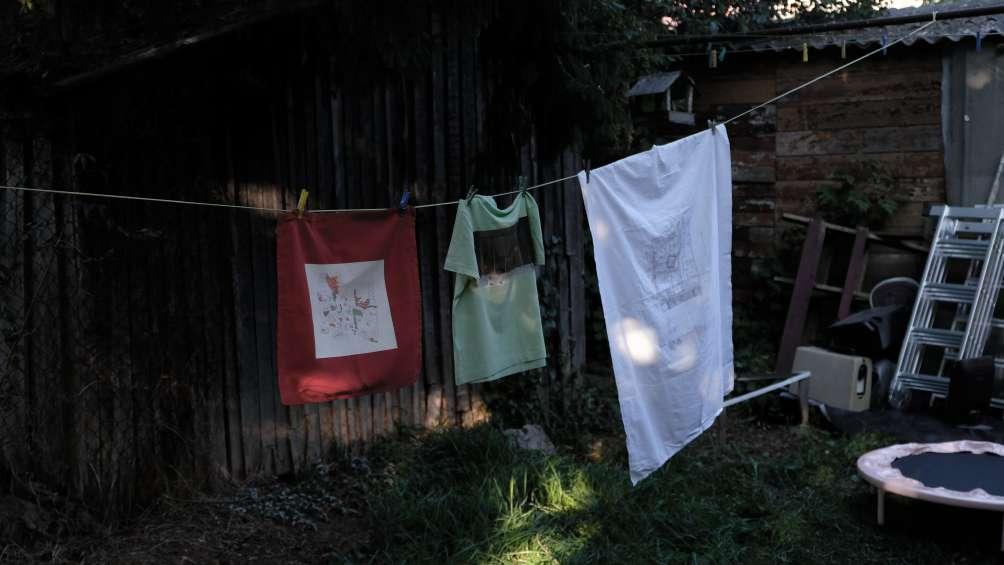
Figure4.7: TheExhibition:LaundrywithPrintedDrawingsonit.
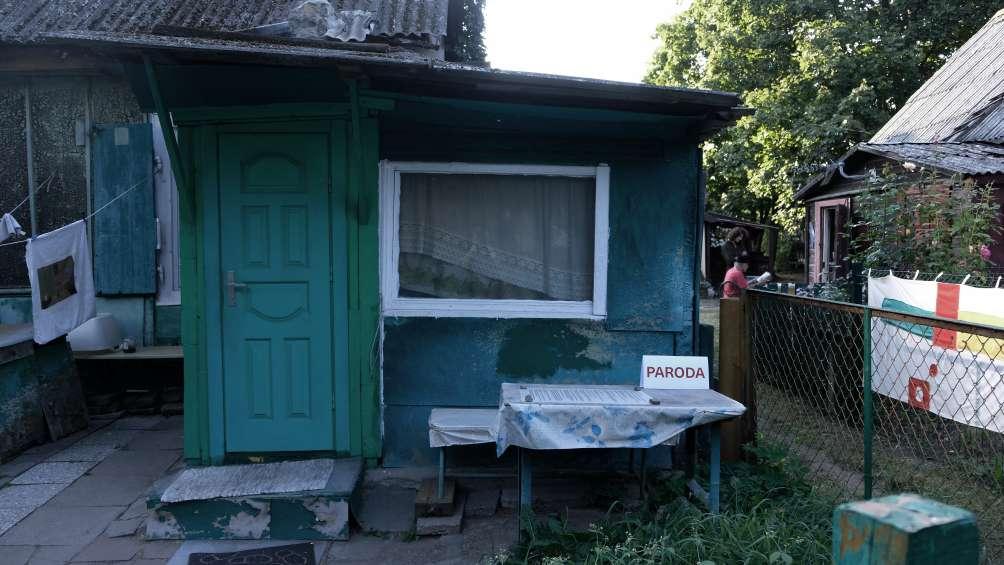
Figure4.8: TheExhibition:anExhibitionSignSaying”EXHIBITION”onthetable.
themainvenue:thegarden.TheHeritageDayisintendedasapubliceventtoexploreShanghai throughthediscoveryof3locations:1.Artists’Homes,2.DollManufacturers’House,and 3.TheGarden.Iammostlyinvolvedinthemakingofthegarden.Duringourconversations, Daliarevealsthatsheownsonemoreapartmentinthehousesheisliving.Herownapartment andthatotheruninhabitedonearenotconnected.Theyareatdifferentendsofthehouse. Itisaplaceofdust,sparematerials,dirt,Spiderwebs,anddarkness.Daliahasanideato usethisfortheheritagedays.ShesaysitshowsShanghai’scharacter.Oneweekbeforethe bigday,westartworkingonthedarkroom.Wesortoutthethingsthatwerestoredthere. Someofthemwethrowaway,somewekeepoutside.Weemptyupthespacecompletely. Thefloorsarewonky,rotten,andfullofspikeynailsstickingout.Wehammerthenailsin andwalkaroundtofindsomethingtocoverthewonkyfloors.Finally,theflooriscovered byalldifferentsortsofpatchesofboards.Wecleanthewallswithabrush.Tonsofdust fallsdown.Wecleantheceilings;nomorespiderwebsarevisible.Wecleanthewindows10 timesbecauseeverytenminutesitgetsdustyagain.Wecleanthehearth.Weborrowcarpets fromtheneighboursandcoverthefloorboardswiththem.Wehangamirrorandthepaintings foundinthesurroundings.Webringbackared,thickwoodentable.Igetflowersfromthe gardenandusethemtodecoratethetable.Wecanrentitnow,Daliasays.Butwewillhave tosplittheincomebetweenthosewhohelpedmetomaintainit.Welaugh.Besidesme,there arearoundtwentyneighboursinvolvedintheprocess.Somearecleaning,somearecutting thelawn,somearemakingsurethattherearenocarsparkedonthelawnonthedayofthe event.Itisaconstantcommunicationbetweentheneighboursonwhatisthiseventfor,why isitneededandwhoisgoingtocome.Byaskingthesequestions,havingtoanswerthem,and listeningtotheseconversationstheinhabitantsofShanghaihaveputthemselvesinaposition ofsteppingasideandthinking,ofwhatisitintheplacetheylivethatcouldbeinterestingand valuable.
2.Maybeyouhavesomethingtoshow?Daliaasksmecoupleofweekstothedateofthe event.ThatisthedayIforthefirsttimerevealaboutmyresearchandthevisualelementsthat itcontains.Iwasreadynottotalkaboutitatall.Butafteramonthofdailycorrespondence andexchangeoffavoursandknowledge,peoplestartedbeingcurious.”Youshouldshowcase yourdrawings”,Daliainsists.Ispendsometimethinkingaboutitbutultimately,Iagree.Ido notwanttoshowcasemyworkinamannerthatwouldappearaspropositional.IknowthatIf Ishowthem,Iwantthemtobetheretogenerateconversationabouttheeverydayandnothing more.IaskDaliaifshethinksIcouldshowcasemyworkinoneofthesub-gardens.Daliahelps metoasktheowner,andheagreeswithnodoubt.Idonotpreparethegarden,andexplicitly asktheownertonotworryaboutitatall.Probablyfornothing,becausewhenthedayofthe eventcame,theownerhasforgottenaboutourdeal.It’sfineanyhow,becauseallIneededis
alaundryropeandtheoutsidetable.Iuselaundryropeasanexhibitionwall,andlaundryas mycanvas.Ihangthelaundryinthegarden.Actualdryinglaundryhangsinthebackground. Onthetable,Iplaceabigsignsaying”EXHIBITION”inredcapitalletters.Itbecomesclear thatthisisnotmygardenandthatIamalocal.Itisanexhibition:somethingforeign,an interpretationoftheneighbourhoodfromaforeignperspective.Thereisnothreat,thisisjust anexhibitionandnotaproposalofanysort.Theideabehinditisthatinaplacewherewashing andhanginglaundryalloveryourandyourneighbour’sgardensisadailypractice.Therefore, thelaundryassimilateswiththeenvironmentandsuddenlythewholeenvironmentturnsinto canvas.AsifIamportrayingmythoughtsonthisplacedirectlyonit.Theexpositionmakes peoplelookfortheirhousesonthemaps,talkaboutthefutureofShanghai,andcreateother differentdiscussionsbetweentheinhabitantsandpeopleofVilnius.Theexhibitionconsists oftwoparts.Theworksthemselvesandthewrittennarrativebehind.Thetextisprintedon transparentchalkpaper,leavingtheoriginal,worn,andearthytableclothvisible.Itsignifies thefactthatmyresearchistryingtogetascloseaspossibletotheenvironment(asifthetext waswrittenonthetablecloth),butitwillneverbe(itiswrittenonpaper).Again,thesign warns,thatbehindthefencethereissomethingspeculative,visual,andmaybeprovocative.It wasawarningthatwhensteppedoverthisfencethereisaspeculationofchange,ofseeing thepresentwhilefrustratingitwithasenseofpastandfuture,thatitmightbeuncomfortable. TheexhibitiondefamiliarizesthepresentthroughmyresearchofShanghai’spastandstartsa conversationhowthispresentcouldbecarriedintothefuture.
Overall,byconstantlydistinguishingbetweentherealityanddream,onecanbecomeaware oftheeveryday.Thereisaconstantcontemplationbetweendescribingthespaceandthe thoughts,theinnerandouterworld.Duringthestudy,Shanghaiwastreatedasafamilyof transitionalobjectsthatnegotiatebetweenthepreservationists’realityanddream,betweenthe innerandtheouterworld.Thepresentwasexperiencedasfamiliar.Thepersonperforming andjudgingisthesame.Duringthisprocessofreification,certainthings/happenings,those generatingcriticaldialoguebetweentwoworlds,raisedthoughts,questionsandappearedto beimportantandrelevanttothepreservationist.Someofthoseare:(1)Shanghai’smaterial ambiguityopensalotofpossibilitiesforcreativityand(2)Shanghai’scultureofcareasavery prevalentfeature.Moreover,throughinstallationandeventorganisation,Shanghai’speople wereinvitedtofacetheirmundanerealityfromadistance.Inotherwords,thepresentwas experiencedasunfamiliar.Themostremarkablenoteisthatinthiswaythepersonmoderating theexperienceandtheoneexperiencingaredifferent.Therefore,whileusingthismethod, theconclusionwaslessclear.DuringthisprocessofreificationIcouldonlyobservepeople’s reactionsbutnotspeakforwhattheyfoundimportant.Theinternalrealityremainsinternal.I wastheonemostlycuratingtheexperience.However,stillthereweremomentswherepeople

weresuggestiveandreactionaryaboutcertainthings:(1)Shanghai’smaterialambiguityopens alotofpossibilitiesforcreativity,(2)Shanghaiisaveryinterwovencommunityofthingspeople andcircumstances,and(3)Shanghai’scultureofcare:people’sreadinesstochange.
Toconclude,thereisaneedforaplatformwhichwouldencouragethepublictoact andwouldprovidethelocalcommunitieswithasenseofagency.Therearemethods proposedabovetoemployforchoice-makingprocesstobecomeanegotiationbetweenartists, preservationists,architects,stateinstitutionsandmostimportantly,community.Importantly, thesupportfromthestateandtherecognitionfromaboveisaprerequisite.Thisisbecausethe stateisandwillbesettingthepolicies,distributingfinancialsupportandmore.Nevertheless, theinstitutionsneedtopayattentiontocommunitiesandtheirthoughtsonheritageandon whatshouldbethememoriesthatthefuturewillbring.
Figure4.9: ActsofMaintenanceinShanghai:PhotoEssayMadewhileontheField.
Figure4.10: ActsofMaintenanceinShanghai:PenonPaper.
Hecarriesalaminatedpamphletinhisbreastpocket,foldedintothirds,alistof allthepoemsheknows.Standingonthetrainplatform,orwaitinginlineatthe grocerystore,hetakesoutthislistandrecitesapoeminhismind.Ifhedoesn’t practicethem,helosesthem.[…]I’mintriguedbyhiscollection,soprecarious, requiringconstantmaintenance,andworthnothing.Itproducesnoappreciation invalue,justpractice.
-EulaBiss26
Wearetemporarycustodiansofthecitywhokeeptakingcareofit.Grinda,CHC,heritage institutions,andthecommunityofShanghai.Justlikethatmanwhocarriesthepamphlet ofpoemsandrecitesthemeverydayonthetrain.Withnoreproductivepower,theman practicesthepoemsjustlikepeopleinShanghaipracticecare.Ifthemanstoppedpractising, hewouldlosethepoems.Althoughthepoemshavenotangiblevalue,theyarepartofhis everydaypresent.ThisisalsothecaseofShanghai.Itwillsimplydisappearifnottaken careof.Onesidentifyingeverydayobjectsaspartoftheirhistoricalpresentandcaringfor themarepreservationists.ThemanonthetrainplatformaswellasShanghai’scommunity arepreservationists.Preservationistsusetransitional/quasi-objectstoplaymake-believeand constantlyquestionwhatisthehistoricalpresentandwhatshouldbethememoryofthefuture. Thisresearchhasshownthatculturedoesnottransitionasfastastheeconomy,and thereforeinthecaseofatransitionalcapitaloneneedstobeawareofthatdifferenceinpace. Theessayhascoveredtheimportanceofculturebeingportrayedtogetherwithitsqualitiessuch asuncertaintyorinstability.Shanghaiistobedemolishedinthenearfutureunlessaheritage statuswouldbeprovided.Theessayhasarguedthatitdeservesheritagestatuseventhough itssocio-economicconditionisincrisis.Shanghai,acentralneighbourhoodofatransitional
capitalVilnius,istheplacewhereconsequencesoftherapideconomicandpoliticaltransitions areexperiencedthestrongest.Shanghaiexhibitscontinuityinbuildingtradition,resilienceto constantchange,andcontinuousnaturalecologyofurbandevelopment.Thereisnoneedto arguethatShanghaiisanexemplarycaseofaculturalobject.Shanghaiexhibitsthefailuresof Vilnius’transitiontogetherwithitssuccesses,andthatmakestheneighbourhoodanexemplary caseofsuchculturalwitness.Tobeginthediscussiononwhatpartsofthepresentshouldbe carriedontothefuture,thereisaneedtofirstlearntohistoricisethepresent.Heritagediscourse canbeagreatplatformtotryandunderstandthehistoricalpresent.Heritageobjectscanbe seenastransitionalobjects,helpingustounderstandthecurrentrealitythroughthelensofthe past,andtogaininsightintothefuture.Finally,ifwearesearchingforthecultureoftoday, weneedtolookintowhatpeoplearedoingtoday,intooureverydaypractice,intoobjects fromoureveryday.Thisessayisnottryingtoinventacriticalconservationdiscourse,asit isalreadyexistent.Itratheristryingtoopenupthediscoursetothepublic.Theessayhas coveredexamplesofpreservationists(architectsandartists)thatprovideasenseoftemporal continuity.Inthosecases,thepreservationistchosetopreservetheobject.Theessayhas arguedheritageshouldbeapublicdiscourse,andpreservationconsideredasaculturaland socialpublicpractice.Preservationisnotboundtoonlytakingcareofwhatoneowns,but takingcareofwhatismeaningful,whichinitselfisaneverydayinterrogationoftherelationship betweenpeopleandthings.
Thisessayiswrittenthroughapersonallens.Throughalensthatisformedbasedon mypersonalexperiences,background,andknowledge.Eventhoughduetothisreasonthe exactmethodsorfindingsarenotgoingtoapplytoothercontexts,thelineofthoughtmight beusefulwhentalkingaboutothertransitionalmetropolisesandtheirconflictedartefacts.I conductedthisresearchasanarchitect,Vilniuscitizenandpreservationist,andtheresultof myownreificationwiththeneighbourhood,Icansaythatinallthemethodsperformedone momentkeptcomingforward:Shanghaiisaneighbourhoodthathasacenturylongtradition ofmaintenanceandcarewhichisvisiblejustasmuchinthematerialasinthesocialrealmof Shanghai.
Landmarkshelponetofaceuncertaintyandtheunknownfuture.Landmarksarecultural objectswillbecomememoriesofthefuture.Itisveryimportantthattheprocessofchoosing theminvolvesacontinuousprocessofreificationwiththepresent,nomatterifusingthe methodsproposed,orotherones,butbydoingthatonewilldiscoverthatprecarity,instability andchaosareunavoidablypartofreality.Theseareculturalvaluesdependentonvarious contextsandshouldnotdecreasetheobject’sculturalimportance.Thepurposeofthisessay wastoshowthatthepublicshallbeconsideredaspreservationistsoftheirdailyenvironment. Undoubtedly,statesupportforpreservingplacesisnecessaryforfinancialandpolicy-related
reasons.Therefore,itwouldnotbepossibletoswitchfromacompletelyinstitutionalised approachtoacompletelypublic.Heritageshouldbecomeaculturaldiscoursefornegotiation betweenthestateandthepublicandbetweenthepast,presentandfuture.Heritagebrings discussionsonpast,presentandfutureforward,andthereforeintroducestheelementof historicitytotheculturaldebatetoday.Itisofgreatimportancethatheritagediscoursewould becomemorepublicwithtime,becauseonlythenuncertaintyandinstability,whicharenow definingtheeverydayofmanycommunitiesintransitionalcapitals,couldbecomepartofour culture.
1. WalterBenjamin, Thearcadesproject [ineng],FirstHarvardUniversityPresspaperbackedition,ed.Howard EilandandKevinMacLaughlin(Cambridge,MassachusettsLondon,England:TheBelknapPressofHarvard UniversityPress,2002).
2. RonaldA.Beghetto,“HowTimesofCrisisServeasaCatalystforCreativeAction:AnAgenticPerspective,” FrontiersinPsychology 11(January2021):2.
3. RodneyHarrison, Heritage:criticalapproaches (MiltonPark,Abingdon;NewYork:Routledge,2013),77.
4. Harrison,77.
5. AccordingtothecurrentUNESCOrequirements,inorderforanobjecttobecomeaUNESCOheritage siteithastobeof”OutstandingUniversalValue”.Eventhoughthiscriteriadirectlyappliestoapplicationsfor UNESCOheritagesitesonly,thepublishedUNESCOdocumentstendtohaveamojorinfluenceonlocalpolicies aswell.UNESCOdefinesthetermaccordingly.”OutstandingUniversalValuemeansculturaland/ornatural significancewhichissoexceptionalastotranscendnationalboundariesandtobeofcommonimportancefor presentandfuturegenerationsofallhumanity”.FormoreonUNESCOcriteriapleasesee UNESCOWorld HeritageCentre-Compendium
6. HalFoster, Badnewdays:art,criticism,emergency (London;NewYork:Verso,2015),102.
7. TedSheltonandTriciaStuth,“ArchitectureandHumanAttachment:AnInterviewwithJorgeOtero-Pailos” [inen], JournalofArchitecturalEducation 72,no.2(July2018):197.
8. LeeFriedlander, Shadow—NewYorkCity,fromtheportfolio15Photographs,1966.
1. SoniaHirtandKirilStanilov, Twentyyearsoftransition:theevolutionofurbanplanninginEasternEurope andtheformerSovietUnion,1989-2009,HumansettlementsGlobalDialogueSeries5,OCLC:ocn492333188 (Nairobi,Kenya:U.N.HABITAT,2009),ix.
2. HirtandStanilov,ix.
3. IndrėGražulevičiūtė-Vileniškėetal.,“Contingentvaluationofbuiltheritagepropertiesinatransitioncountry: acaseofLithuania,” InternationalJournalofStrategicPropertyManagement 15,no.4(January2012):398.
4. HirtandStanilov, Twentyyearsoftransition,2.
5. Gražulevičiūtė-Vileniškėetal., “Contingentvaluationofbuiltheritagepropertiesinatransitioncountry,” 398.
6. RemigijusČiegisetal.,“Ethicalvaluesandsustainabledevelopment:Lithuanianexperienceinthecontextof globalisation,” TechnologicalandEconomicDevelopmentofEconomy 14,no.1(March2008):30.
7. Čiegisetal.,30.
8. KristenRoghehGhodseeandMitchellA.Orenstein, Takingstockofshock:socialconsequencesofthe1989 revolutions [ineng](NewYork(N.Y.):Oxforduniversitypress,2021),190.
9. RemKoolhaasandHalFoster, Junkspacewithrunningroom [ineng](Honiton,Devon:NottingHillEditions, 2013),4.
10. KoolhaasandFoster,48.
11. VaivaAglinskas,“Caughtinthewaitinggame:community,creativityandeverydaylifeinŠnipiškės” [inen],in Santalka:filosofija,komunikacija,vol.22,Issue:1JournalAbbreviation:Belaukiantlikimo: bendruomeniškumas,kūrybiškumasirkasdienybėŠnipiškėse(2014),77.
12. RūtaUbarevičienė,DonatasBurneika,andEdisKriaučiūnas,“ThesprawlofVilniuscity-establishment andanalysisofgrowingurbanregion,” AnnalesGeographicae 43-44,nos.43-44(2010):98.
13. BrianLarkin,“ThePoliticsandPoeticsofInfrastructure”[inen], AnnualReviewofAnthropology 42,no. 1(October2013):328.
14. ThisstatementreferstoonebyMierleLadermanUkeles:”ThankyouforkeepingNYCAlive!”duringher TouchSanitationPerformance,MierleLadermanUkeles, TouchSanitationPerformance,1979
15. Theoriginofthenametobeexplanedlaterinthischapter 16. Aglinskas, “Caughtinthewaitinggame,”78.
17. Aglinskas,77–78.
18. Shanghaiisveryoftenidentifiedbythepressasavillagewithinthecity.Someexamplesofsuchdescriptions are:”AfeelingofacountrysideinthecenterofVilnius”in Rajonas.Kaimopojūtismiestocentre–Vilniaus ŠnipiškiųŠanchajussurežisiereJūrateSamulionyte [inlt],January2022;”InShanghaiyouyouareinavillage andinthecenterofVilniusatthesametime.”in Rajonas.KontrastingasisVilniausŠanchajusŠnipiškėsesumiesto antropologeJekaterinaLavrinec [inlt],June2022.TheessaywilllaterexplainthefeaturesofShanghaiwhich couldbeidentifiedasrural.
19. Thenewlybuiltskyscrapersandfacelessapartmentblocksinvolvethedestructionofeverythingthatwas Shanghai,withnoefforttobringbackmemoriesofShanghai’snature,orthespatialatmospherethatexistedhere earlier.AlmantasSamalavicius,ArnoldasGabrėnas,andAgnėGabrėnienė,“ThenewcenterofVilnius:spatial transformationandchallengesofgeniusloci.,” JournalofBalticStudies,May2023,12
20. Foster, Badnewdays,52.
21. OxfordEnglishDictionary andalsosee HalFoster, Blindspots:theartofJoachimKoester
22. Foster,52–53.
23. Foster,52.
24. Foster,53.
25. AlexanderKluge, Thedevil’sblindspot:talesfromthenewcentury [ineng],trans.MartinChalmersand MichaelHulse(NewYork:NewDirectionsBooks,2007).
26. TheemailisreceivedfromscholarinantropologyandUrbanStudies,JekaterinaLavrinevic,inresponse toarequestofaninterview.Thescholaraddedanotetoherresponseandsaid:”Also,apartofthepopulation
opposesthenamesofShanghaiorSkansen-becausethefirstoneiscriminalizedandtheotheroneisbureaucratic andcorrespondstoonlyonepartofthehistoricaldistrict.Therearemoreneutralnames-Šnipiškės,wooden Šnipiškės,historicalŠnipiškės-withoutburdensomeconnotations.”TheemailistranslatedfromLithuanianto English.Shanghaiisanicknameandnotanofficialnameoftheneighbourhood.Thisnameisusedbyboth thelocalsandotherresidentsofVilnius.Somepeoplearguethatithasemergedfromtheneighbourhood’sin contrasttoitsmodernisingurbanenvironment.Theessaywon’tgodeepintooriginsofitbutwillacknowledge it’sconnotations.TheterritoryofShanghaiisdefinedbythreeroads:Krokuvos,Daugeliskio,andKalvariju. ShanghaiisalsosurroundedbyatightcommercialdistricttotheSouth,newlybuiltandstillexpandingresidential districttotheNorth,andaresidentialneighbourhoodtotheEast.
27. Benjamin, Thearcadesproject
28. Samalavicius,Gabrėnas,andGabrėnienė, “ThenewcenterofVilnius,”2.
29. SauliusMotieka,“BesiformuojančioVilniausmoderniojocentrourbanistinismodelis,” Journalof ArchitectureandUrbanism 33,no.4(December2009):196.
30. AlmantasSamalavičius, Lithuanianarchitectureandurbanism:essaysinhistoryandaesthetics [ineng] (NewcastleuponTyne:CambridgeScholarsPublishing,2019).
31. Theaspectofcommercialisationneverwasandsuddenlybecameadefiningelement.
32. Aglinskas, “Caughtinthewaitinggame,”78.
33. AlmantasLiudasSamalavičiusandArnoldasGabrėnas,“TheLegacyofLithuanianUrbanandSemi-Urban VernacularArchitectureandPossibilitiesofItsPreservation”[inen], Buildings 12,no.12(November2022):2.
34. Samalavicius,Gabrėnas,andGabrėnienė, “ThenewcenterofVilnius,”andalsosee BirutėRūta Vitkauskienė,IngridaTamošiūnienė,andAušrinėŽilevičiūtė, Vilniausmiestoplanai,MapsoftheCityofVilnius (Vilnius:Lietuvosnacionalinismuziejus,2016)
35. Samalavicius,Gabrėnas,andGabrėnienė, “ThenewcenterofVilnius,”10.
36. Aglinskas, “Caughtinthewaitinggame,”83.
37. Samalavicius,Gabrėnas,andGabrėnienė, “ThenewcenterofVilnius,”11.
38. SamalavičiusandGabrėnas, “TheLegacyofLithuanianUrbanandSemi-UrbanVernacularArchitecture andPossibilitiesofItsPreservation,”5.
39. KellyBaum,“October”[inen], Questionnaireon“TheContemporary” 130(October2009):93.
40. Baum,91.
41. ”Ur-Collage”isaprintedcollagemadebytheartistgluingimagesreflectingtheexistingworldtogether.It isacollageofadoublepageadvertisementandanimageprintedoutoftheinternet.Thepurposeofthecollage isnottobracketoutthecruelreality.Pleaseseemorein ThomasHirschhorn, Ur-Collage,2009
42. ThomasHirschhorn, Criticallaboratory:thewritingsofThomasHirschhorn [ineng],ed.HalFosterand LisaLee,Octoberbooks(Cambridge,Massachusetts:TheMITPress,2013),295.
43. Alsoatitleofthebookwherethistextistakenfrom:Foster, Badnewdays,99
44. Hirschhorn,307.
45. Foster, Badnewdays,104; JudithButler,“PrecariousLife,Vulnerability,andtheEthicsofCohabitation,”
TheJournalofSpeculativePhilosophy 26,no.2(2012):150
46. In RobertVenturi, Complexityandcontradictioninarchitecture,2ded,TheMuseumofModernArtpapers onarchitecture(NewYork:Boston:MuseumofModernArt;distributedbyNewYorkGraphicSociety,1977) RobertVenturireferstothe”MainStreet”as”almostalright”.
1. VikramPrakash, RethinkingHistoricPreservationwithJorgeOtero-Pailos [ineng].
2. Referingheretothecaseoftransitionalcities,wheresiocio-political,economicandculturalchangescaused ahighlevelofuncertainty
3. Prakash.
4. ThisreferstothereplacementofthecenterofVilniusfromahistoriccontexttoacommercialcontext.
5. FredricJameson, Postmodernism,or,Theculturallogicoflatecapitalism [ineng],2.print.inpaperback, repr.2008(London:Verso,2008),286–287.
6. Jameson,284.
7. Jameson,284.
8. Harrison, Heritage,77.
9. JorgeOtero-Pailos,ErikLangdalen,andThordisArrhenius,eds., Experimentalpreservation,OCLC: ocn949988227(Zürich,Switzerland:LarsMüllerPublishers,2016).
10. Otero-Pailos,Langdalen,andArrhenius, Experimentalpreservation,29;Jameson, Postmodernism,or,The culturallogicoflatecapitalism,284–287
11. ElizabethRachelRomanow,“AestheticsofdefamiliarizationinHedeigger,Duchamp,andPonge”[in English](PhDdiss.,StanfordUniversity,2013).
12. DavidLowenthal, ThePastisaForeignCountry–Revisited,1sted.(CambridgeUniversityPress,February 2015),464–496.
13. LaurajaneSmith, Usesofheritage [ineng],Repr,Heritagestudies(London:Routledge,2010),4. 14. Smith,4.
15. Smith,3.
16. Smith,3–4.
17. Otero-Pailos,Langdalen,andArrhenius, Experimentalpreservation,30; LaurajaneSmith, Archaeological theoryandthepoliticsofculturalheritage [ineng],Repr(London:Routledge,2006)
18. Otero-Pailos,Langdalen,andArrhenius, Experimentalpreservation,30.
19. Otero-Pailos,Langdalen,andArrhenius,30.
20. Smith, Usesofheritage,44.
21. KendallL.Walton, Mimesisasmake-believe:onthefoundationsoftherepresentationalarts [ineng] (Cambridge,(Mass.):Harvarduniversitypress,1990),4.
22. SomogyVarga,“Winnicott,symbolicplay,andotherminds”[inen], PhilosophicalPsychology 24,no.5 (October2011):625–637.
23. DonaldWoodsWinnicott, Throughpaediatricstopsycho-analysis:collectedpapers [ineng](NewYork: Brunner/Mazel,1992).
24. DonaldWoodsWinnicott, Playingandreality [ineng](London:Routledge,2005),8.
25. Winnicott,5.
26. Winnicott,xx.
27. Winnicott,xx.
28. Otero-Pailos,Langdalen,andArrhenius, Experimentalpreservation,35.
29. SheltonandStuth, “ArchitectureandHumanAttachment,”195.
30. HannaB.Hölling,FrancescaG.Bewer,andKatharinaAmmann,“Materials,Objects,Transitions:Jorge Otero-PailosinConversationwithHannaB.Hölling,”in TheExplicitMaterial,ed.HannaB.Hölling,Francesca G.Bewer,andKatharinaAmmann(BRILL,May2019),260.
31. Hölling,Bewer,andAmmann,258.
32. Hölling,Bewer,andAmmann
33. Hölling,Bewer,andAmmann
34. Smith, Usesofheritage,17.
35. Smith,3.
36. JukkaJokilehto,“PreservationTheoryUnfolding,” FutureAnterior:JournalofHistoricPreservation, History,Theory,andCriticism 3,no.1(2006):1.
37. Smith, Usesofheritage,55.
38. TakenfromtheinterviewwithSalvijusKulevičius.Theinterviewisaddedasanappendix.
39. TakenfromtheinterviewwithheritagescholarSalvijusKulevičius.Theinterviewisnotpublishedbutall relevantexerptsareincludedinthetext.
40. Harrison, Heritage,14.
41. Harrison,14.
42. Harrison,14.
43. Smith, Usesofheritage,3.
44. Smith,1.
45. DanielM.Abramson, Obsolescence:AnArchitecturalHistory [inen](UniversityofChicagoPress,2016), 14.
46. Smith, Usesofheritage,3.
47. LuiseRellensmann,“ReviewedWork(s):Counterpreservation:ArchitecturalDecayinBerlinsince1989by DanielaSandler,” FutureAnterior:JournalofHistoricPreservation,History,Theory,andCriticism 16,no.2, 122.
48. Harrison, Heritage,56.
49. Harrison,56.
50. YurikoSaito, AestheticsoftheFamiliar [inen],vol.1(OxfordUniversityPress,July2017).
51. AreferencetothecriteriaanobjecthastoqualifytobecomeUNESCOheritageobject.Oneofthecriteria isforanobjecttoposses”OutstandingUniversalValue”.
52. DaliborVesely, Architectureintheageofdividedrepresentation:thequestionofcreativityintheshadow ofproduction [ineng](Cambridge,Mass.:MITPress,2004),376.
53. Harrison, Heritage,7.
54. Harrison
55. GeorgesPerec, Speciesofspacesandotherpieces [ineng],Revidesed,Penguinclassics(London:Penguin Books,1999),210.
56. “Theinventionofeverydaylife,”in DoingTime,vol.11,Culturefront(NewYorkUniversityPress,2000), 77.
57. “Theinventionofeverydaylife,”78.
58. Forovereviewpleasesee “Theinventionofeverydaylife,”80
59. DellUpton,“ArchitectureinEverydayLife”[inen], NewLiteraryHistory 33,no.4(2002):707.
60. Upton,22.
61. FrançoisPenz, CinematicAidedDesign:AnEverydayLifeApproachtoArchitecture [inen],1sted.(New York:Routledge,2017.:Routledge,August2017),22.
62. Penz,22.
63. Penz,13.
64. Harrison, Heritage.
65. HenriLefebvre, CritiqueofEverydayLife [ineng],One-vol.ed(London:Verso,2014),523.
66. SheltonandStuth, “ArchitectureandHumanAttachment,”197.
67. Harrison, Heritage,18.
1. Prakash, RethinkingHistoricPreservationwithJorgeOtero-Pailos.
2. SheltonandStuth, “ArchitectureandHumanAttachment.”
3. SheltonandStuth,197.
4. SalvadorMunoz-Vinas, ContemporaryTheoryofConservation [inen],0thed.(Routledge,May2012),25.
5. Munoz-Vinas, ContemporaryTheoryofConservation,25.
6. Munoz-Vinas,26.
7. ByDanielBluestonein EricaAvrami,RandallMason,andMartadelaTorre, ValuesandHeritage Conservation,ResearchReport(LosAngeles:TheGettyConservationInstitute,2000)
8. DavidLowenthal, Possessedbythepast:theheritagecrusadeandthespoilsofhistory (NewYork:FreePress, 1996).
9. DenisCosgrove,ed., ShouldWeTakeItAllSoSeriously?Culture,Conservation,andMeaninginthe ContemporaryWorld,technicalreport(1994).
10. Munoz-Vinas, ContemporaryTheoryofConservation,29.
11. Munoz-Vinas,29–30.
12. FedericaGoffi, Timematter(s):inventionandre-imaginationinbuiltconservation:theunfinisheddrawing andbuildingofSt.Peter’s,theVatican (Farnham,Surrey,England;Burlington,CT:Ashgate,2013),3.
13. By”those”thisessayreferstointernationalorganisationsandstateinstitutionssettingthelocalheritage policies.
14. Goffi,5.
15. MaximilianSternberg, HansDöllgast:Post-WarHeritageReconstructionbyMaxSternberg,MartinCentre ResearchSeminarSeries,Cambridge,UK,2020.
16. Sternberg.
17. Sternberg.
18. MaximilianSternberg,“HansDöllgast,post-warreconstructionandmodernarchitecture”[inen], The JournalofArchitecture 27,nos.2-3(April2022):290.
19. MarcoFrascari,“CarloScarpainMagnaGraecia:TheAbatellisPalaceinPalermo,”Publisher:Architectural AssociationSchoolofArchitecture, AAFiles,no.9(1985):3.
20. Frascari,4.
21. MarcoFrascari,“AHeroicandAdmirableMachine:TheTheateroftheArchitectureofCarloScarpa, ArchitettoVeneto,” PoeticsToday 10,no.1(1989):116.
22. Frascari,110.
23. Frascari,111.
24. Goffi, Timematter(s)
25. Frascari, “AHeroicandAdmirableMachine.”
26. SheltonandStuth, “ArchitectureandHumanAttachment,”197.
27. Munoz-Vinas, ContemporaryTheoryofConservation
28. PleaseseeovereviewinMunoz-Vinas, ContemporaryTheoryofConservation
29. Munoz-Vinas,72.
30. Munoz-Vinas.
31. Smith, Usesofheritage,39.
32. AzraAksamija, FutureHeritageCollection,2014.
33. Otero-Pailos,Langdalen,andArrhenius, Experimentalpreservation.
34. Otero-Pailos,Langdalen,andArrhenius.
35. Otero-Pailos,Langdalen,andArrhenius.
36. Otero-Pailos,Langdalen,andArrhenius
37. Otero-Pailos,Langdalen,andArrhenius.
38. MierleLadermanUkeles, Manifestoformaintenanceart,1969!,1969.
39. Ukeles.
40. HilarySample, Maintenancearchitecture (Cambridge,Massachusetts:TheMITPress,2016),1.
41. ChristopherAlexander, Thetimelesswayofbuilding (NewYork:OxfordUniversityPress,1979),475–292.
42. AgnesDenes, Wheatfield-AConfrontation:BatteryParkLandfill,1982.
43. PegRawes,“Architecturalecologiesofcare:architecture,natureandsubjectivity,” RelationalArchitectural Ecologies,2013,40–55.
44. Rawes.
45. Sample, Maintenancearchitecture,4; MartinHeidegger, Thequestionconcerningtechnologyand otheressays [ineng],trans.WilliamLovitt,HarperPerennialmodernthought(NewYork;LondonToronto: HarperCollinsPublishers,2013),147
46. LouisRogers, Thesharingnotcaringeconomy [inen],March2021.
47. Rogers.
48. ShakerswereareligioussectactiveinTheUSin1700s.
49. EulaBiss, Havingandbeinghad (NewYork:RiverheadBooks,2020).
50. Harrison, Heritage,39.
1. AlbertoPérez-Gômez,“Questionsofrepresentation:thepoeticoriginofarchitecture,”in FromModels toDrawings:Imaginationandrepresentationinarchitecture,vol.2,Critiques:CriticalStudiesinArchitectural Humanities(NewYork,NY:Routledge,2017),21.
2. Walton, Mimesisasmake-believe,72.
3. FedericaGoffi,“Architecture’stwinnedbody:buildinganddrawing,”in FromModelstoDrawings: Imaginationandrepresentationinarchitecture,vol.2,Critiques:CriticalStudiesinArchitecturalHumanities (NewYork,NY:Routledge,2017),96.
4. Walton, Mimesisasmake-believe
5. Goffi, “Architecture’stwinnedbody:buildinganddrawing,”96.
6. WitoldPlotka,“TheRiddleofReason:InSearchofHusserl’sConceptofRationality,” Bulletind’analyse phénoménologique 2(2009):15–16.
7. InsightsfromTaoDuFour’smethodologyforhis TaoDufour, HusserlandSpatialityAPhenomenological EthnographyofSpace (NewYork,NY:Routledge,2022)
8. NaderEl-Bizri,“Imaginationandarchitecturalrepresentations,”in FromModelstoDrawings:Imagination andrepresentationinarchitecture,vol.2,CRITIQUES:CriticalStudiesinArchitecturalHumanities(NewYork, NY:Routledge,2017),34.
9. DonaldKunze,“Concealment,delayandtopologyinthecreationofwondrousdrawing,”in FromModels toDrawings:Imaginationandrepresentationinarchitecture,vol.2,Critiques:CriticalStudiesinArchitectural Humanities(NewYork,NY:Routledge,2017),137.
10. Goffi, Timematter(s),194.
11. FionaMacdonald, ThomasDemand:Makinghistory–withpaper [inen].
12. See HalFoster,“DailinessAccordingtoDemand”[inen], October 158(October2016):100–112and RolandBarthes,“Therealityeffect,”in Therustleoflanguage,trans.RichardHoward(Berkeley:Universityof California,1989),141–148
13. Foster, “DailinessAccordingtoDemand,”109.
14. SeeFoster, “DailinessAccordingtoDemand”and NormanBryson, Lookingattheoverlooked:fouressays onstilllifepainting [ineng],Reprinted,Essaysinartandculture(London:ReaktionBooks,2018)
15. Foster,109.
16. The”dream-like”referstoWalterBenjaminandhowhedescribedthatthe”realizationofdreamelements, inthecourseofwakingup”isamomentof”historicalawakening”.SeeBenjamin, Thearcadesproject 17. Foster,105.
18. JudithMottram,“Marksinspace:thinkingaboutdrawing,”in FromModelstoDrawings:Imagination andrepresentationinarchitecture,vol.2,Critiques:CriticalStudiesinArchitecturalHumanities(NewYork,NY: Routledge,2017),195.
19. Foster, “DailinessAccordingtoDemand,”112.
20. ThomasDemandInterview:ConstructingtheAuthentic,2013.
21. Goffi, Timematter(s),63.
22. Saito, AestheticsoftheFamiliar,10.
23. SeemoreinVesely, Architectureintheageofdividedrepresentation,380–383
24. Vesely, Architectureintheageofdividedrepresentation,72.
25. AgainareferencetothemethodologyusedinDufour, HusserlandSpatialityAPhenomenological EthnographyofSpace
26. Biss, Havingandbeinghad .
Abramson,DanielM. Obsolescence:AnArchitecturalHistory [inen].UniversityofChicagoPress,2016.
Aglinskas,Vaiva.“Caughtinthewaitinggame:community,creativityandeverydaylifeinŠnipiškės”[in en].In Santalka:filosofija,komunikacija,22:77–86.Issue:1JournalAbbreviation:Belaukiantlikimo: bendruomeniškumas,kūrybiškumasirkasdienybėŠnipiškėse.2014.
Aksamija,Azra. FutureHeritageCollection,2014.
Alexander,Christopher. Thetimelesswayofbuilding.NewYork:OxfordUniversityPress,1979.
Avrami,Erica,RandallMason,andMartadelaTorre. ValuesandHeritageConservation.ResearchReport. LosAngeles:TheGettyConservationInstitute,2000.
Barthes,Roland.“Therealityeffect.”In Therustleoflanguage,translatedbyRichardHoward,141–148. Berkeley:UniversityofCalifornia,1989.
Baum,Kelly.“October”[inen]. Questionnaireon“TheContemporary” 130(October2009):91–96.
Beghetto,RonaldA.“HowTimesofCrisisServeasaCatalystforCreativeAction:AnAgenticPerspective.” FrontiersinPsychology 11(January2021):1–7.
Benjamin,Walter. Thearcadesproject [ineng].FirstHarvardUniversityPresspaperbackedition.Editedby HowardEilandandKevinMacLaughlin.Cambridge,MassachusettsLondon,England:TheBelknapPress ofHarvardUniversityPress,2002.
Biss,Eula. Havingandbeinghad.NewYork:RiverheadBooks,2020.
El-Bizri,Nader.“Imaginationandarchitecturalrepresentations.”In FromModelstoDrawings:Imaginationand representationinarchitecture,2:34–43.CRITIQUES:CriticalStudiesinArchitecturalHumanities.New York,NY:Routledge,2017.
Bryson,Norman. Lookingattheoverlooked:fouressaysonstilllifepainting [ineng].Reprinted.Essaysinart andculture.London:ReaktionBooks,2018.
Butler,Judith.“PrecariousLife,Vulnerability,andtheEthicsofCohabitation.” TheJournalofSpeculative Philosophy 26,no.2(2012):134–151.
Čiegis,Remigijus,AlgirdasGavėnauskas,NijolėPetkevičiūtė,andDaliaŠtreimikienė.“Ethicalvaluesand sustainabledevelopment:Lithuanianexperienceinthecontextofglobalisation.” Technologicaland EconomicDevelopmentofEconomy 14,no.1(March2008):29–37.
Cosgrove,Denis,ed. ShouldWeTakeItAllSoSeriously?Culture,Conservation,andMeaninginthe ContemporaryWorld.Technicalreport.1994.
Denes,Agnes. Wheatfield-AConfrontation:BatteryParkLandfill,1982. Dufour,Tao. HusserlandSpatialityAPhenomenologicalEthnographyofSpace.NewYork,NY:Routledge, 2022.
Foster,Hal. Badnewdays:art,criticism,emergency.London;NewYork:Verso,2015.
Blindspots:theartofJoachimKoester
Foster,Hal.“DailinessAccordingtoDemand”[inen]. October 158(October2016):100–112.
Frascari,Marco.“AHeroicandAdmirableMachine:TheTheateroftheArchitectureofCarloScarpa,Architetto Veneto.” PoeticsToday 10,no.1(1989):103.
.“CarloScarpainMagnaGraecia:TheAbatellisPalaceinPalermo.”Publisher:ArchitecturalAssociation SchoolofArchitecture, AAFiles,no.9(1985):3–9.
Friedlander,Lee. Shadow—NewYorkCity,fromtheportfolio15Photographs,1966.
Ghodsee,KristenRogheh,andMitchellA.Orenstein. Takingstockofshock:socialconsequencesofthe1989 revolutions [ineng].NewYork(N.Y.):Oxforduniversitypress,2021.
Goffi,Federica.“Architecture’stwinnedbody:buildinganddrawing.”In FromModelstoDrawings: Imaginationandrepresentationinarchitecture,2:88–99.Critiques:CriticalStudiesinArchitectural Humanities.NewYork,NY:Routledge,2017.
. Timematter(s):inventionandre-imaginationinbuiltconservation:theunfinisheddrawingandbuilding ofSt.Peter’s,theVatican.Farnham,Surrey,England;Burlington,CT:Ashgate,2013.
Gražulevičiūtė-Vileniškė,Indrė,VytautasJanilionis,JūratėGuščinskienė,andLigitaAžukaitė.“Contingent valuationofbuiltheritagepropertiesinatransitioncountry:acaseofLithuania.” InternationalJournalof StrategicPropertyManagement 15,no.4(January2012):394–415.
Harrison,Rodney. Heritage:criticalapproaches.MiltonPark,Abingdon;NewYork:Routledge,2013.
Heidegger,Martin. Thequestionconcerningtechnologyandotheressays [ineng].TranslatedbyWilliamLovitt. HarperPerennialmodernthought.NewYork;LondonToronto:HarperCollinsPublishers,2013.
Hirschhorn,Thomas. Criticallaboratory:thewritingsofThomasHirschhorn [ineng].EditedbyHalFosterand LisaLee.Octoberbooks.Cambridge,Massachusetts:TheMITPress,2013.
Ur-Collage,2009.
Hirt,Sonia,andKirilStanilov. Twentyyearsoftransition:theevolutionofurbanplanninginEasternEuropeand theformerSovietUnion,1989-2009.HumansettlementsGlobalDialogueSeries5.OCLC:ocn492333188. Nairobi,Kenya:U.N.HABITAT,2009.
Hölling,HannaB.,FrancescaG.Bewer,andKatharinaAmmann.“Materials,Objects,Transitions:Jorge Otero-PailosinConversationwithHannaB.Hölling.”In TheExplicitMaterial,editedbyHannaB. Hölling,FrancescaG.Bewer,andKatharinaAmmann,255–272.BRILL,May2019.
Jameson,Fredric. Postmodernism,or,Theculturallogicoflatecapitalism [ineng].2.print.inpaperback,repr. 2008.London:Verso,2008.
Jokilehto,Jukka.“PreservationTheoryUnfolding.” FutureAnterior:JournalofHistoricPreservation,History, Theory,andCriticism 3,no.1(2006).
Kluge,Alexander. Thedevil’sblindspot:talesfromthenewcentury [ineng].TranslatedbyMartinChalmers andMichaelHulse.NewYork:NewDirectionsBooks,2007.
Koolhaas,Rem,andHalFoster. Junkspacewithrunningroom [ineng].Honiton,Devon:NottingHillEditions, 2013.
Kunze,Donald.“Concealment,delayandtopologyinthecreationofwondrousdrawing.”In FromModels toDrawings:Imaginationandrepresentationinarchitecture,2:137–146.Critiques:CriticalStudiesin ArchitecturalHumanities.NewYork,NY:Routledge,2017.
Larkin,Brian.“ThePoliticsandPoeticsofInfrastructure”[inen]. AnnualReviewofAnthropology 42,no.1 (October2013):327–343.
Lefebvre,Henri. CritiqueofEverydayLife [ineng].One-vol.ed.London:Verso,2014.
Lowenthal,David. Possessedbythepast:theheritagecrusadeandthespoilsofhistory.NewYork:FreePress, 1996.
ThePastisaForeignCountry–Revisited.1sted.CambridgeUniversityPress,February2015.
Rajonas.Kaimopojūtismiestocentre–VilniausŠnipiškiųŠanchajussurežisiereJūrateSamulionyte [inlt], January2022.
Rajonas.KontrastingasisVilniausŠanchajusŠnipiškėsesumiestoantropologeJekaterinaLavrinec [inlt],June 2022.
Macdonald,Fiona. ThomasDemand:Makinghistory–withpaper [inen].
Motieka,Saulius.“BesiformuojančioVilniausmoderniojocentrourbanistinismodelis.” JournalofArchitecture andUrbanism 33,no.4(December2009):195–210.
Mottram,Judith.“Marksinspace:thinkingaboutdrawing.”In FromModelstoDrawings:Imaginationand representationinarchitecture,2:137–146.Critiques:CriticalStudiesinArchitecturalHumanities.New York,NY:Routledge,2017.
Munoz-Vinas,Salvador. ContemporaryTheoryofConservation [inen].0thed.Routledge,May2012.
Otero-Pailos,Jorge,ErikLangdalen,andThordisArrhenius,eds. Experimentalpreservation.OCLC: ocn949988227.Zürich,Switzerland:LarsMüllerPublishers,2016.
OxfordEnglishDictionary
Penz,François. CinematicAidedDesign:AnEverydayLifeApproachtoArchitecture [inen].1sted.NewYork :Routledge,2017.:Routledge,August2017.
Perec,Georges. Speciesofspacesandotherpieces [ineng].Revidesed.Penguinclassics.London:PenguinBooks, 1999.
Pérez-Gômez,Alberto.“Questionsofrepresentation:thepoeticoriginofarchitecture.”In FromModels toDrawings:Imaginationandrepresentationinarchitecture,2:11–23.Critiques:CriticalStudiesin ArchitecturalHumanities.NewYork,NY:Routledge,2017.
Plotka,Witold.“TheRiddleofReason:InSearchofHusserl’sConceptofRationality.” Bulletind’analyse phénoménologique 2(2009):1–29.
Prakash,Vikram. RethinkingHistoricPreservationwithJorgeOtero-Pailos [ineng].
Rawes,Peg.“Architecturalecologiesofcare:architecture,natureandsubjectivity.” RelationalArchitectural Ecologies,2013,40–55.
Rellensmann,Luise.“ReviewedWork(s):Counterpreservation:ArchitecturalDecayinBerlinsince1989by DanielaSandler.” FutureAnterior:JournalofHistoricPreservation,History,Theory,andCriticism 16,no. 2.
Rogers,Louis. Thesharingnotcaringeconomy [inen],March2021.
Romanow,ElizabethRachel.“AestheticsofdefamiliarizationinHedeigger,Duchamp,andPonge”[inEnglish]. PhDdiss.,StanfordUniversity,2013.
Saito,Yuriko. AestheticsoftheFamiliar [inen].Vol.1.OxfordUniversityPress,July2017.
Samalavicius,Almantas,ArnoldasGabrėnas,andAgnėGabrėnienė.“ThenewcenterofVilnius:spatial transformationandchallengesofgeniusloci.” JournalofBalticStudies,May2023,1–18.
Samalavičius,Almantas. Lithuanianarchitectureandurbanism:essaysinhistoryandaesthetics [ineng]. NewcastleuponTyne:CambridgeScholarsPublishing,2019.
Samalavičius,AlmantasLiudas,andArnoldasGabrėnas.“TheLegacyofLithuanianUrbanandSemi-Urban VernacularArchitectureandPossibilitiesofItsPreservation”[inen]. Buildings 12,no.12(November2022): 1–18.
Sample,Hilary. Maintenancearchitecture.Cambridge,Massachusetts:TheMITPress,2016.
Shelton,Ted,andTriciaStuth.“ArchitectureandHumanAttachment:AnInterviewwithJorgeOtero-Pailos” [inen]. JournalofArchitecturalEducation 72,no.2(July2018):197.
Smith,Laurajane. Archaeologicaltheoryandthepoliticsofculturalheritage [ineng].Repr.London:Routledge, 2006.
Usesofheritage [ineng].Repr.Heritagestudies.London:Routledge,2010.
Sternberg,Maximilian.“HansDöllgast,post-warreconstructionandmodernarchitecture”[inen]. TheJournal ofArchitecture 27,nos.2-3(April2022):260–295.
HansDöllgast:Post-WarHeritageReconstructionbyMaxSternberg.MartinCentreResearchSeminar Series.Cambridge,UK,2020.
“Theinventionofeverydaylife.”In DoingTime,11:77–98.Culturefront.NewYorkUniversityPress,2000.
ThomasDemandInterview:ConstructingtheAuthentic,2013.
Ubarevičienė,Rūta,DonatasBurneika,andEdisKriaučiūnas.“ThesprawlofVilniuscity-establishmentand analysisofgrowingurbanregion.” AnnalesGeographicae 43-44,nos.43-44(2010):96–107.
Ukeles,MierleLaderman. Manifestoformaintenanceart,1969!,1969.
. TouchSanitationPerformance,1979.
UNESCOWorldHeritageCentre-Compendium.
Upton,Dell.“ArchitectureinEverydayLife”[inen]. NewLiteraryHistory 33,no.4(2002):707–723.
Varga,Somogy.“Winnicott,symbolicplay,andotherminds”[inen]. PhilosophicalPsychology 24,no.5 (October2011):625–637.
Venturi,Robert. Complexityandcontradictioninarchitecture.2ded.TheMuseumofModernArtpaperson architecture.NewYork:Boston:MuseumofModernArt;distributedbyNewYorkGraphicSociety, 1977.
Vesely,Dalibor. Architectureintheageofdividedrepresentation:thequestionofcreativityintheshadowof production [ineng].Cambridge,Mass.:MITPress,2004.
Vitkauskienė,BirutėRūta,IngridaTamošiūnienė,andAušrinėŽilevičiūtė. Vilniausmiestoplanai.Mapsofthe CityofVilnius.Vilnius:Lietuvosnacionalinismuziejus,2016.
Walton,KendallL. Mimesisasmake-believe:onthefoundationsoftherepresentationalarts [ineng].Cambridge, (Mass.):Harvarduniversitypress,1990.
Winnicott,DonaldWoods. Playingandreality [ineng].London:Routledge,2005. Throughpaediatricstopsycho-analysis:collectedpapers [ineng].NewYork:Brunner/Mazel,1992.
Norint saugoti ypatingą charakterį turinčias vietas, negalime fokusuotis į materialujį arba nematerialujį paveldą: yra labai svarbu suprasti, jog šie du nėra atskiriami. Taip pat ir medinėse Šnipiškėse, paveldas - tai ne medinė architektūra. Paveldas yra specifinis gyvenimo tempas, bendravimo būdai, socialiniai mainai, materialių objetų priežiūra. Kitais žodžiais: paveldas - tai vietos charakteris bei gyvenimo stilius, kurį architektūra įgalina. Tad nors ir medinė architektūra šioje vietovėje niekada nebuvo išskirtinė, tai jokiais būdais nereiškia, jog ši vieta architektūriškai nėra įdomi ar aktuali.
Medinės Šnipiškės yra kupinos gyvenimo. Gyvenimo, kurio tempas ir charakteris yra kitoks, nei likusio Vilniaus, kitoks nei tą , kurį asocijuojame su progresyvia ateitimi, bet jis yra savitas ir todėl vertingas. Šis projektas yra manifestas už atidų vietos vertinimą, gilų savitumo supratimą ir analizę, antropologinių, architektūrinių, socioekonominių bei istorinių žinių sintezę. Šis projektas atsisako tiesioginių materialinių asociacijų ir skatina socialinės bei architektūrinės logikos saugojimą, kuri tą savitumą ir išlaiko.
Šiomis dienomis, labai dažnai yra fokuosuojama į aplinkosauginį tvarumą ir pamirštama apie socialinio tvarumo svarbą. Šis projektas skatina pamatyti tvaraus gyvenimo sintezę. “PAVELDOSAUGA ŠIANDIEN” - tai projektas ne tik apie tvarią statybą bei ciklišką urbanizmą, bet ir turimų ir naujų gyvenimo tradicijų, kaimyninių ryšių puoselėjimą.
Trumpai, šis projektas siūlo permastyti esamą taką medinėse Šnipiškėse, kuris skirtingai nei kitos gatvės nėra apibrėžtas dviejų lygiagrečių tiesių, bet netaisyklingai bei dinamiškai išsidėsčiusių žemės sklypų formų. Labirintinės gatvės, netikėti posūkiai, kintantys vaizdai akiratyje yra esminės savybės skatinančios esamą medinių Šnipiškių charakterį. Tad šis projektas siūlo įsivaizduoti šį taką kaip naują Vilniaus urbanistinį tipą.
dynamic roofscape
diverse hearth types
garden organisation
the newly formed street

vietovės plano piešimas. Tušas ant popieriaus.
Detalus
Stengiamasi įžvelgti ir atskirti skirtingus architektūrinius ir urbanistinius elementus.
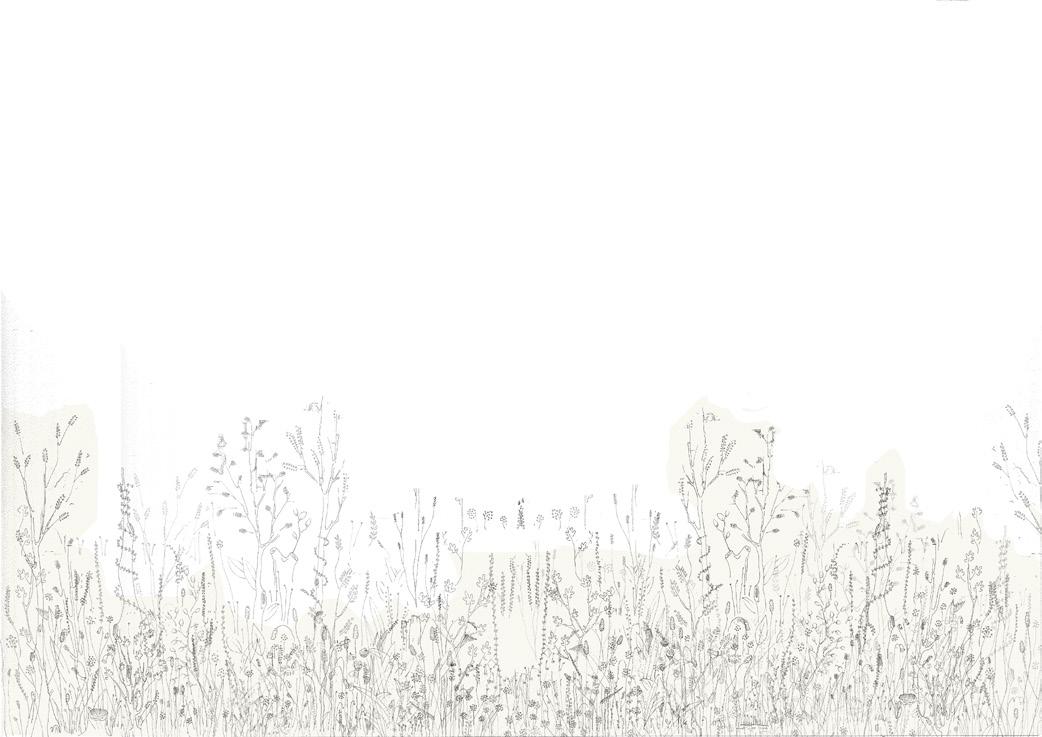
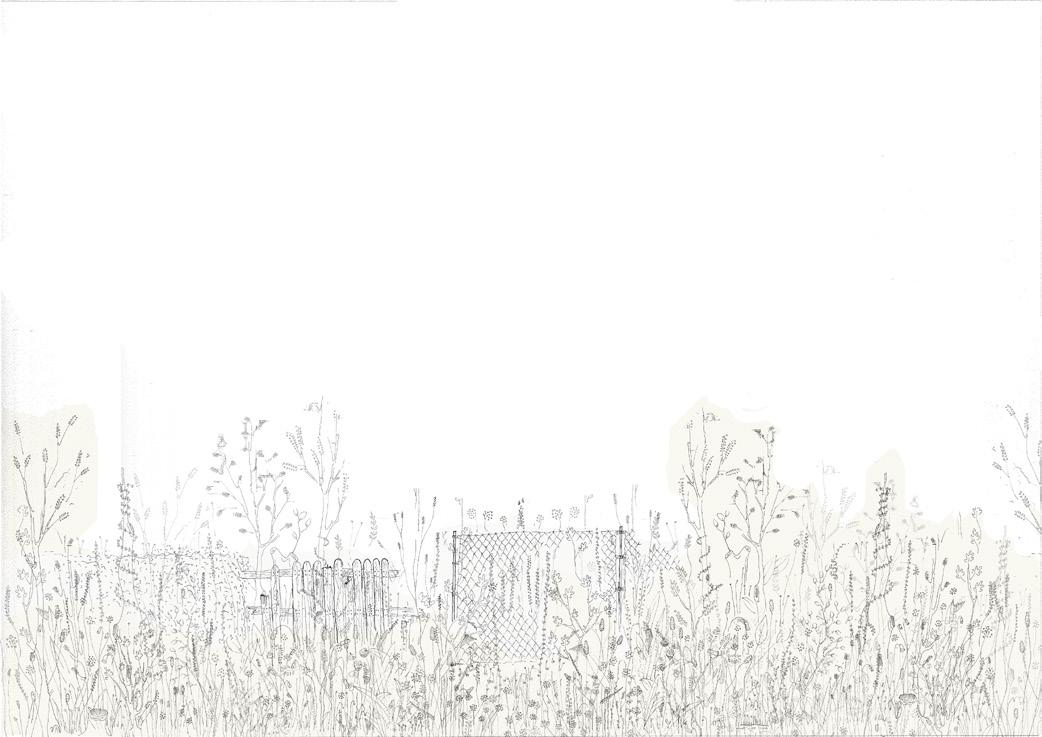


Vizualiųjų sluoksnių medinėse Šnipoškėse analizė. Nuo viršaus iki apačios: augulija, tvoros, negyvenamos struktūros, namai, mediena, takai, dirva, dangoraižiai.
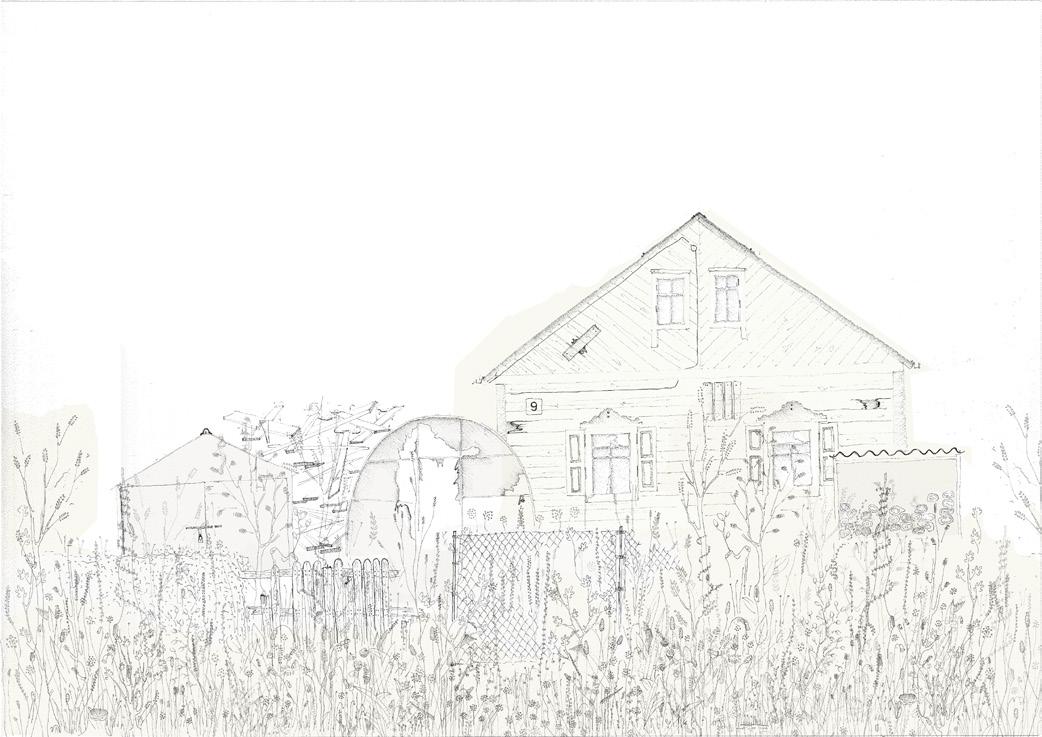

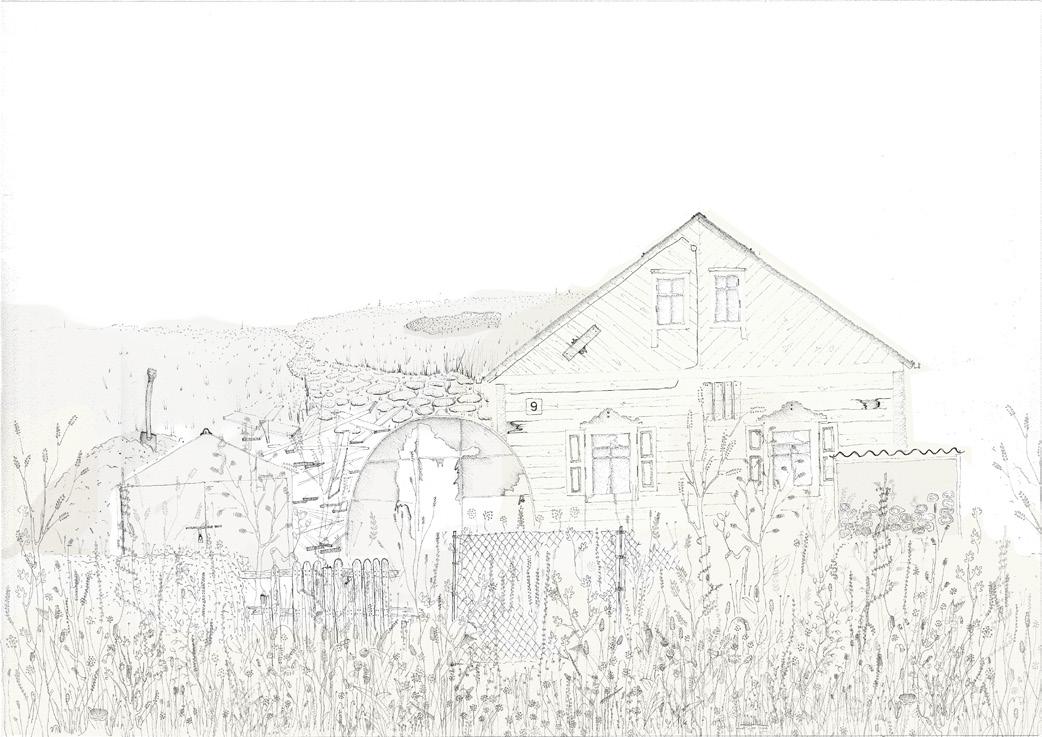

 Esamo grindinio analizė. Dirva - asfaltas - žvyras - apsodintas laukas - savaime apžėlęs laukas.
Esamo grindinio analizė. Dirva - asfaltas - žvyras - apsodintas laukas - savaime apžėlęs laukas.
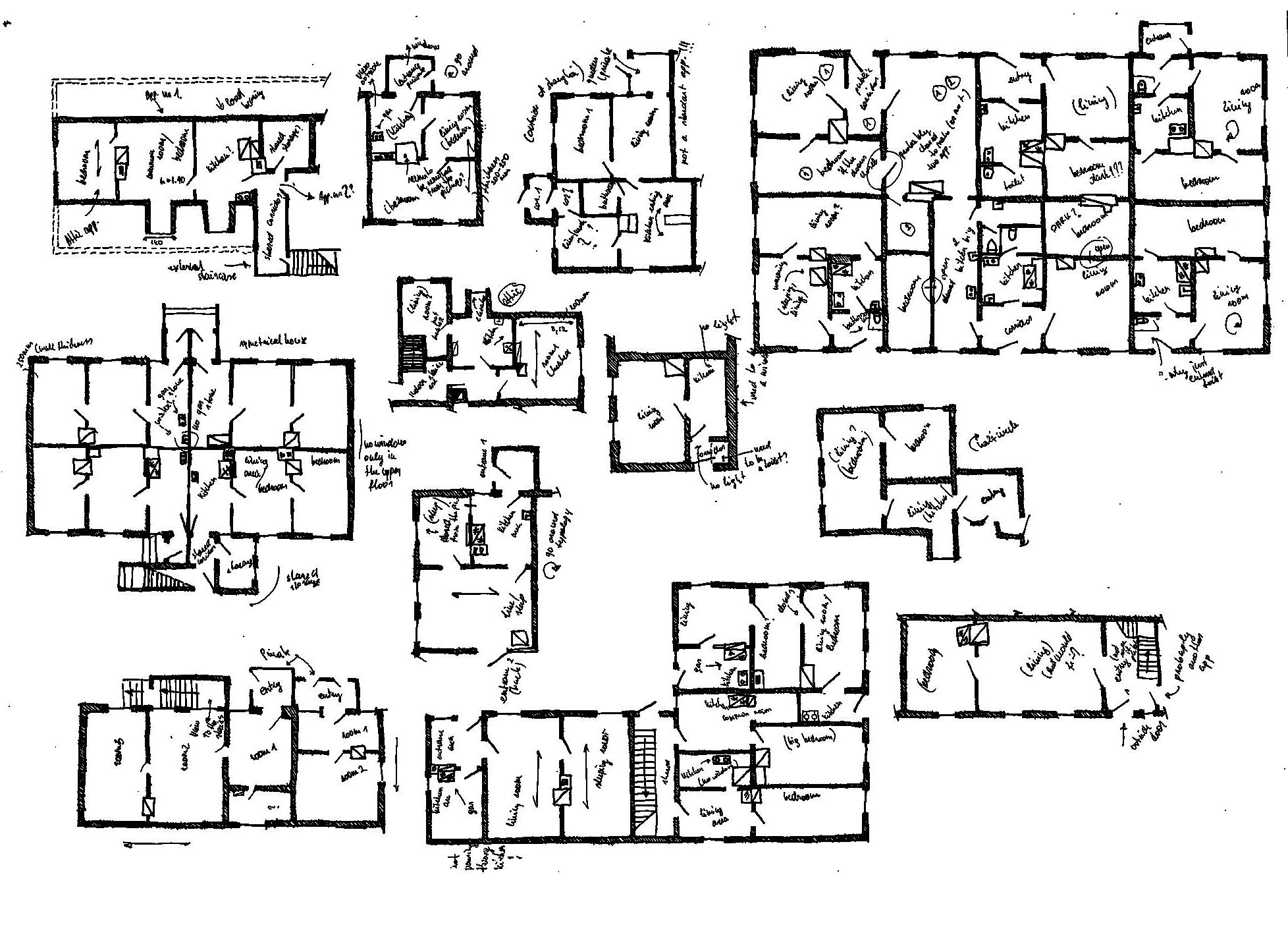
Esamų namų turinio analizė.

Priežiūros veiksnių analizė. Nuo savęs priežiūros iki namų, bei kaimyninių ryšių priežiūros.

Priežiūros veiksnių analizė. Nuo savęs priežiūros iki namų, bei kaimyninių ryšių priežiūros.

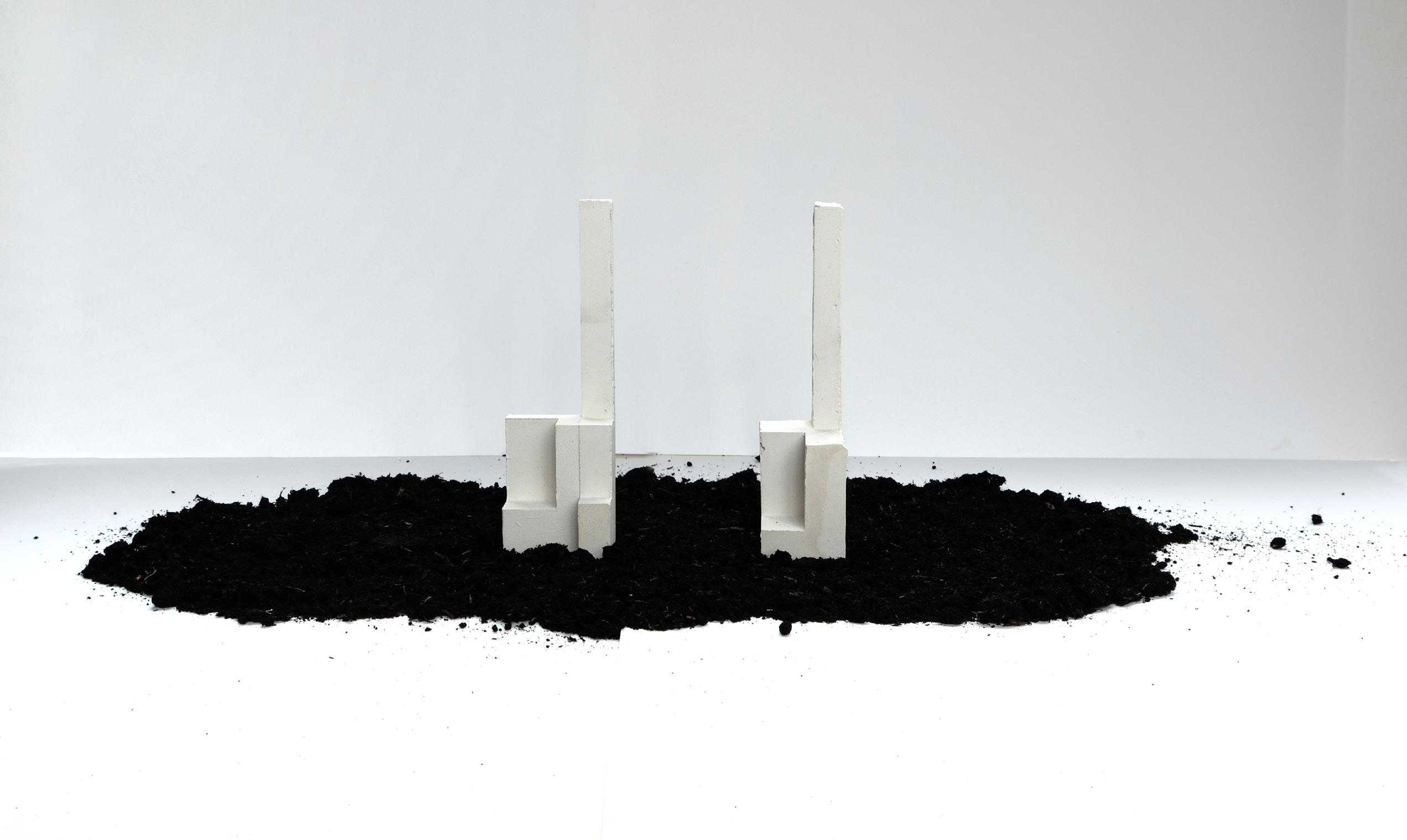
Esamų namų struktūros architektūrinė analizė - maketas.
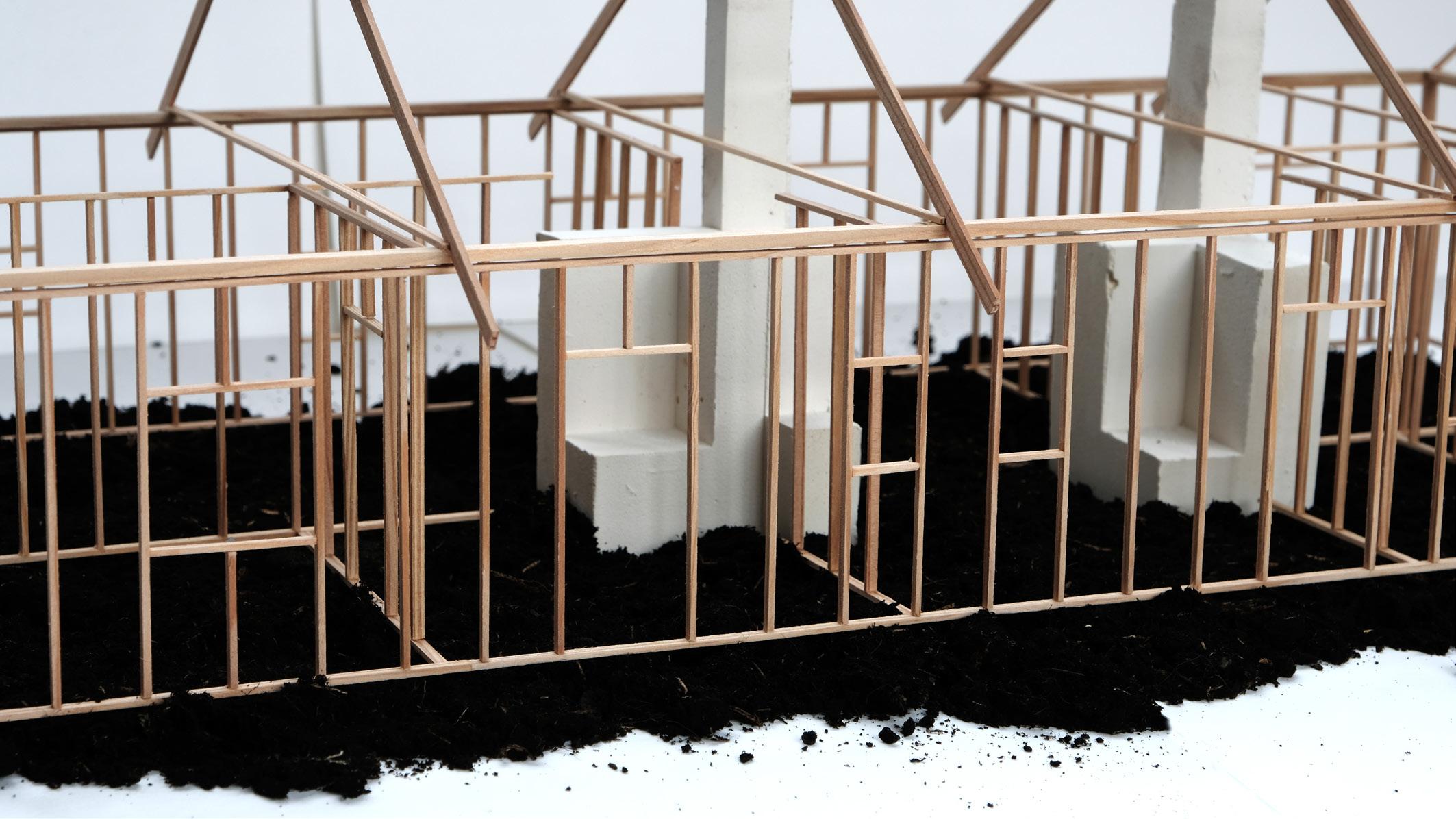
Esamų namų struktūros architektūrinė analizė - maketas.


Esamos situacijos foto-esė.
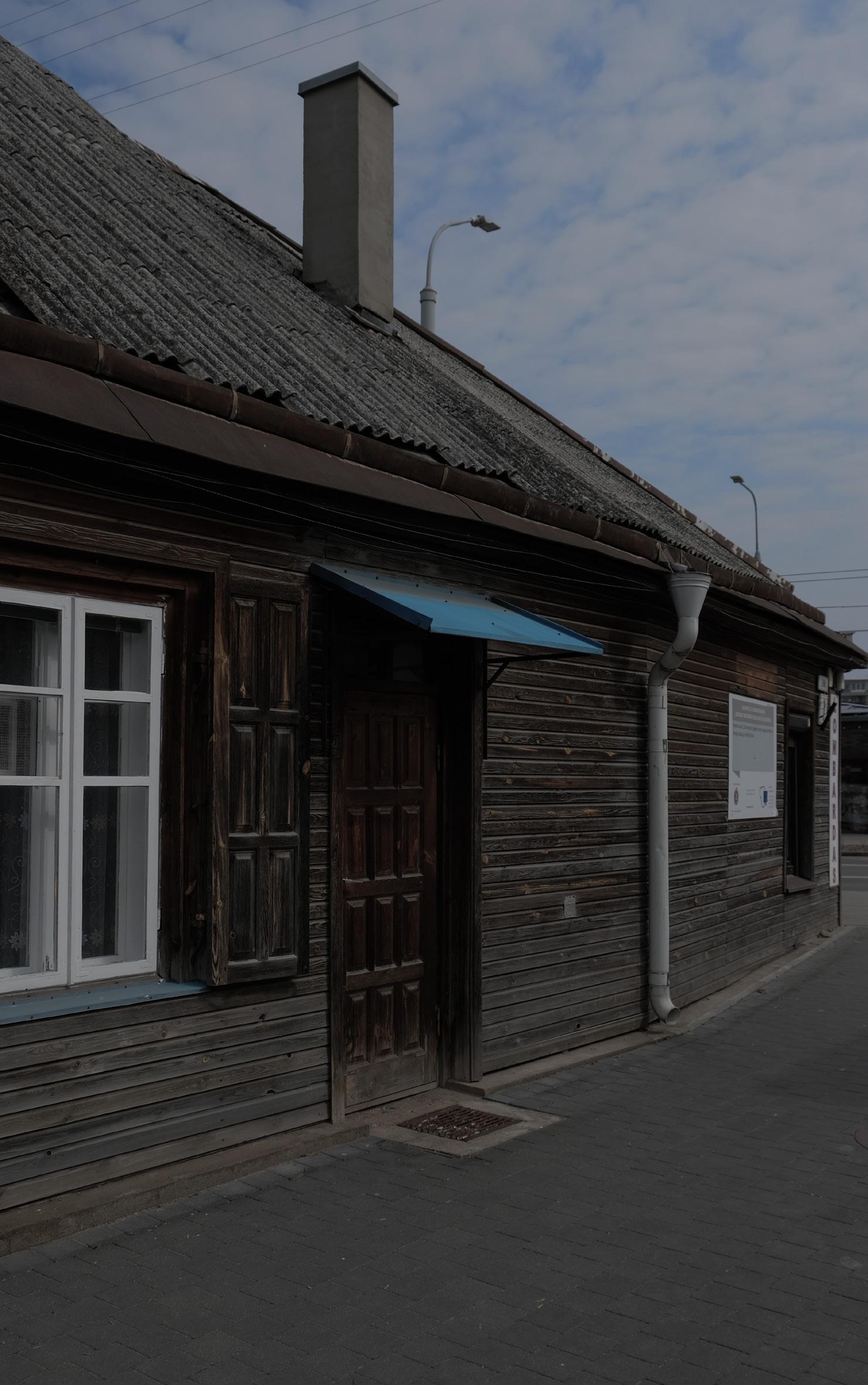
Esamos situacijos foto-esė.


Esamos situacijos foto-esė.
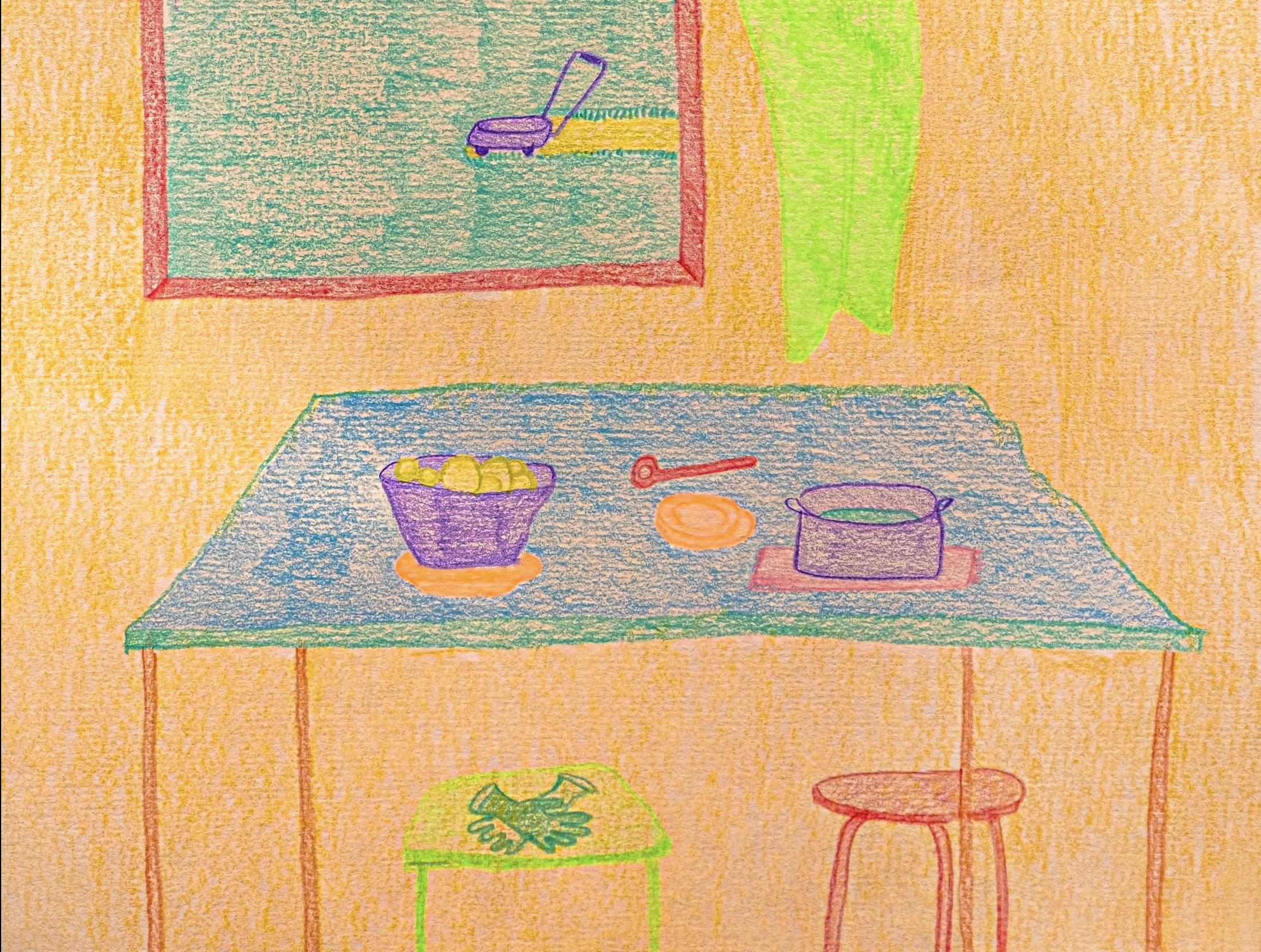 Piešinys analizuojantis socialinių mainų esmę. Pavyzdinė situacija matoma piešinyje: Kaimynas pjaunantis žolę yra kito kaimyno pakviečiamas pietų mainais.
Piešinys analizuojantis socialinių mainų esmę. Pavyzdinė situacija matoma piešinyje: Kaimynas pjaunantis žolę yra kito kaimyno pakviečiamas pietų mainais.
 Esamų interjerų erdvinė ir simbolinė analizė - maketas.
Esamų interjerų erdvinė ir simbolinė analizė - maketas.
 Esamų eksterjerų erdvinė ir simbolinė analizė - maketas.
Esamų eksterjerų erdvinė ir simbolinė analizė - maketas.
Esamas gatvės planas.
Esamas gatvės fragmento planas. Pečiai pažymėti žaliai.Medinės Šnipiškės Vilniaus architektūriniame kontekste.
Projekte analizuojama ir adresuojama gatvė (violetinė) bei esamos sklypų ribos (pilka).



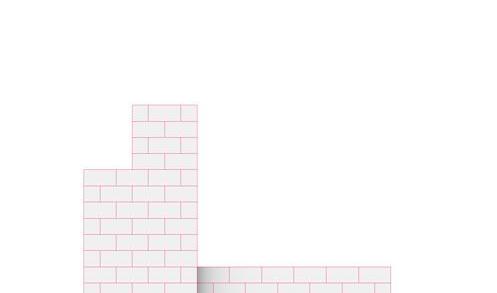


Pečius kaip erdvę formuojantis centrinis elementas.



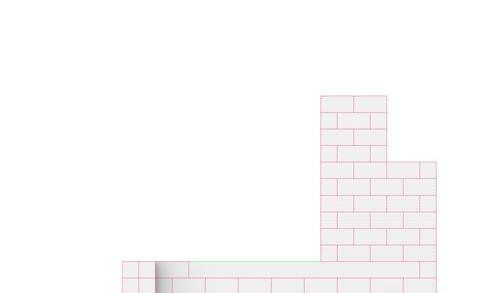


Gatvė bei ją sudarantys sluoksniai.
dynamic roofscape
diverse hearth types
garden organisation
the newly formed street
 Erdvinis testas: vertikalūs tūriai, siaura gatvelė. Maketas iš popieriaus.
Erdvinis testas: vertikalūs tūriai, siaura gatvelė. Maketas iš popieriaus.
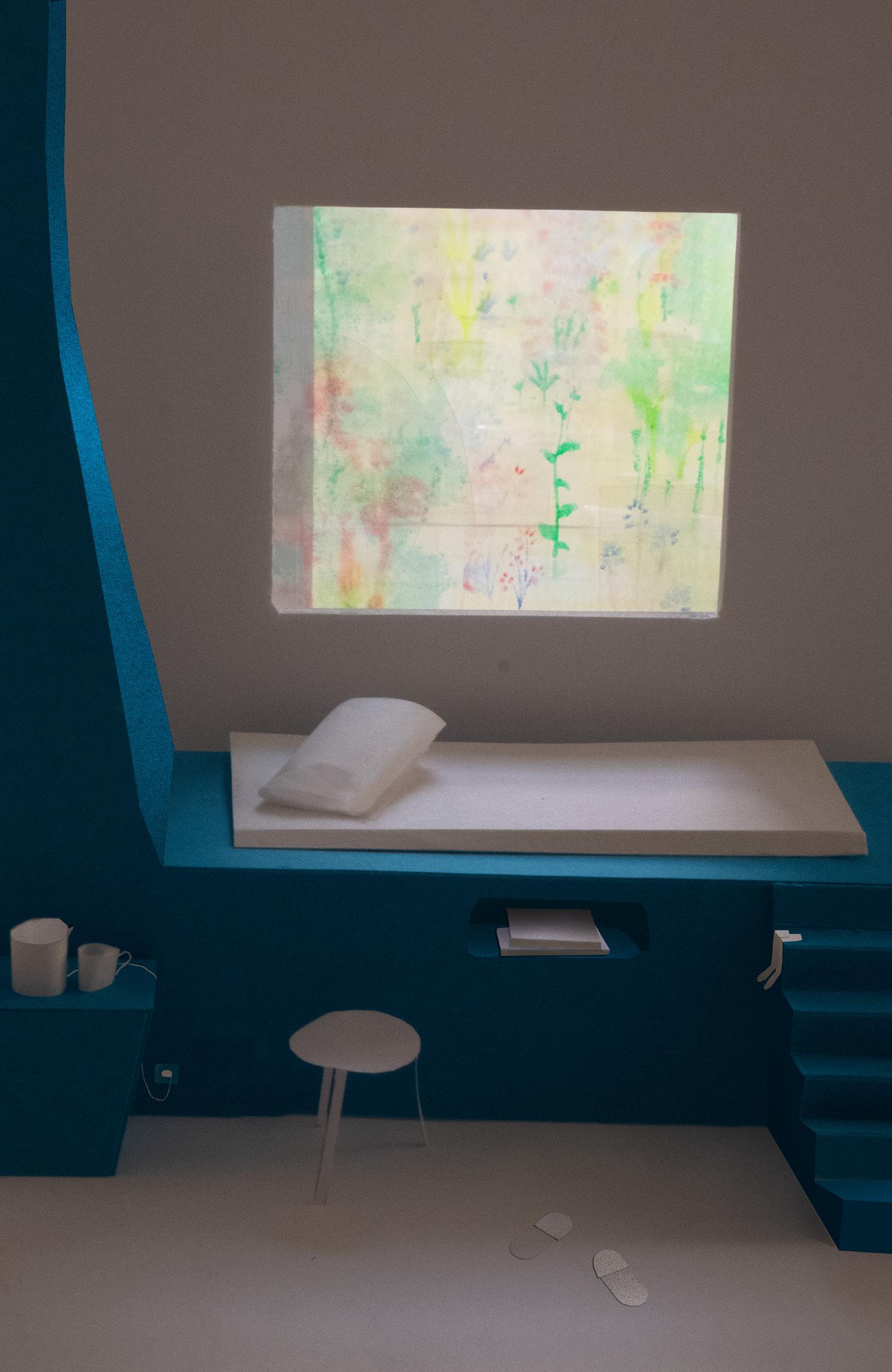 Erdvinis testas: pečius kaip miegamojį formuojantis elementas prie lango į gatvę. Maketas iš popieriaus.
Erdvinis testas: pečius kaip miegamojį formuojantis elementas prie lango į gatvę. Maketas iš popieriaus.

 Siūlomos gatvės fragmento pjūvis.
Siūlomos gatvės fragmento pjūvis.
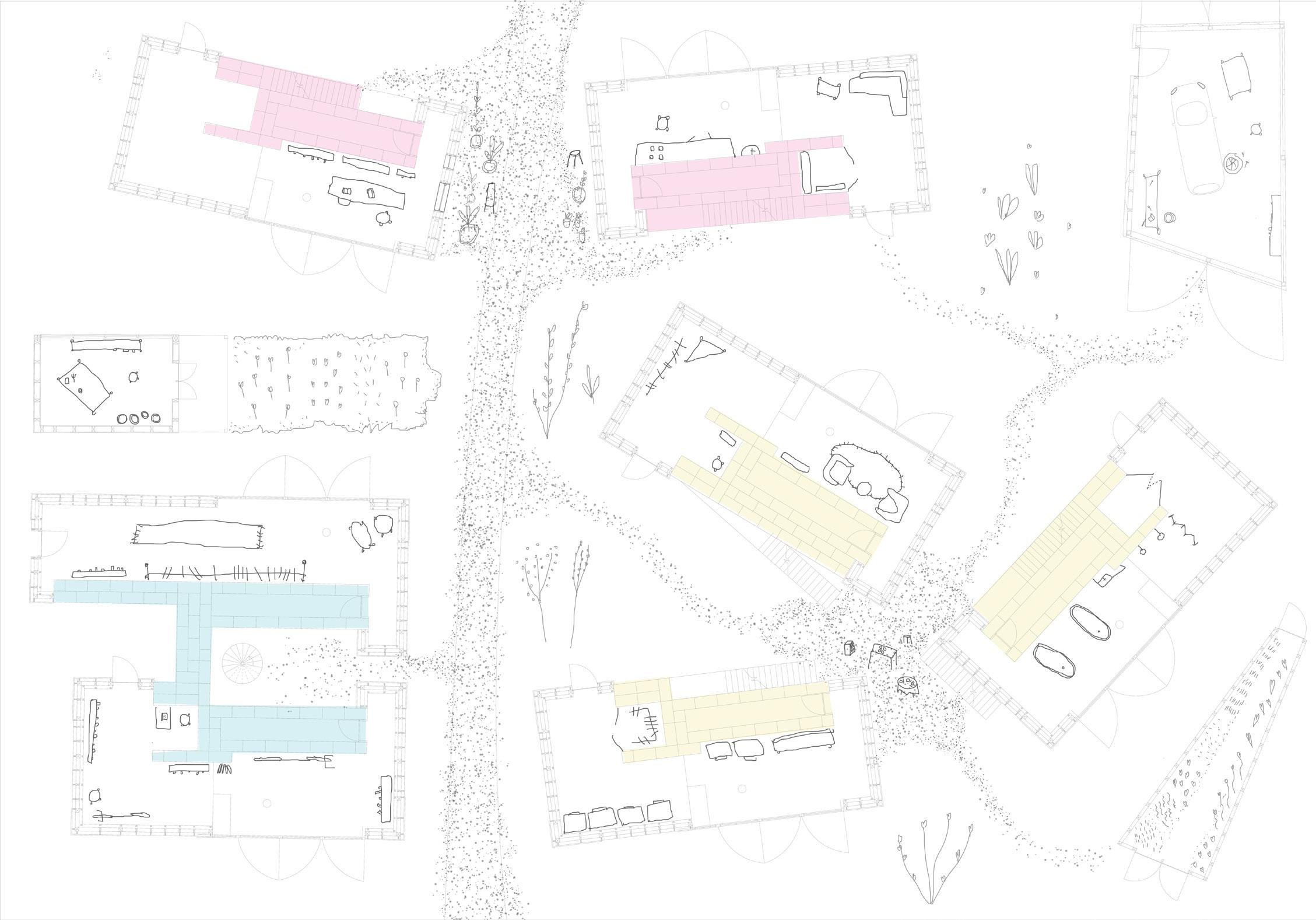 Siūlomos gatvės fragmento planas.
Siūlomos gatvės fragmento planas.

Pečius kaip erdvę formuojantis centrinis elementas.


kaip erdvę formuojantis centrinis elementas.
Pečius
Suformuota gatvė pėstiesiems bei dviračiams.


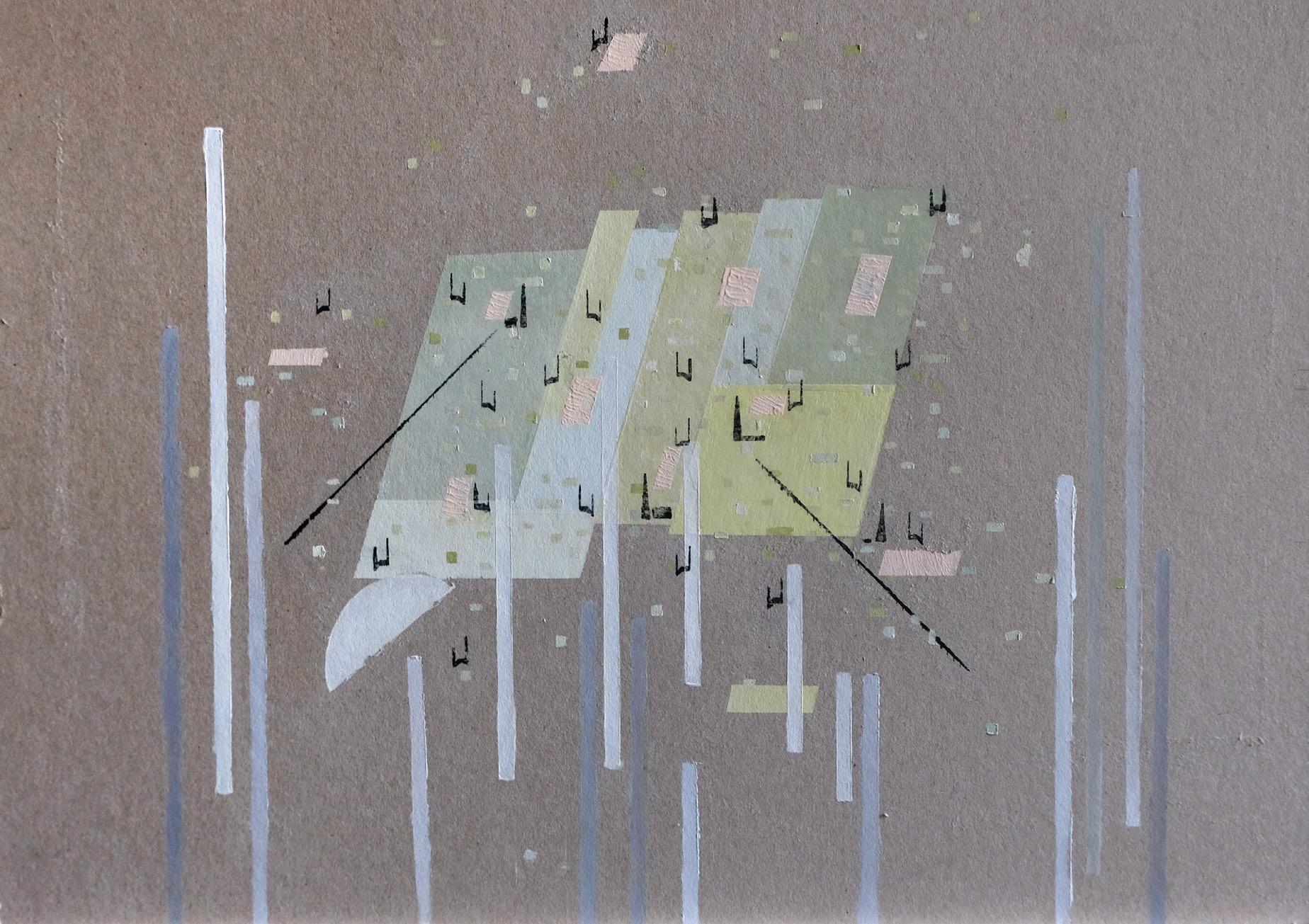
Matoma konceptuali diagrama: dangoraičių užnugaryje matomos medinės Šnipiškės bei jose esantys pečiai. Diagrama vaizduoja sistemos idėją jog iš verslo saloje esančių duomenų centrų galima būtų pernaudoti šilumą bei tiekti ją naujai pastatytiems gyvenamiesiems namams.
Matoma tiksli inžinerinė diagrama: Diagrama vaizduoja tš verslo saloje esančių duomenų centrų galima būtų pernaudoti šilumą bei tiekti ją naujai pastatytiems gyvenamiesiems namams.
Projektas labiausiai tikėtina, jog būtų inicijuojamas savivaldybės, tačiau galimos investicijos galimai taip pat ateitų iš žaliosios energijos tiekėjų norinčių prisidėti prie energijos pernaudojimo iš verslo salos įgivendinimo, pačių įmonių bei įstaigų supančių rajoną norinčių prisidėti prie žaliojo energijos tinklo įgyvendinimo, Europos Sąjungos lėšos norint prisidėti prie naujos Eco-Village “medinės Šnipiškės” vystymosi.
Dėl skirtingų finansavimo šaltinių šis projektas yra planuotas žingsniais: Pirmas žingsnis yra šilumos ir vandentiekio atvedimas, pačio pečiaus su šilumos sistemomis statymas ir tik tada namo išorės bei grindinio sprendimai.



Saugumo vaizdo kameros bei priešgaisrinės sistemos.



Gatvės danga bei ją sutvirtinantys gaminiai.


Blokų pečiaus statymui sutvirtinantys mišiniai.


baterijų sistemos bei jų dalys.
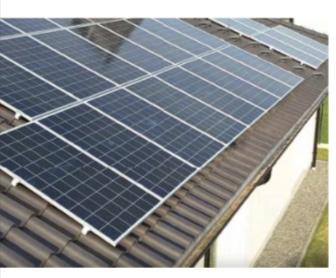 Saulės
Saulės

 Lauko sporto salės įrenginiai.
Lauko sporto salės įrenginiai.

 Vidaus dangos bei paviršiai.
Vidaus dangos bei paviršiai.

 Lauko fasadų dažai.
Lauko fasadų dažai.

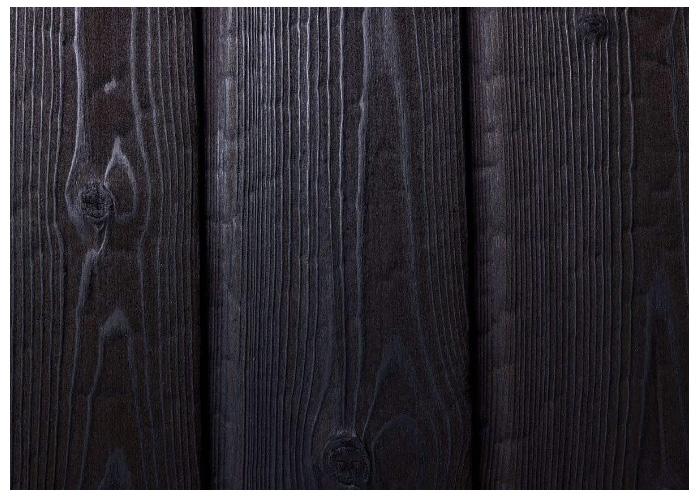 Lauko fasadų danga bei stogų trinkelės.
Lauko fasadų danga bei stogų trinkelės.

Rekuperacinės sistemos.


Priešstatybiniai geodeziniai planai.



 Apšvietimo sistemos kieme ir palei gatvę.
Apšvietimo sistemos kieme ir palei gatvę.

Langų profiliai bei vitrinos.



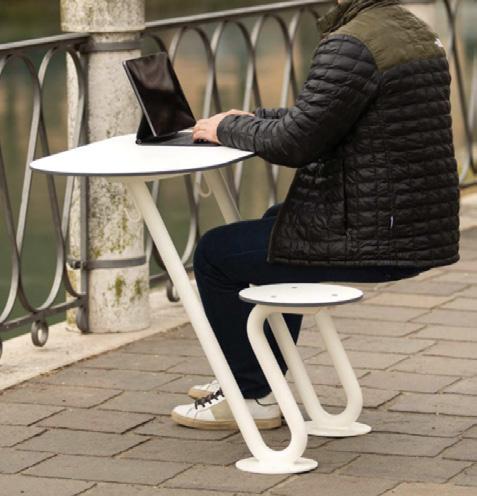

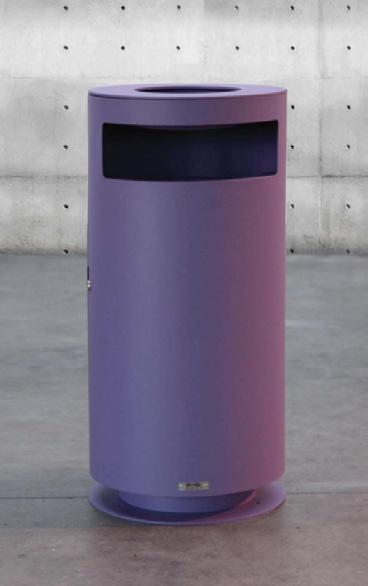

 Kiemo baldai bei įrenginiai, tokie kaip vandens kraneliai.
Kiemo baldai bei įrenginiai, tokie kaip vandens kraneliai.


 Lauko vaikų žaidimo aikštelėms reikalingi garso instrumentai.
Lauko vaikų žaidimo aikštelėms reikalingi garso instrumentai.